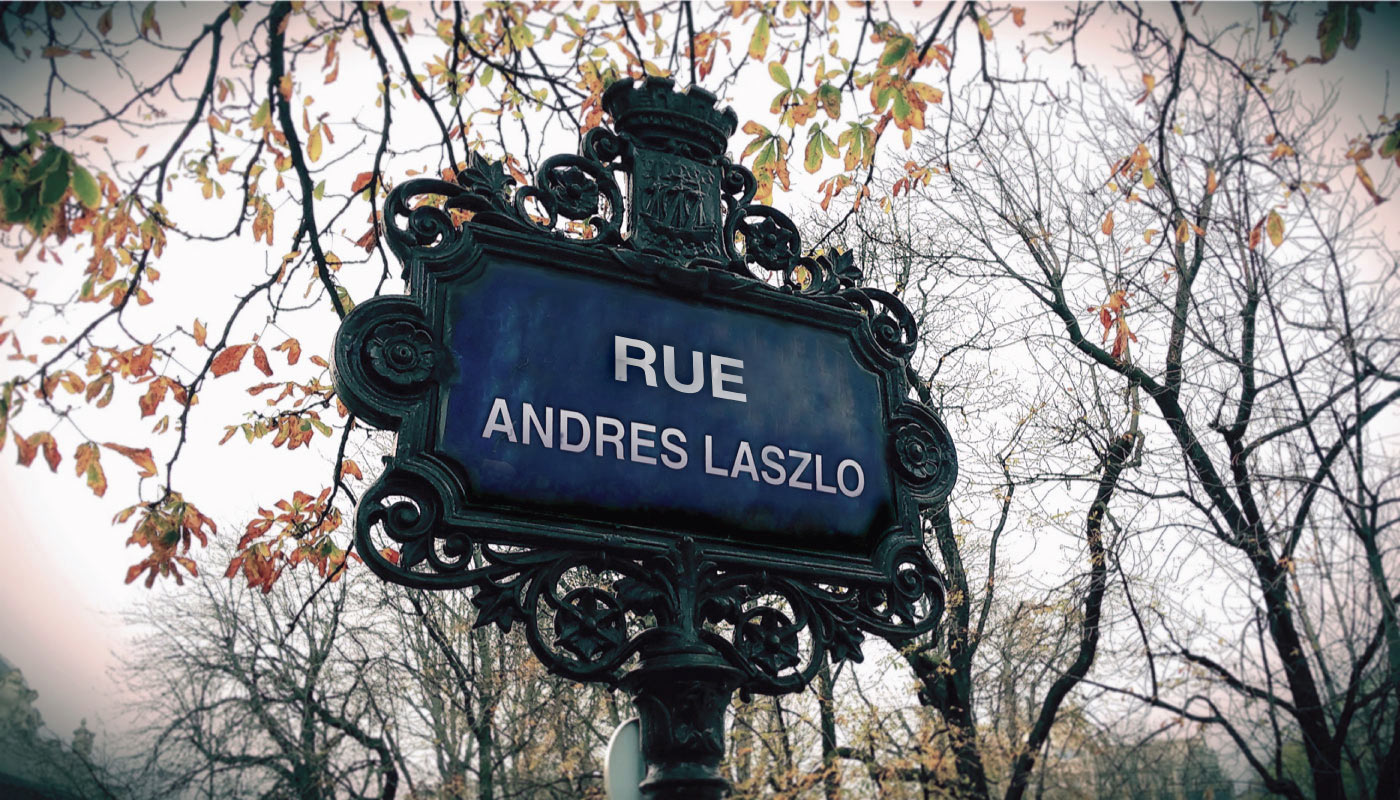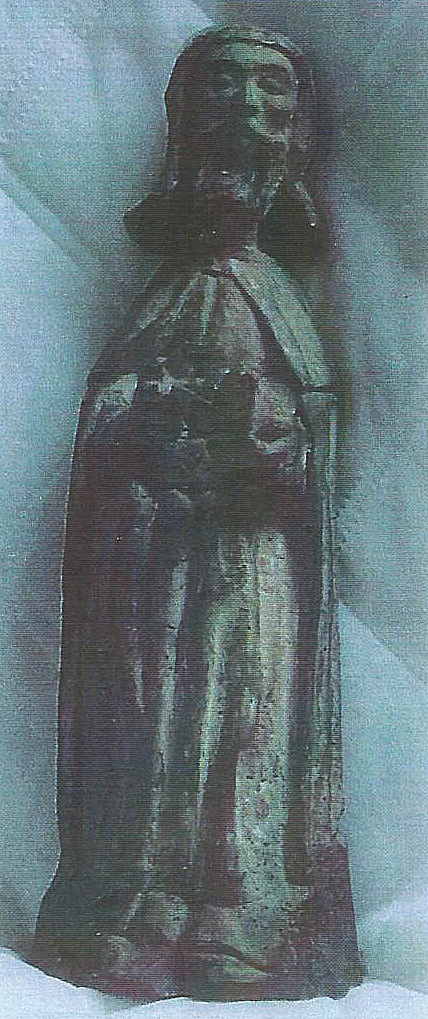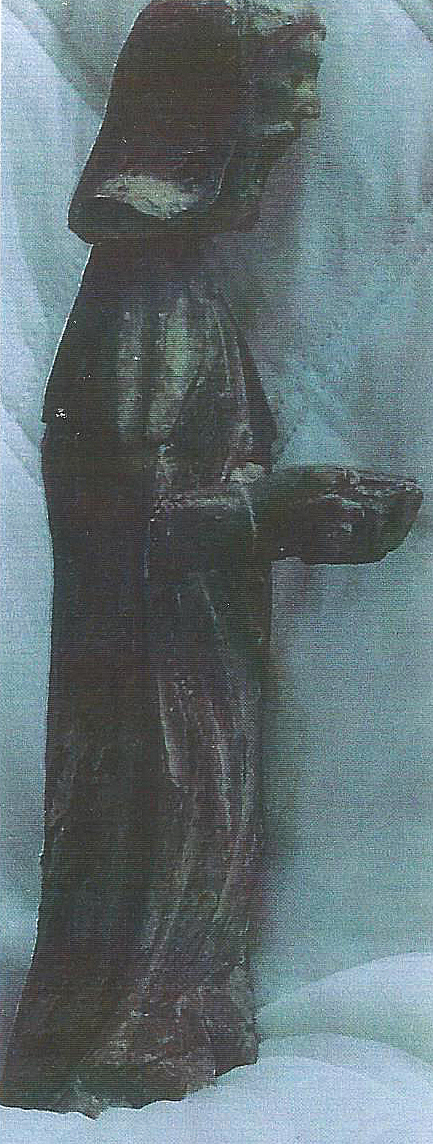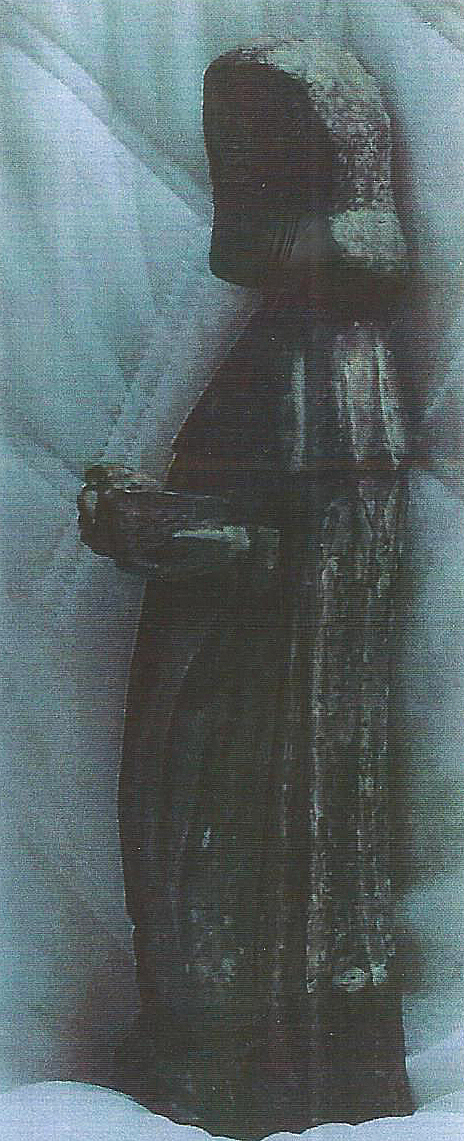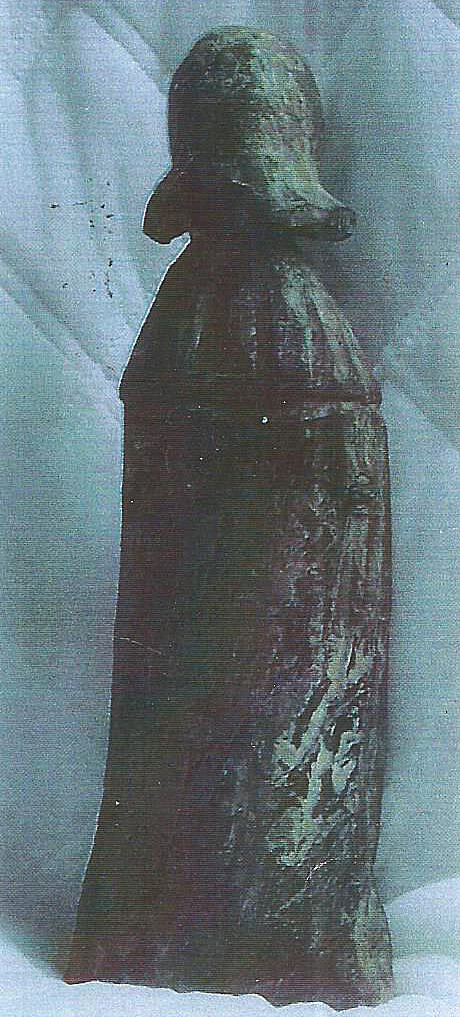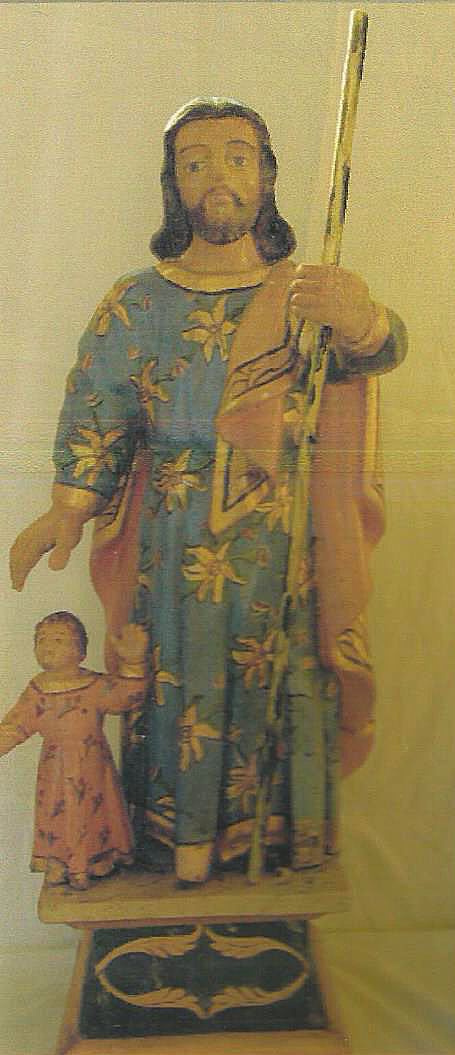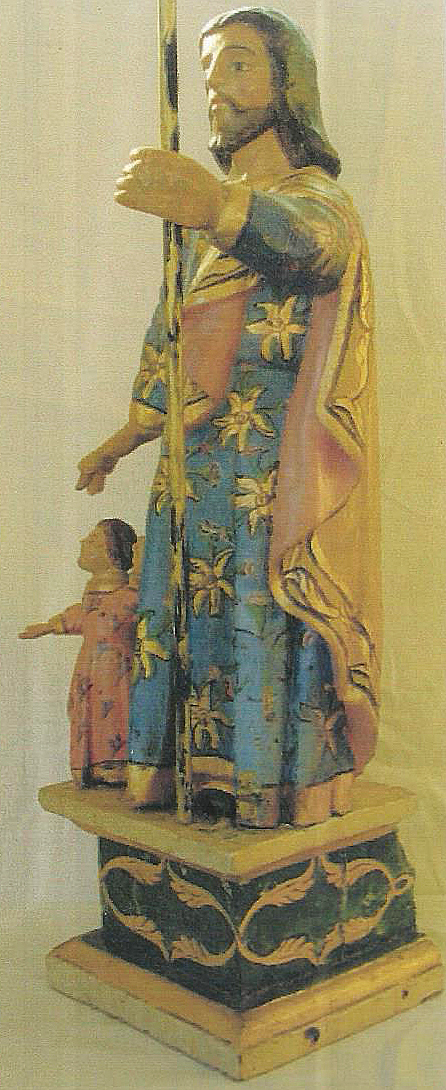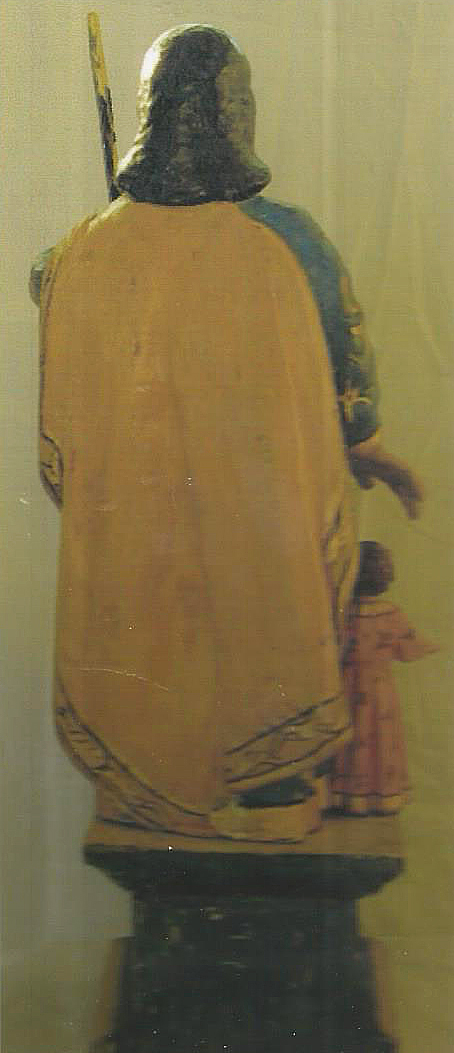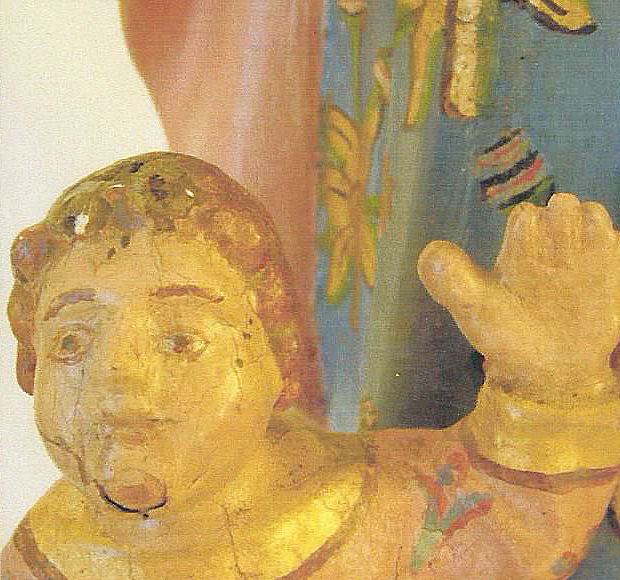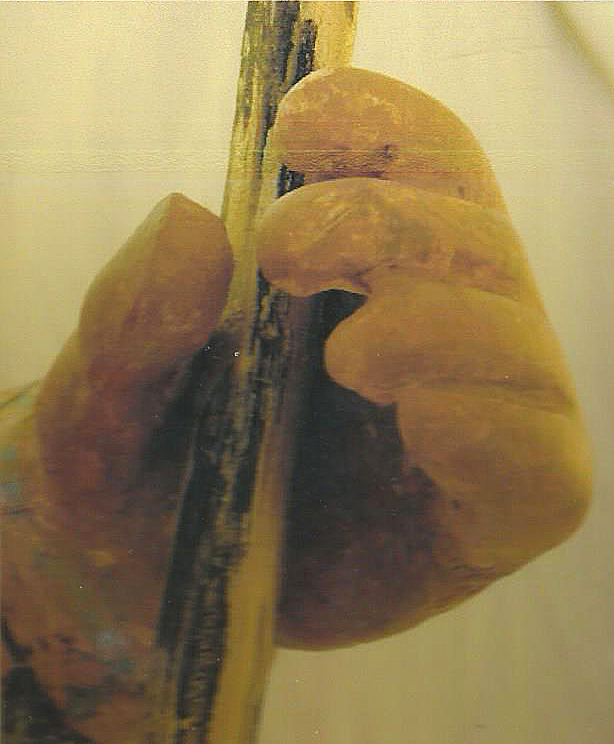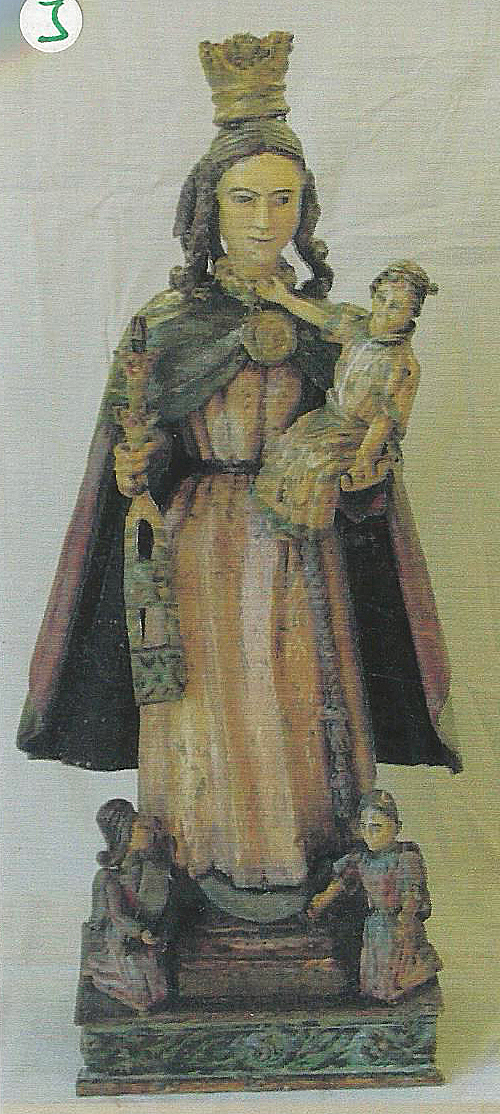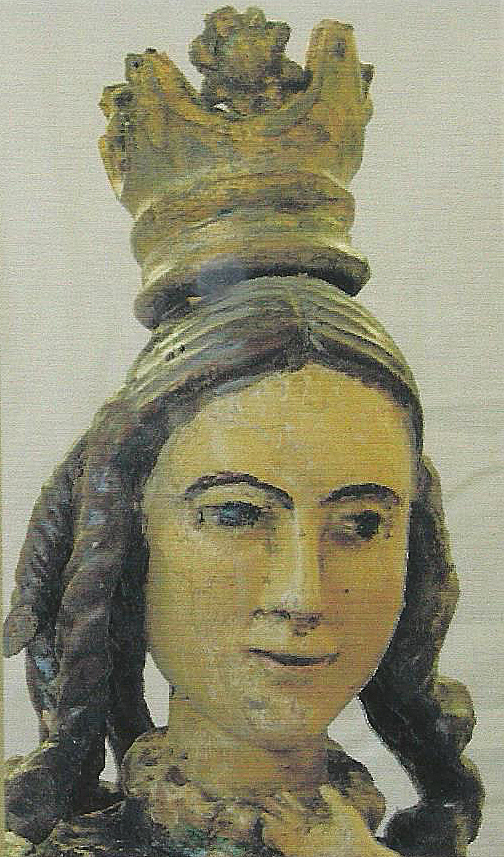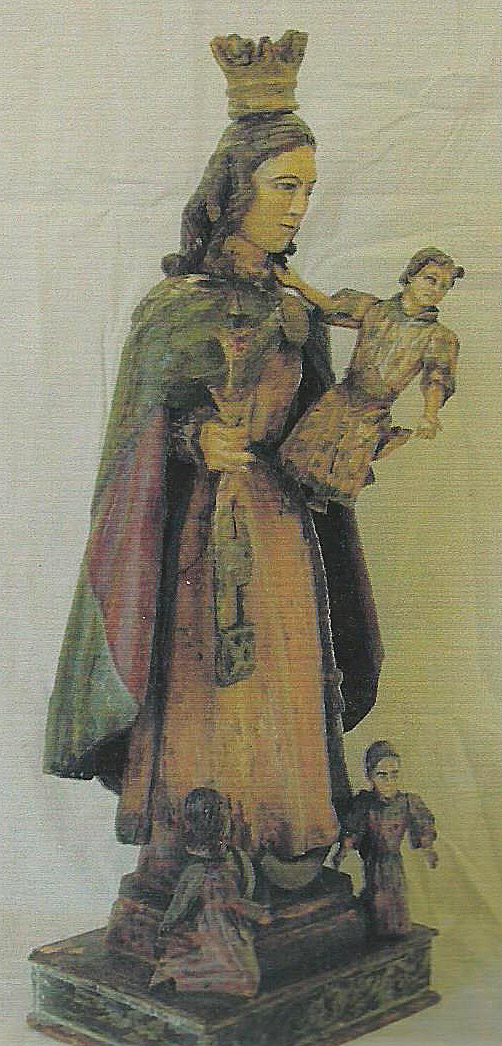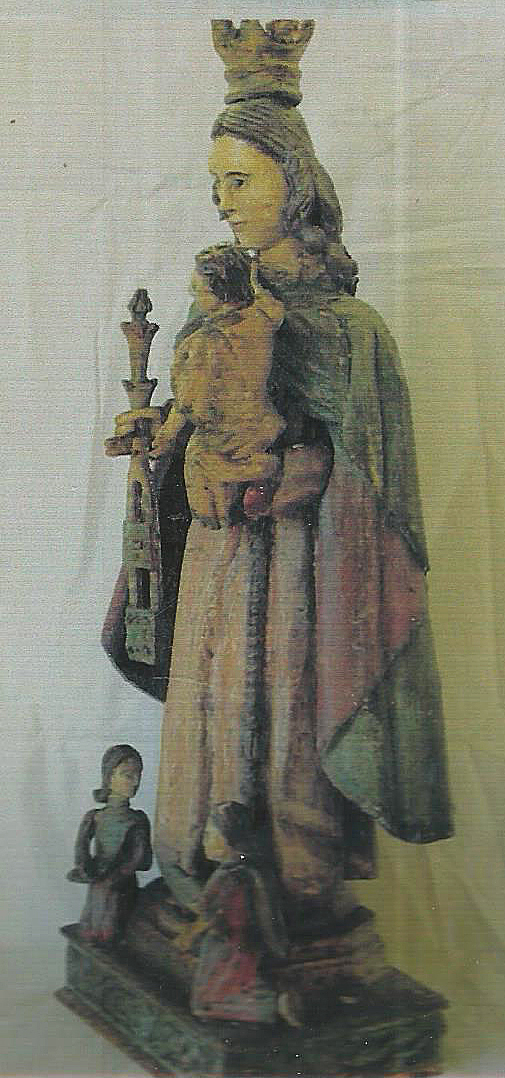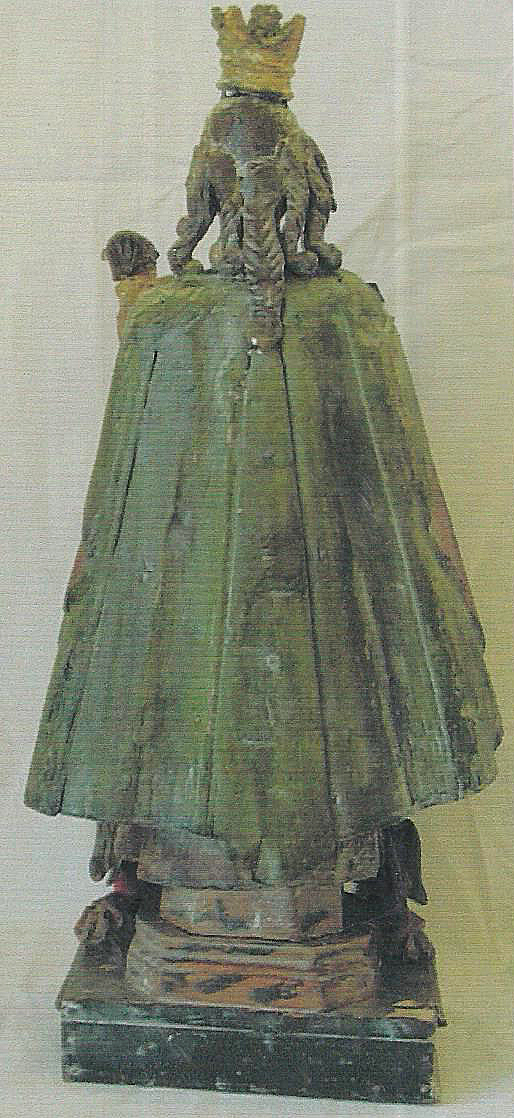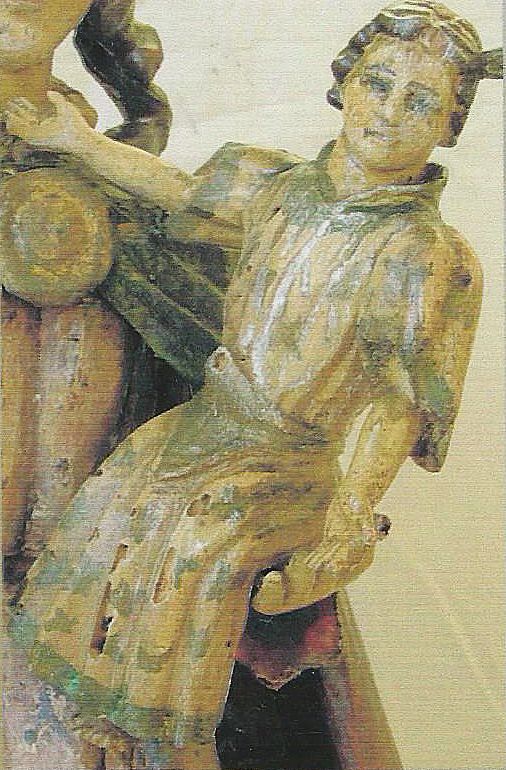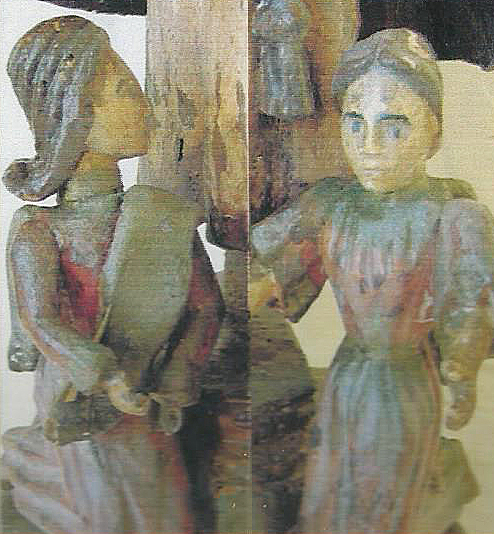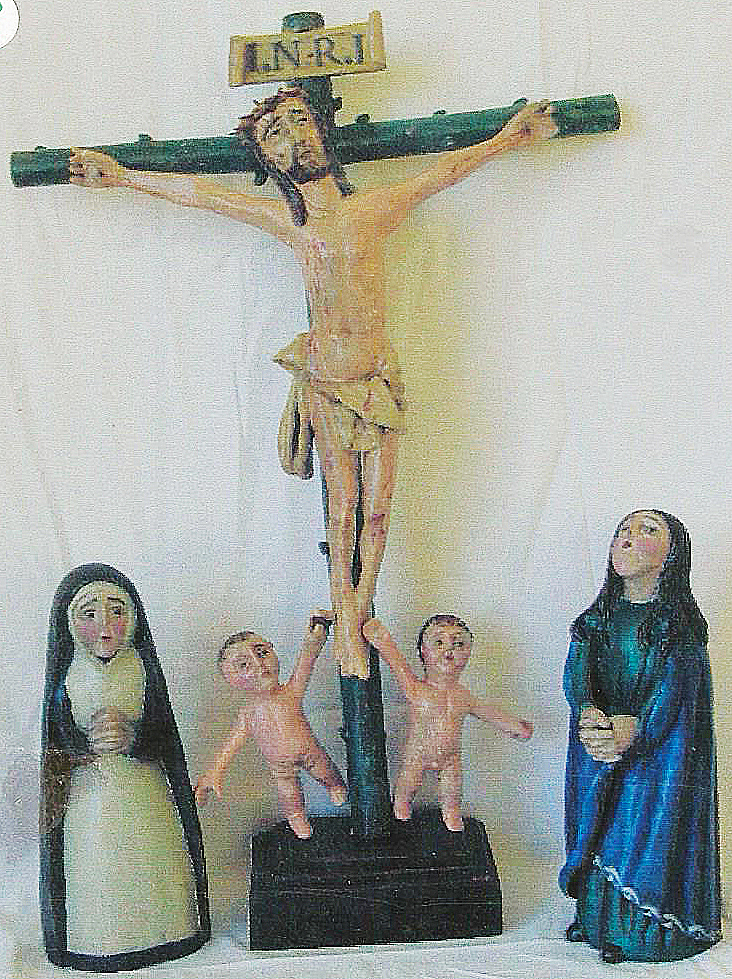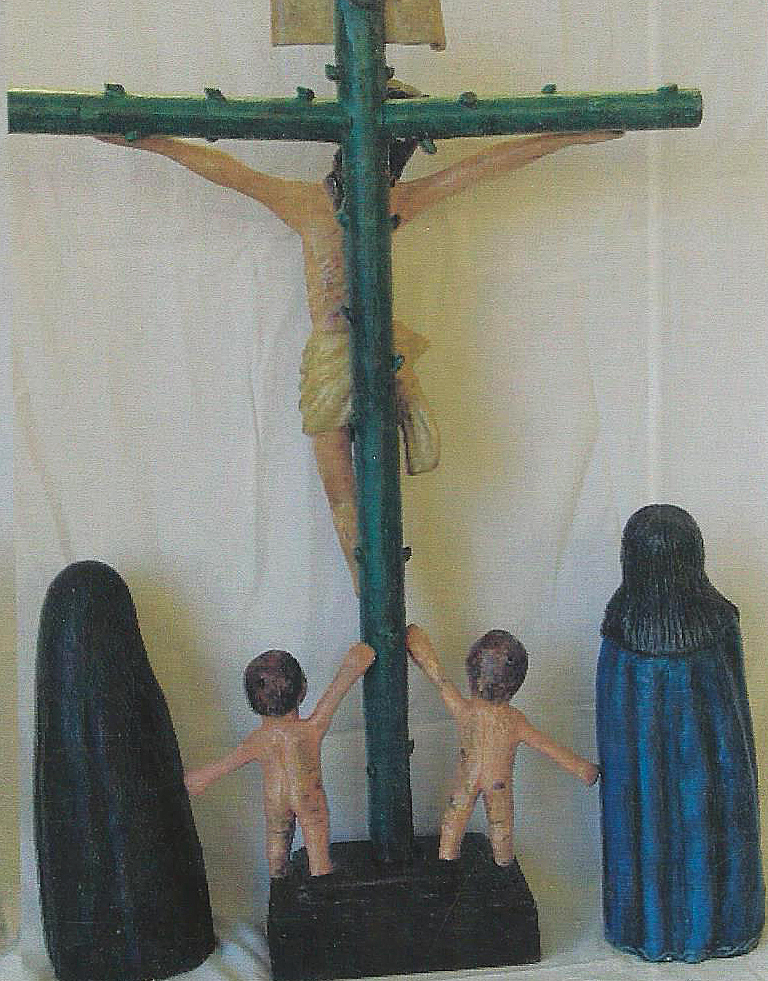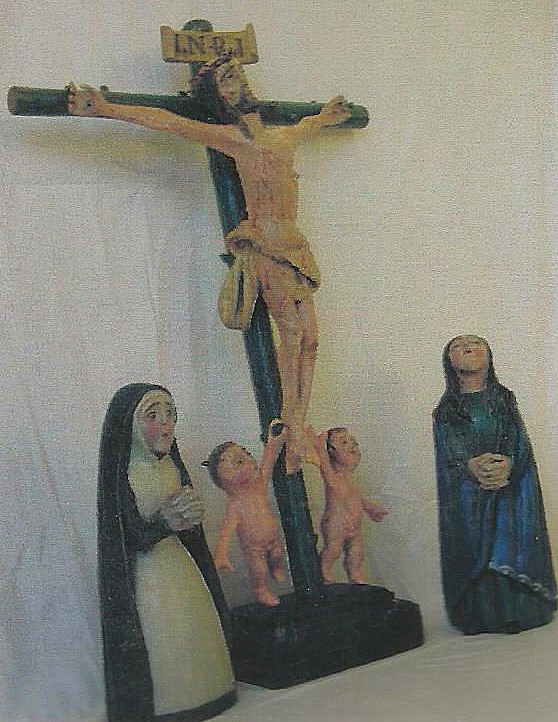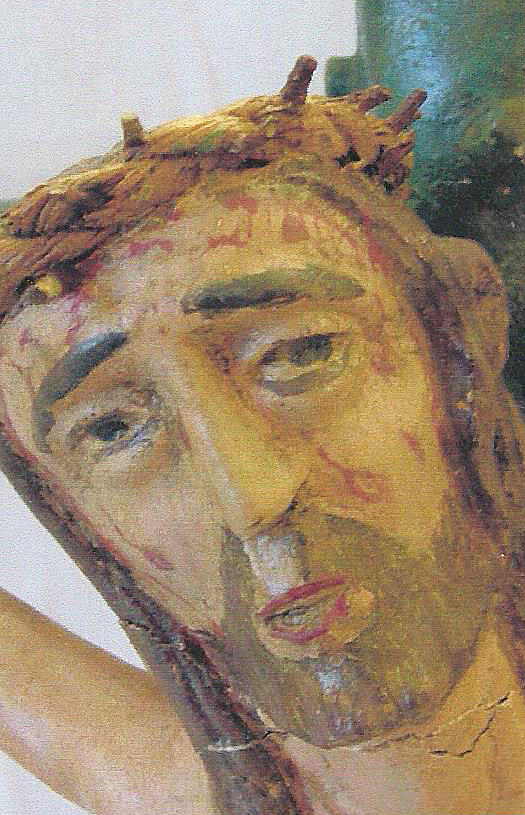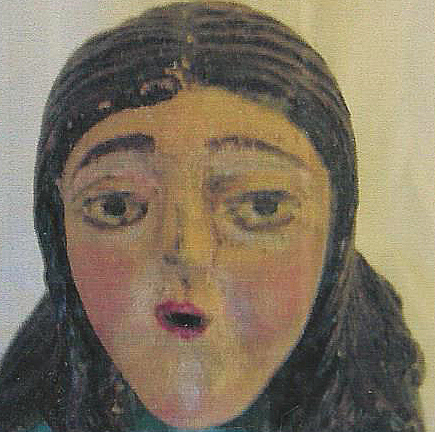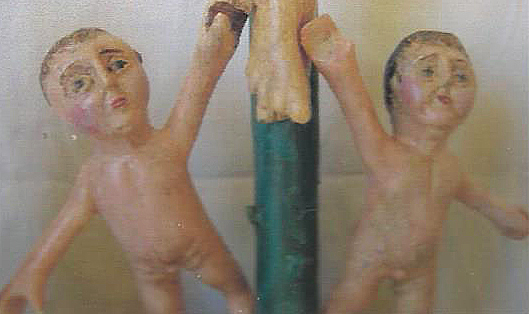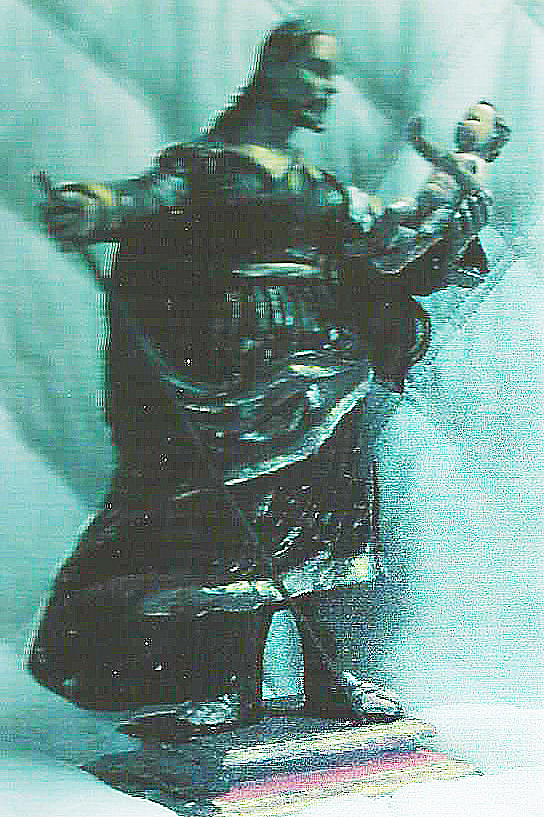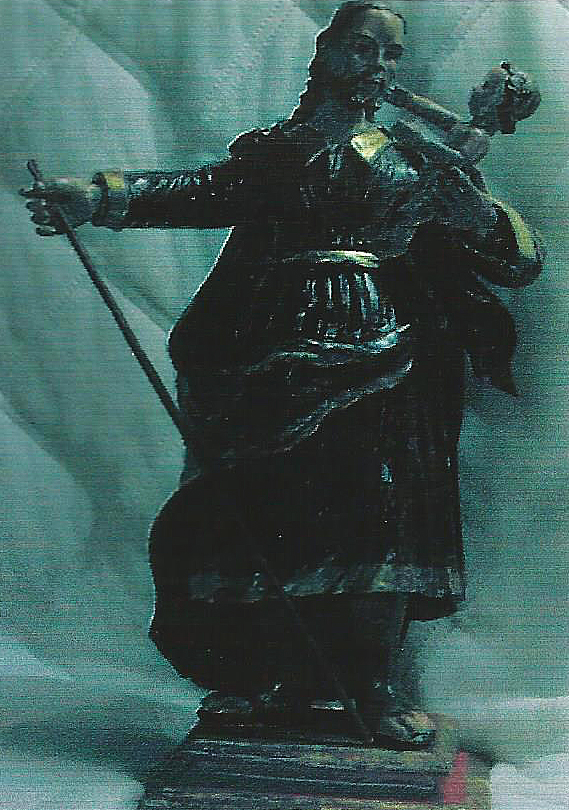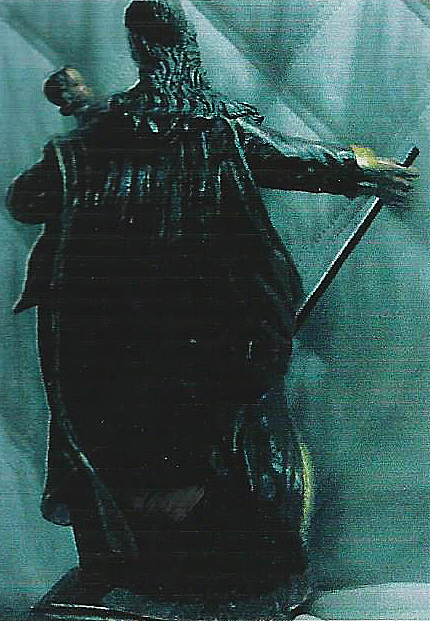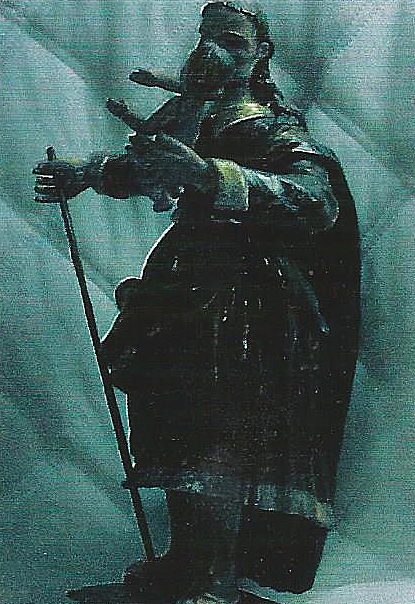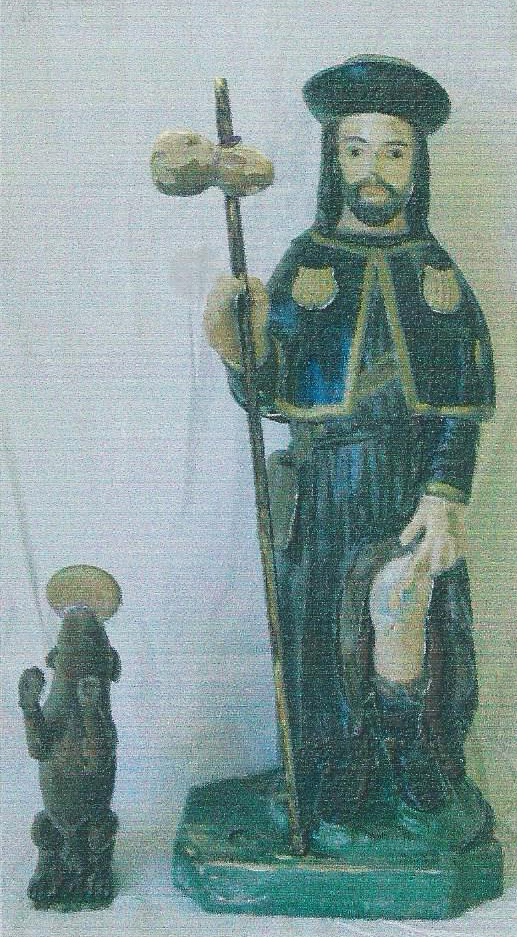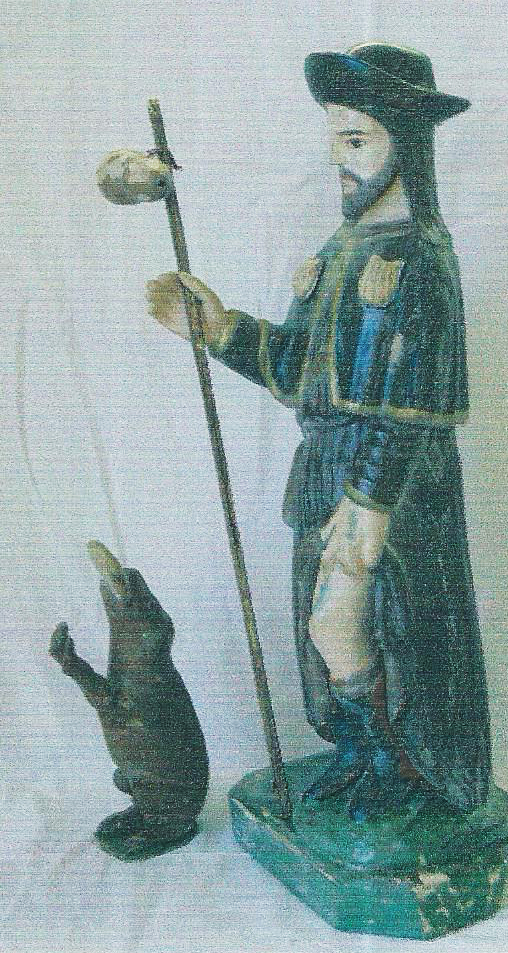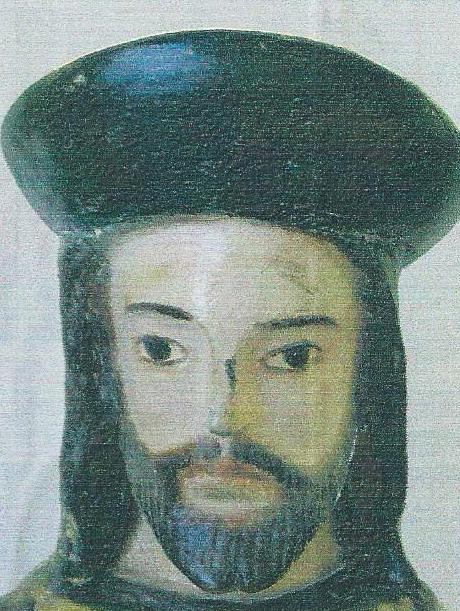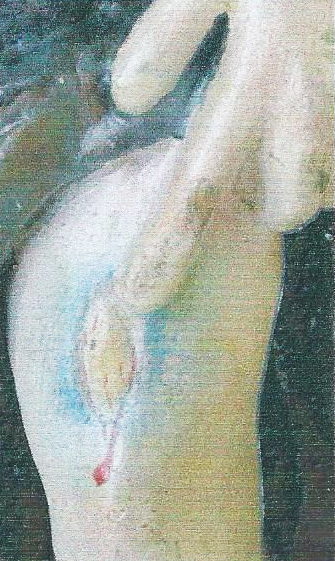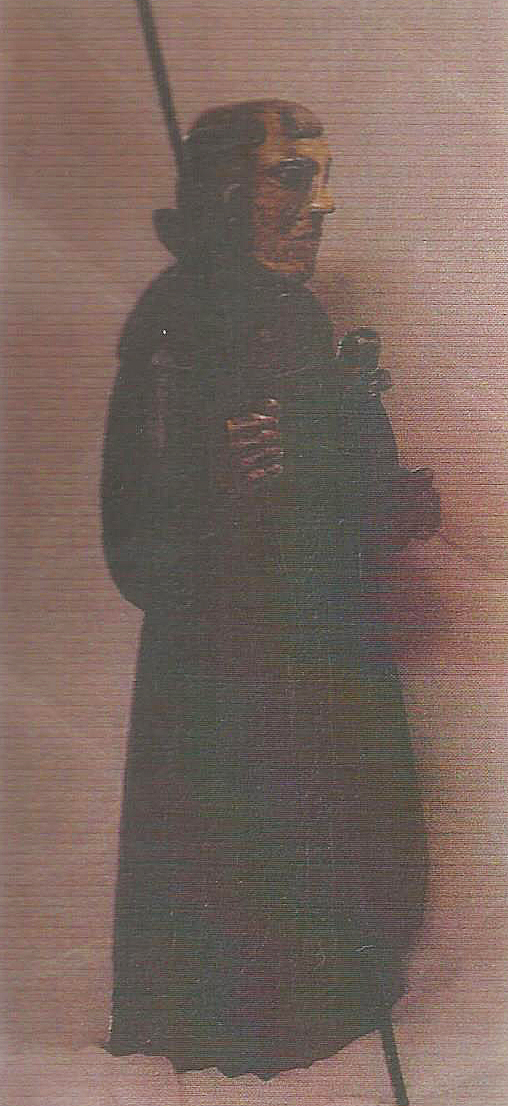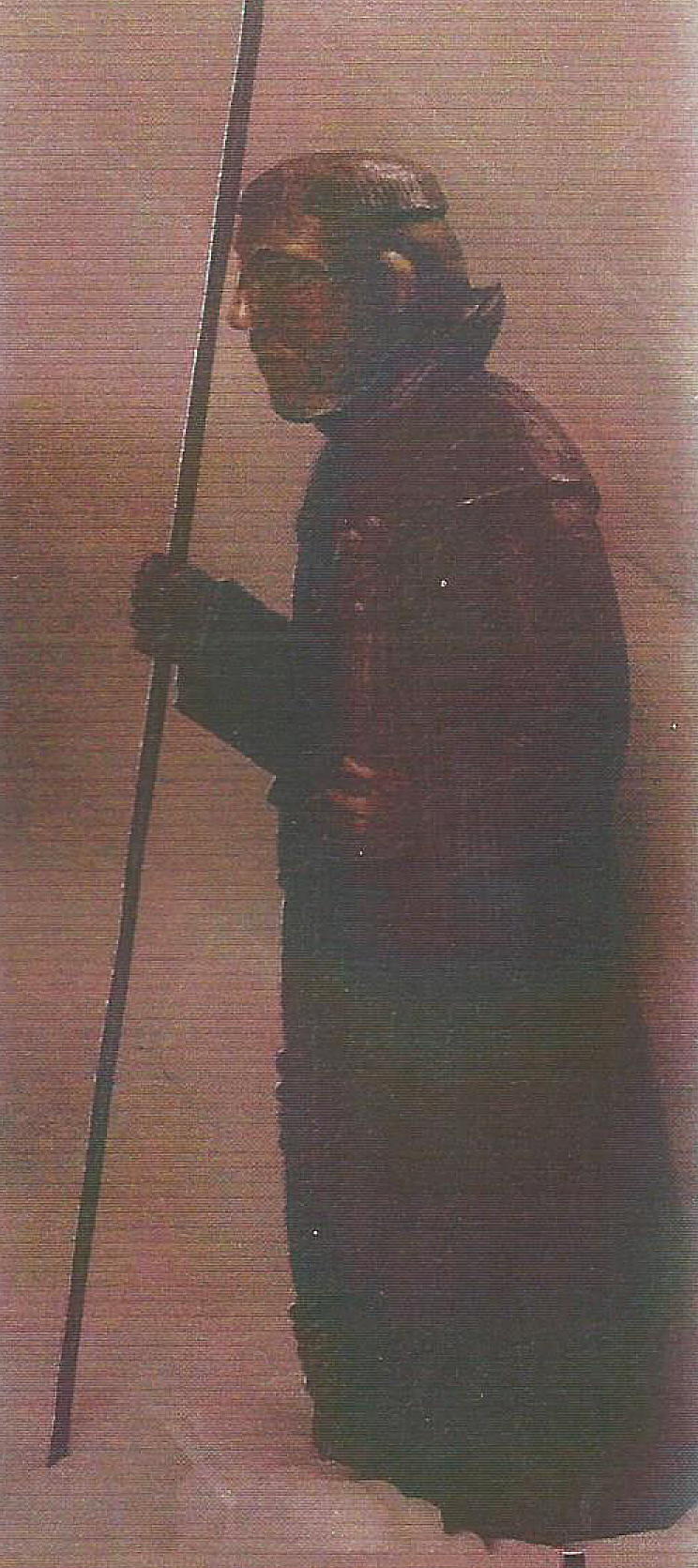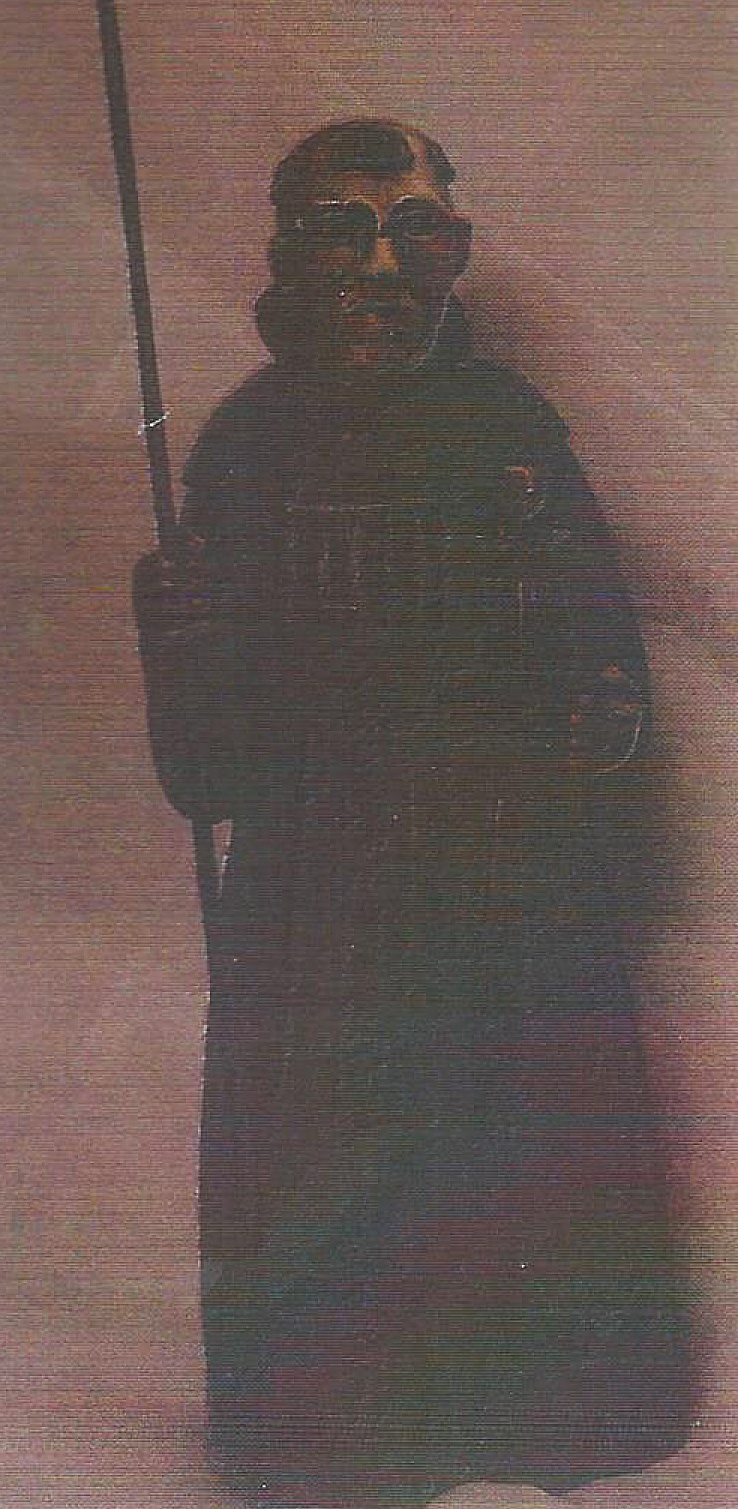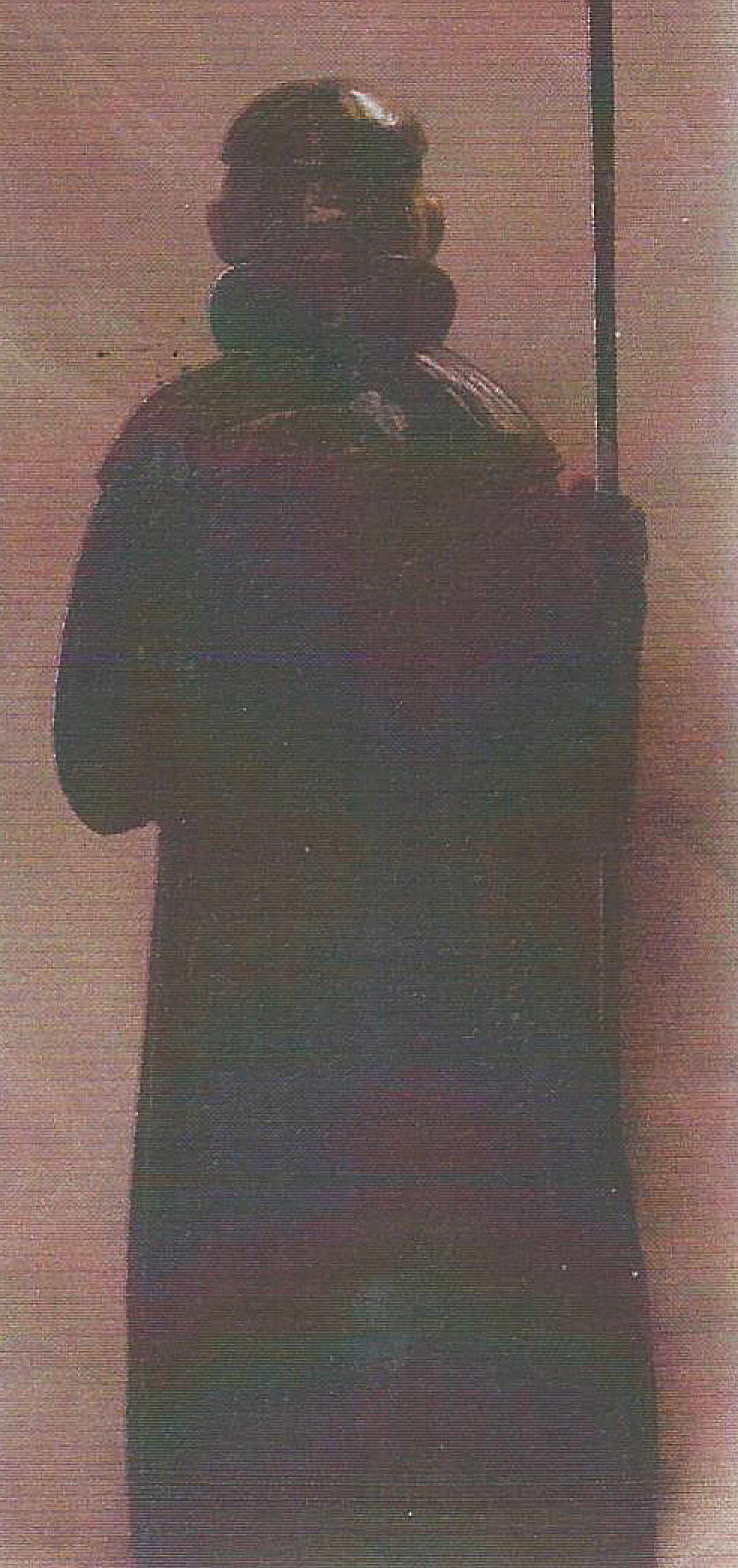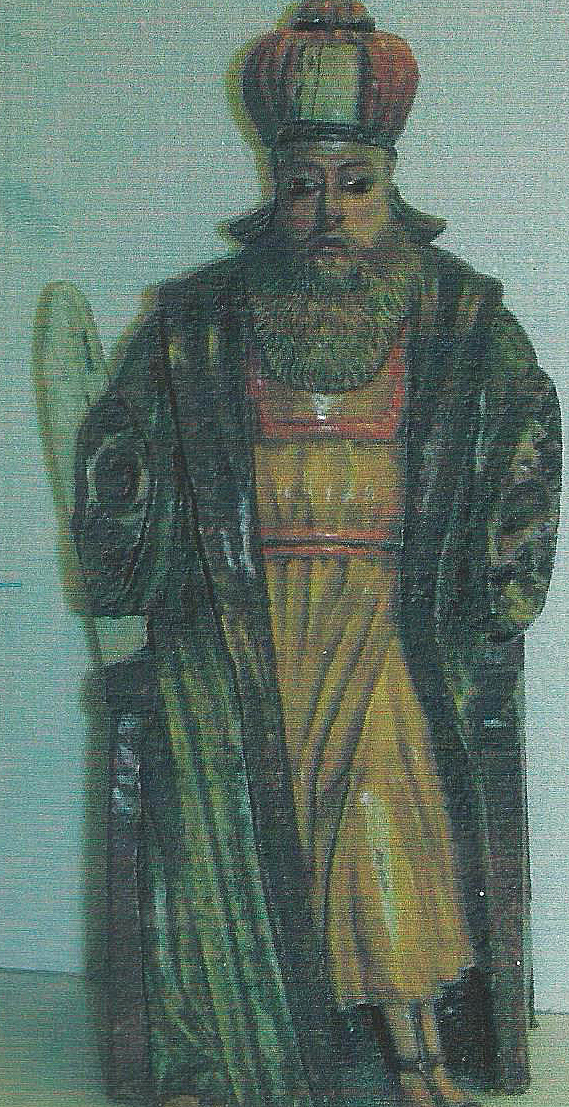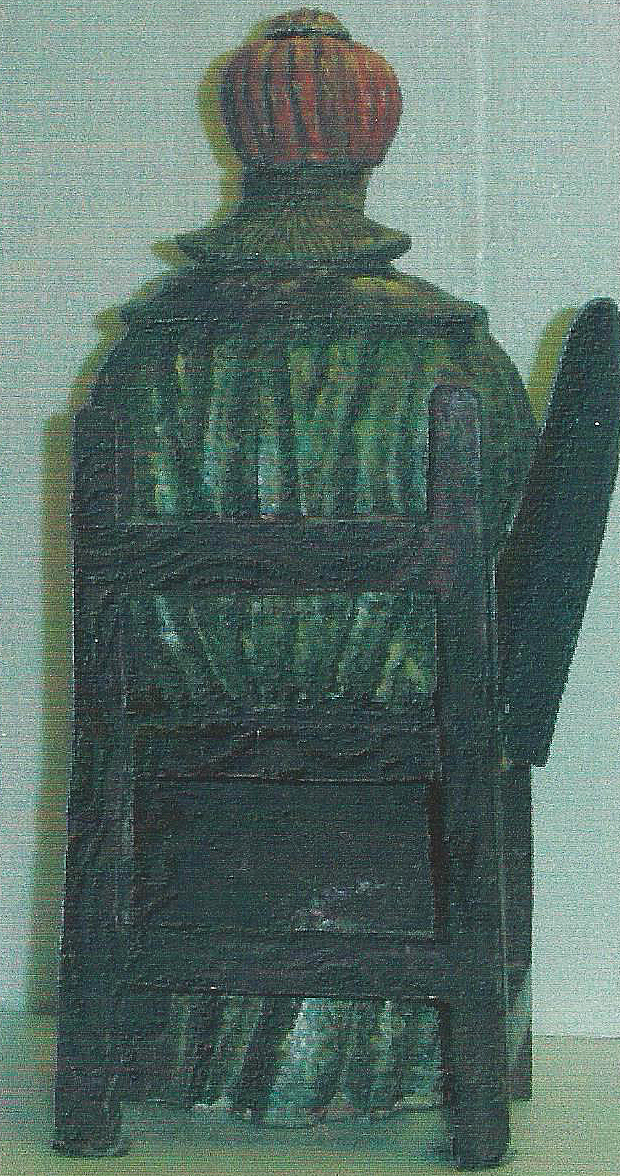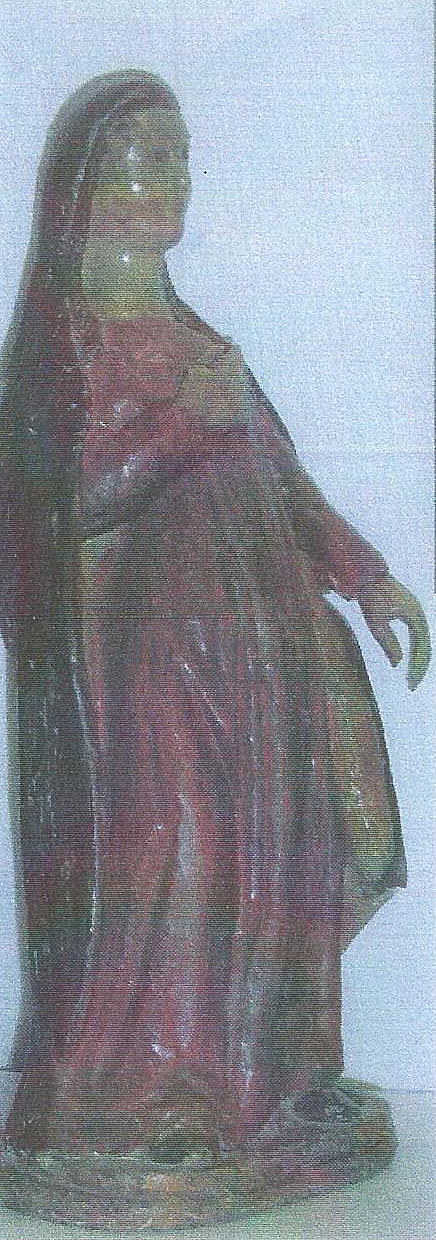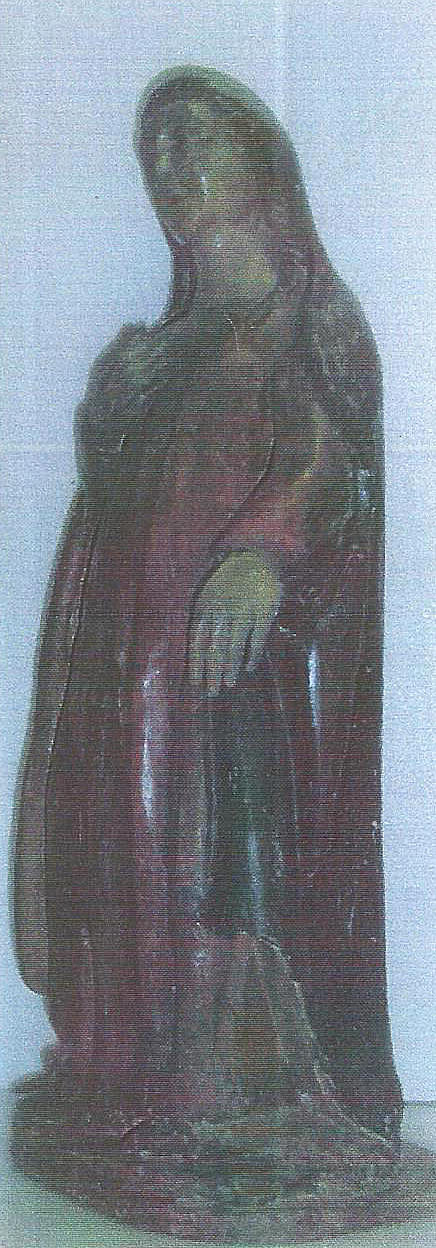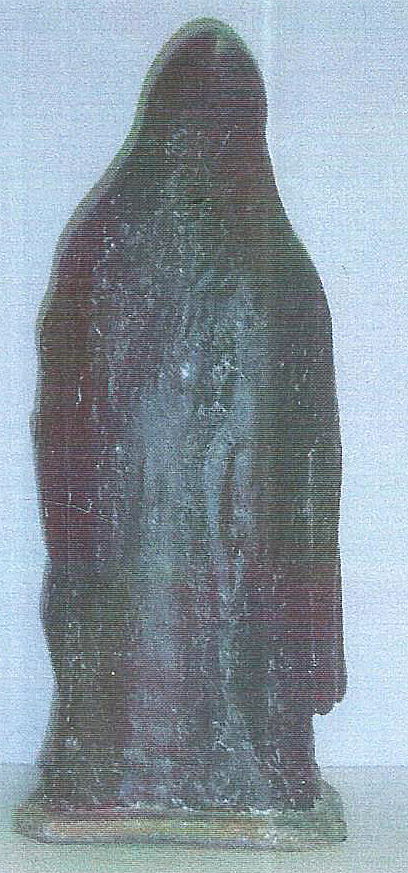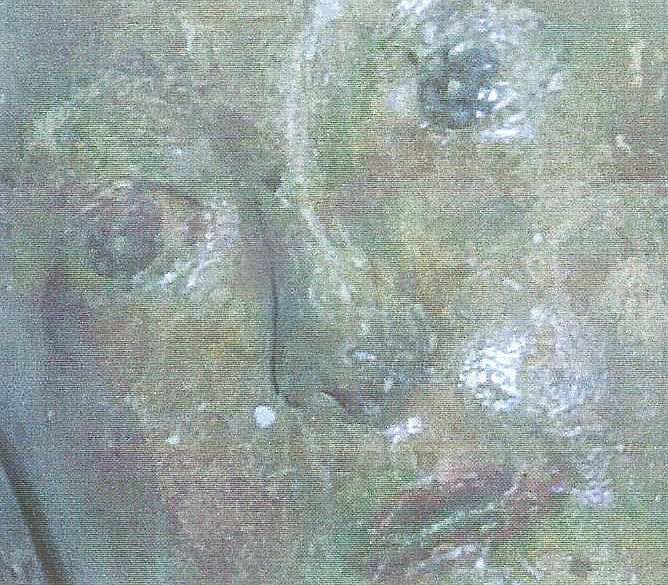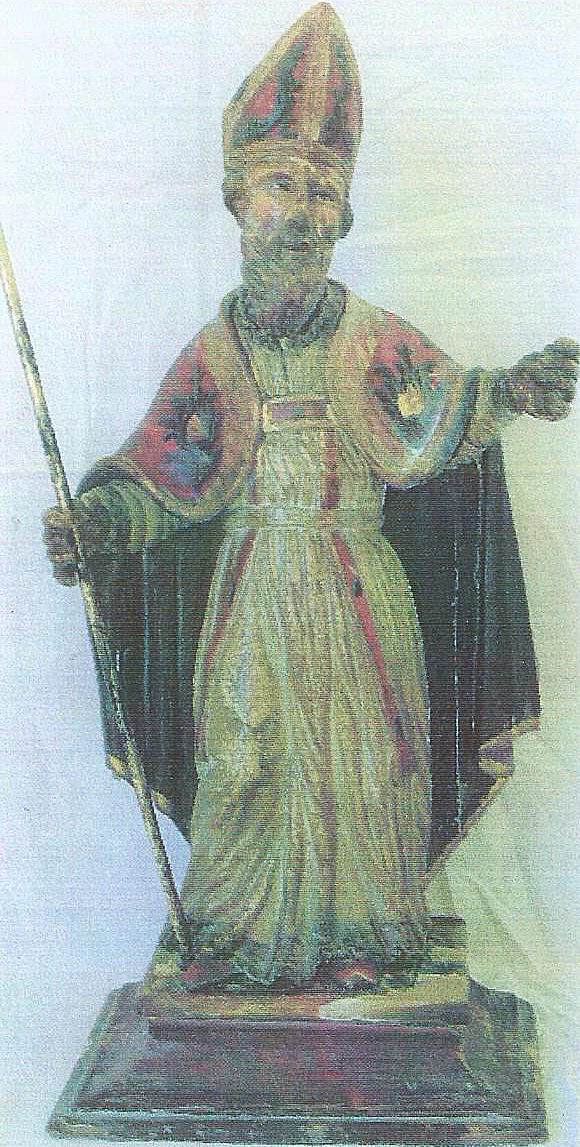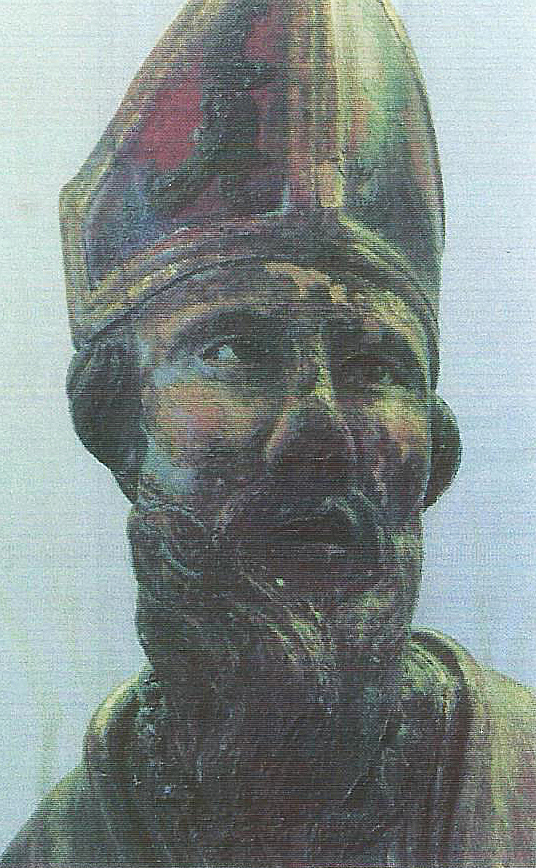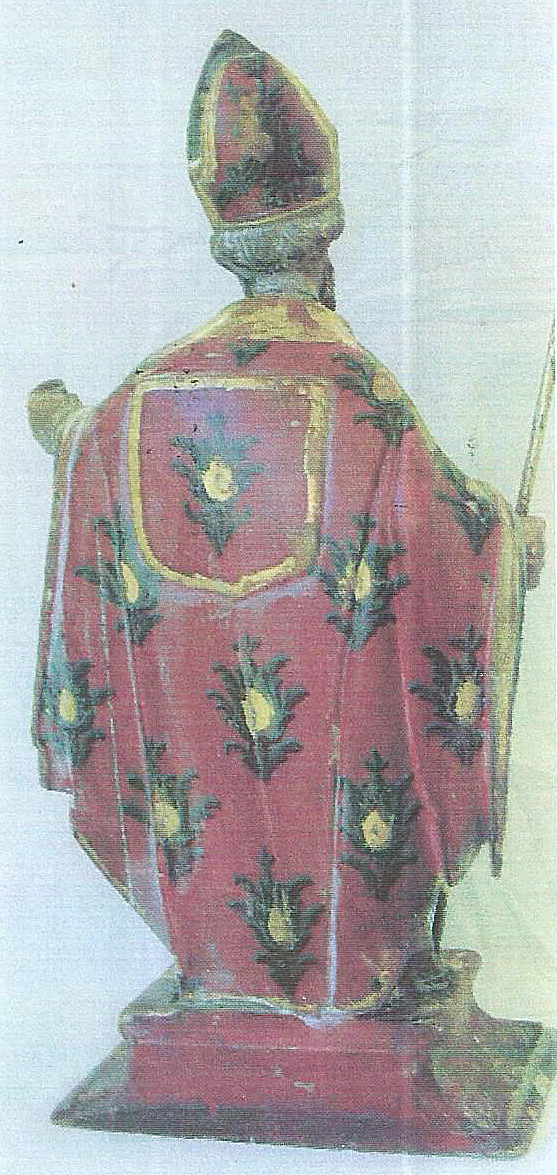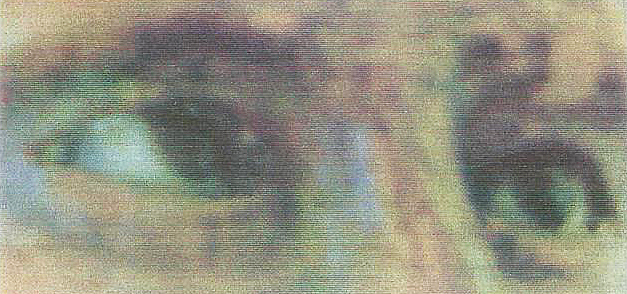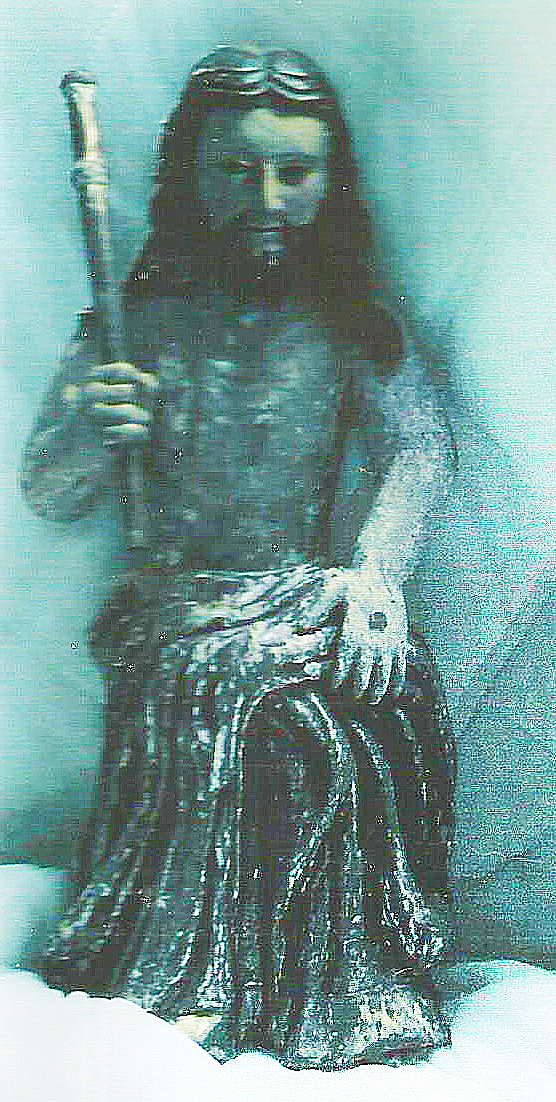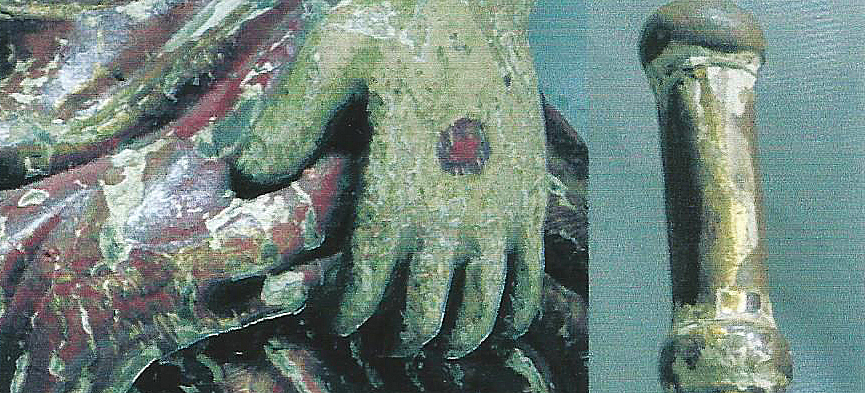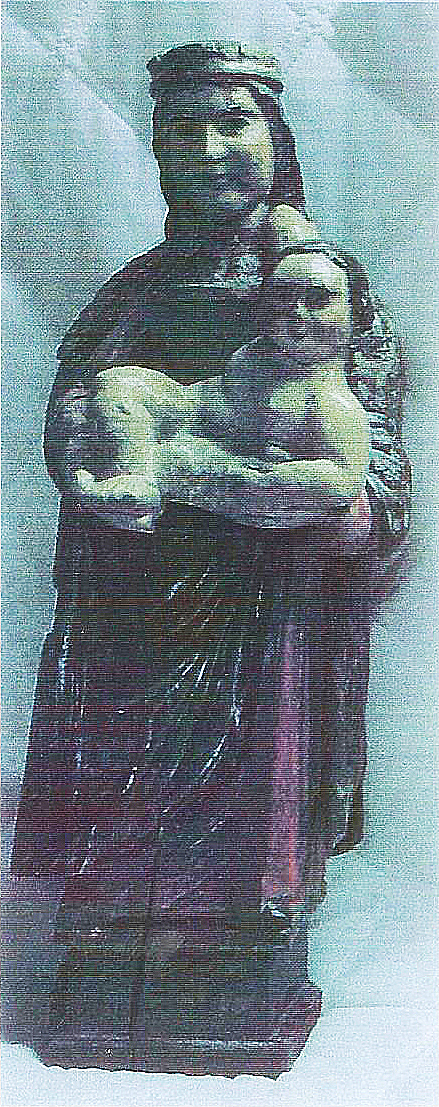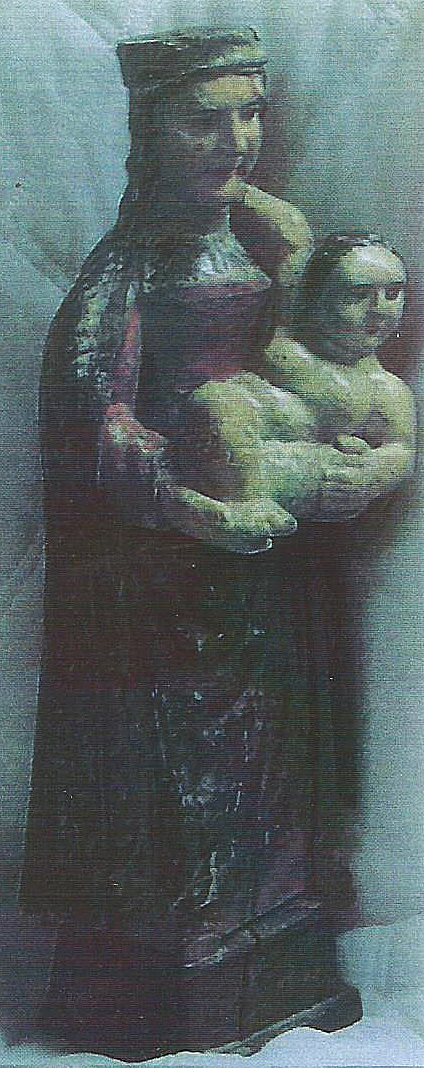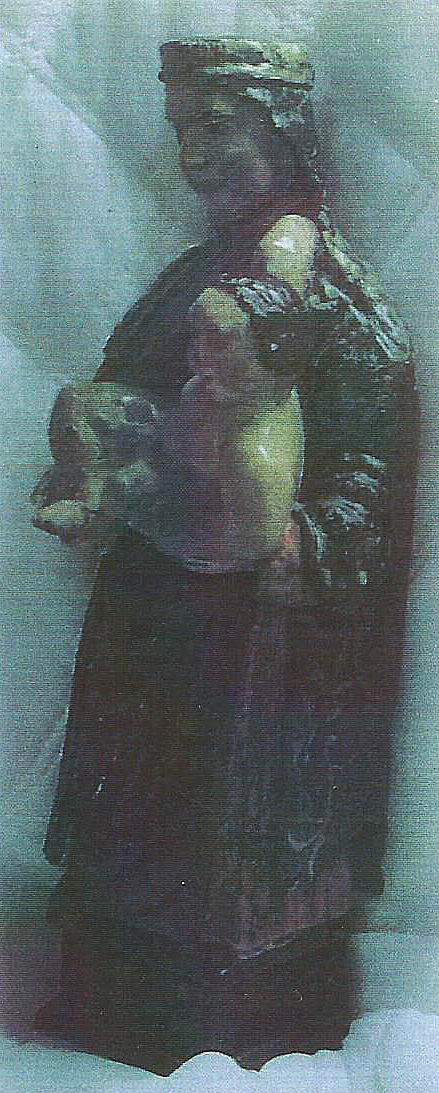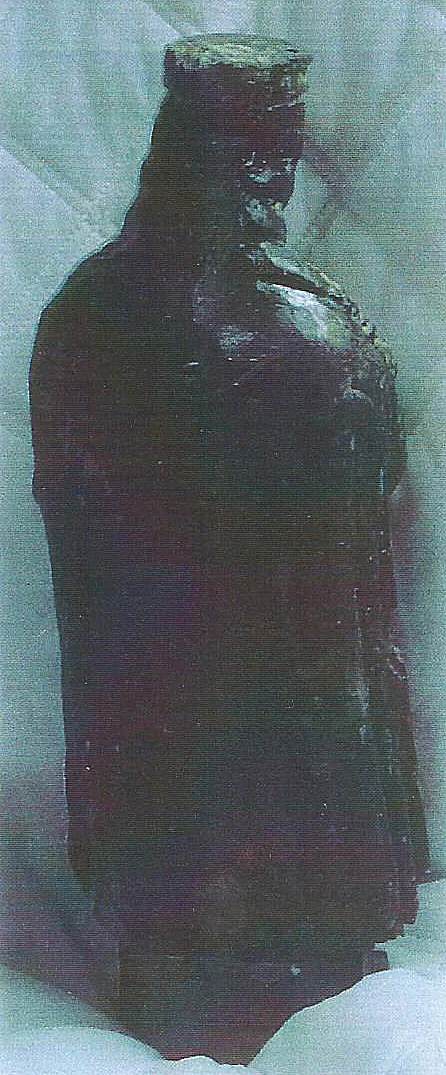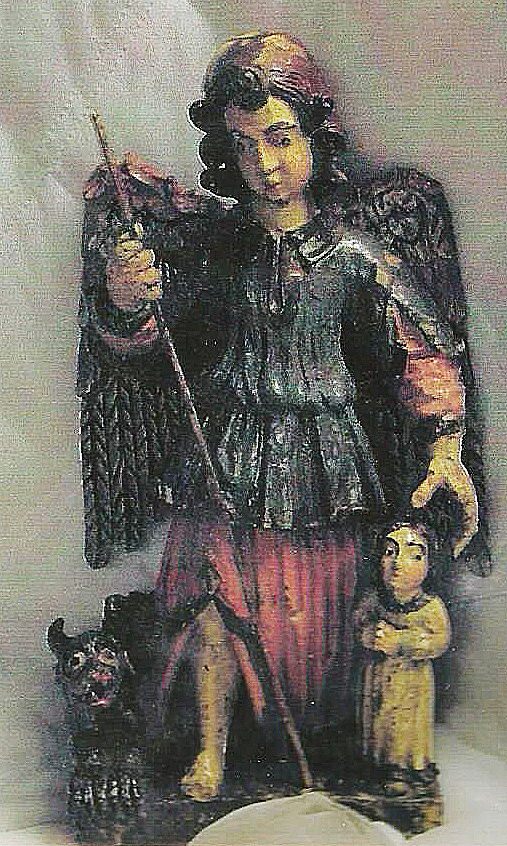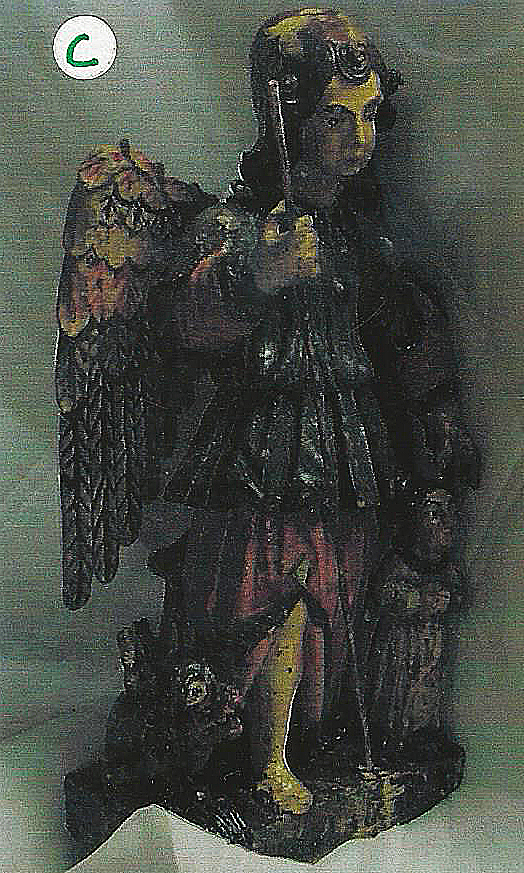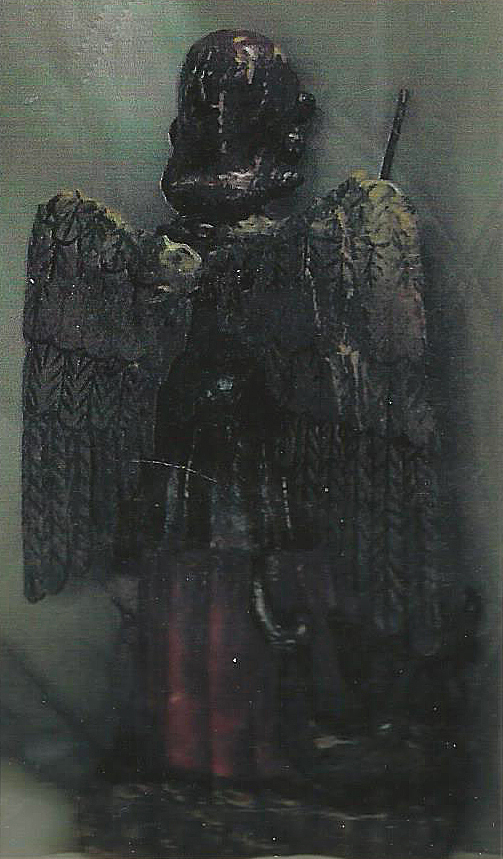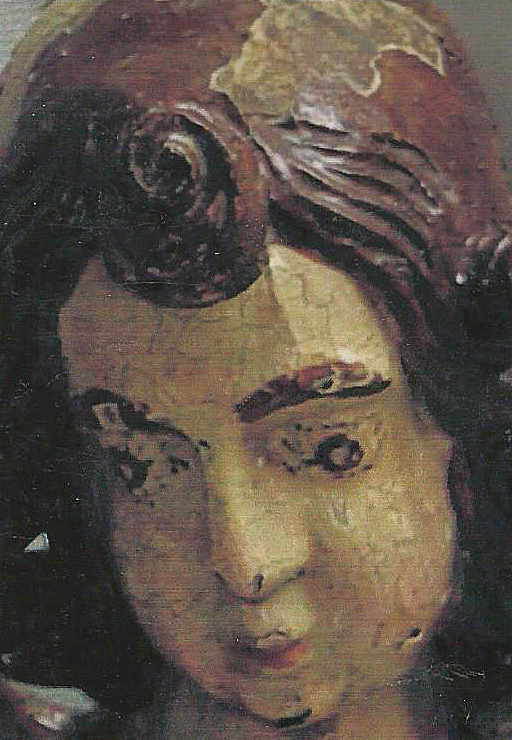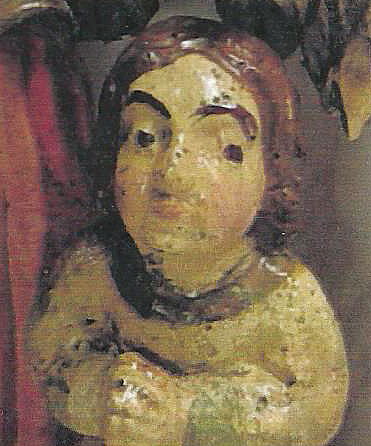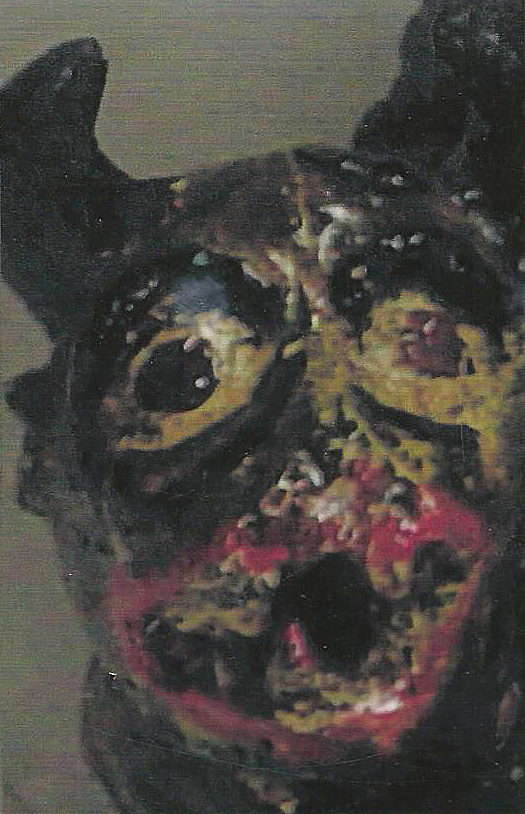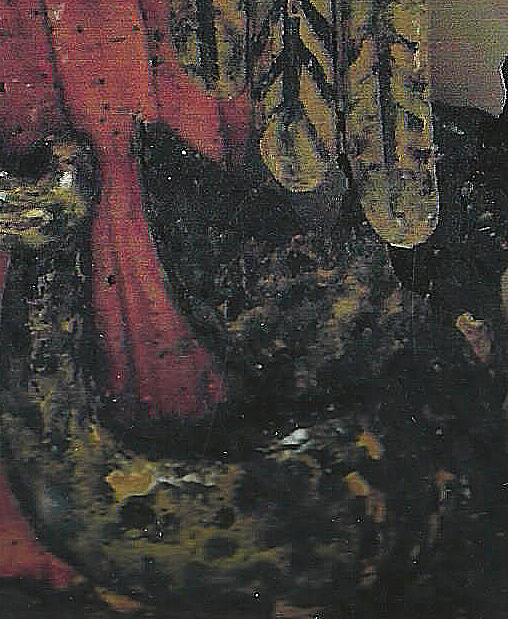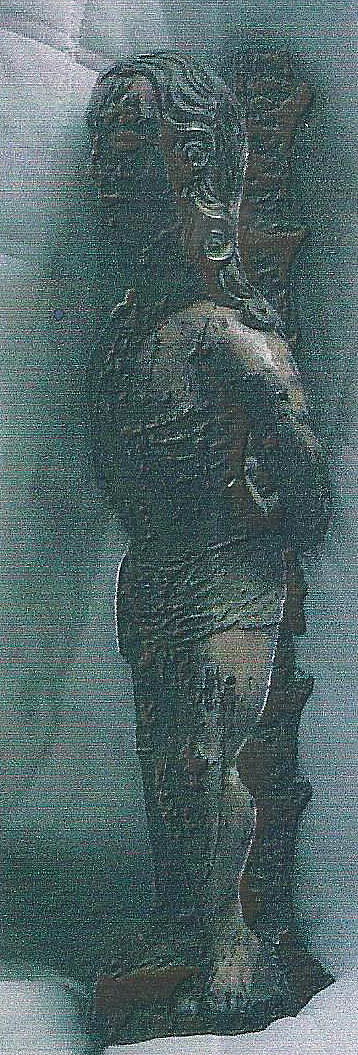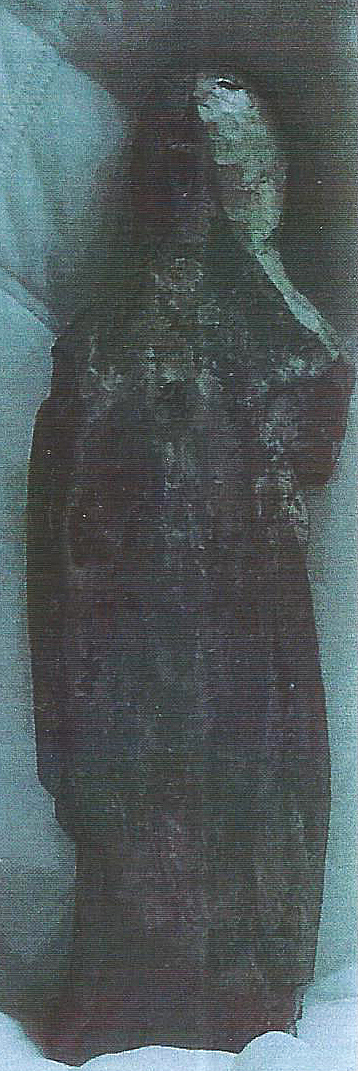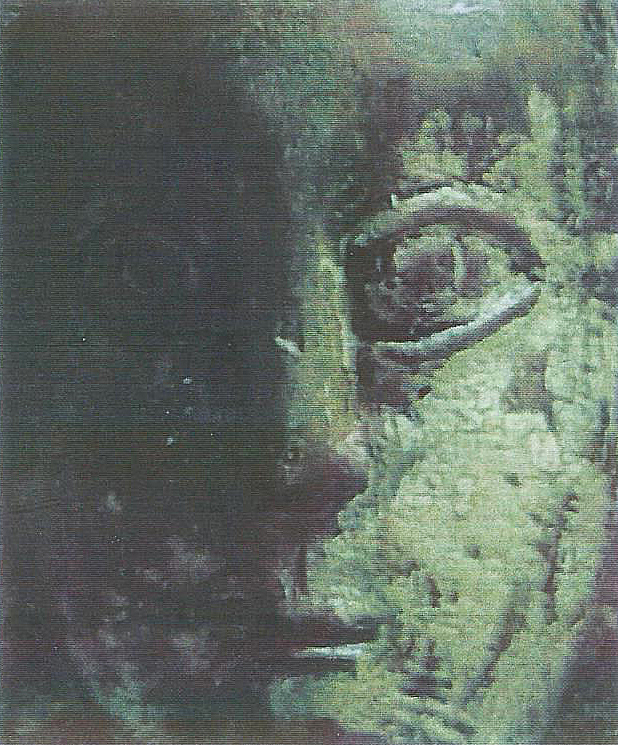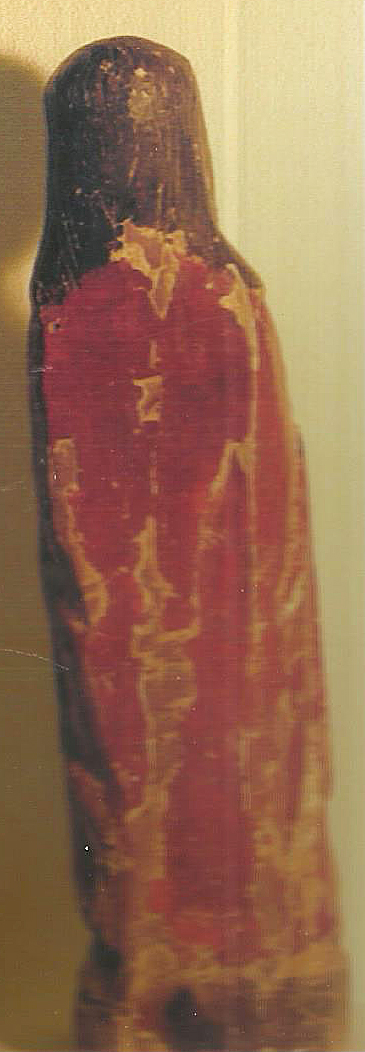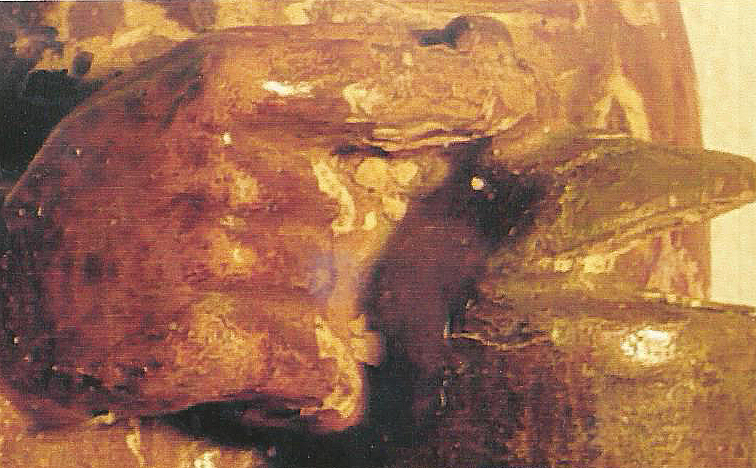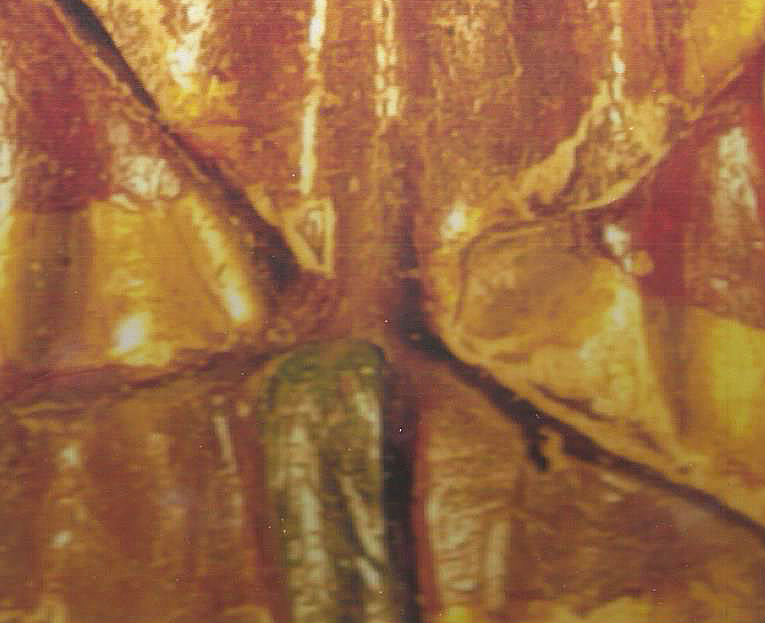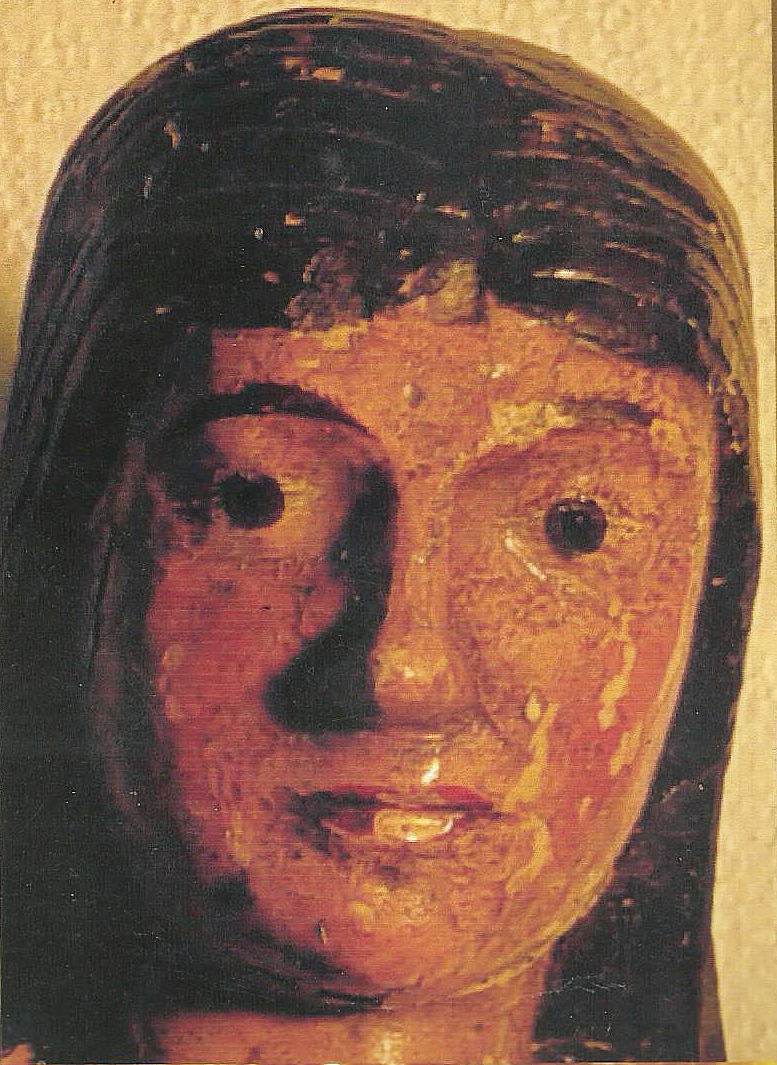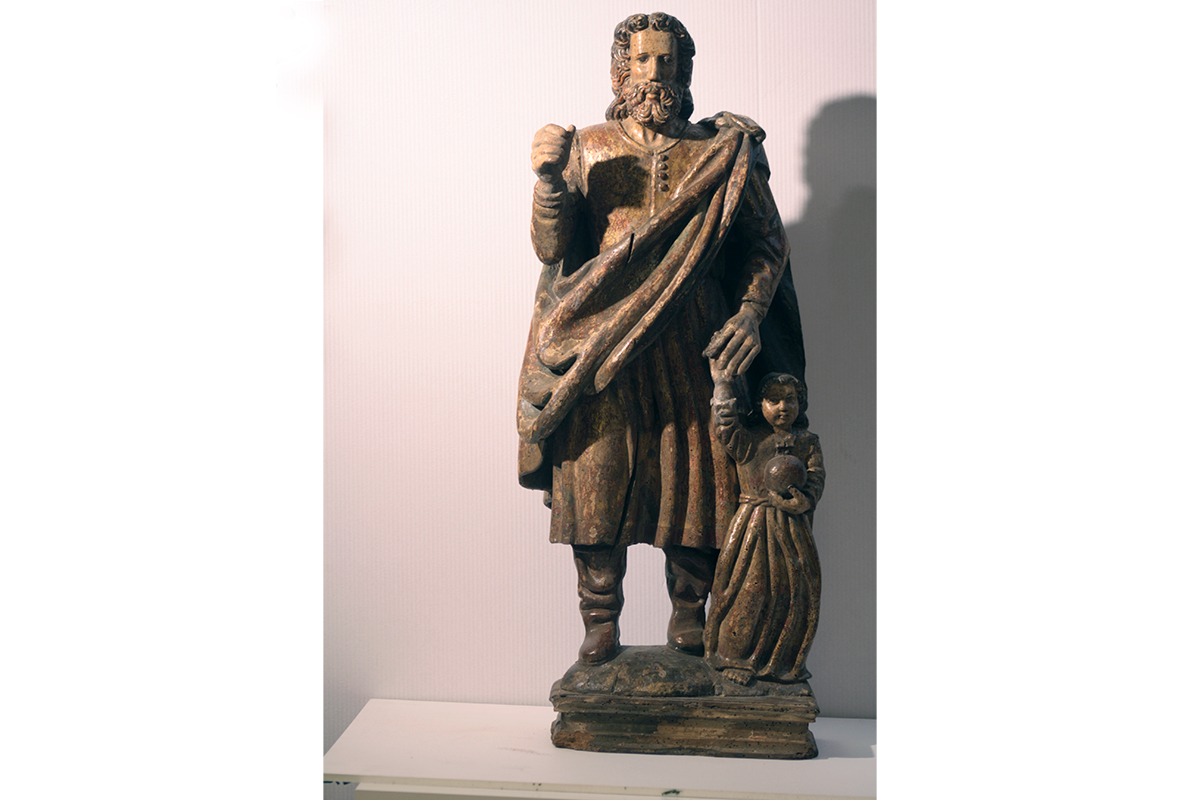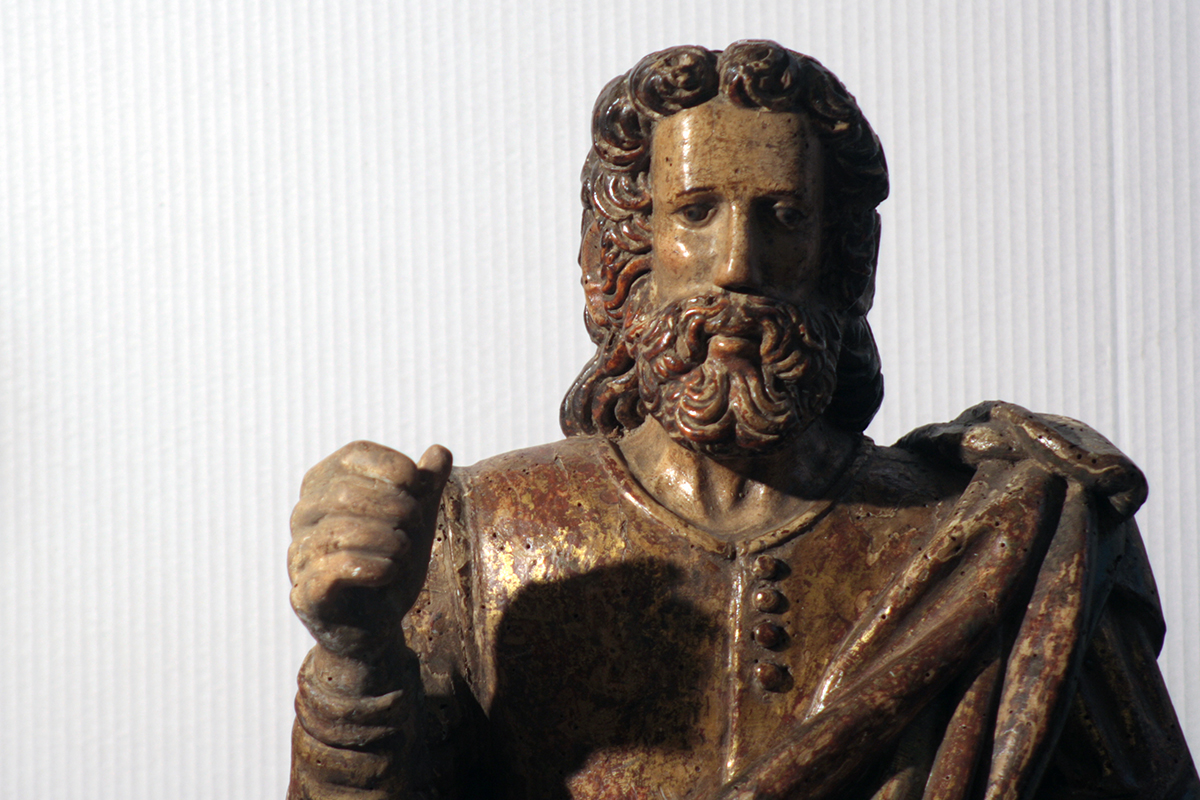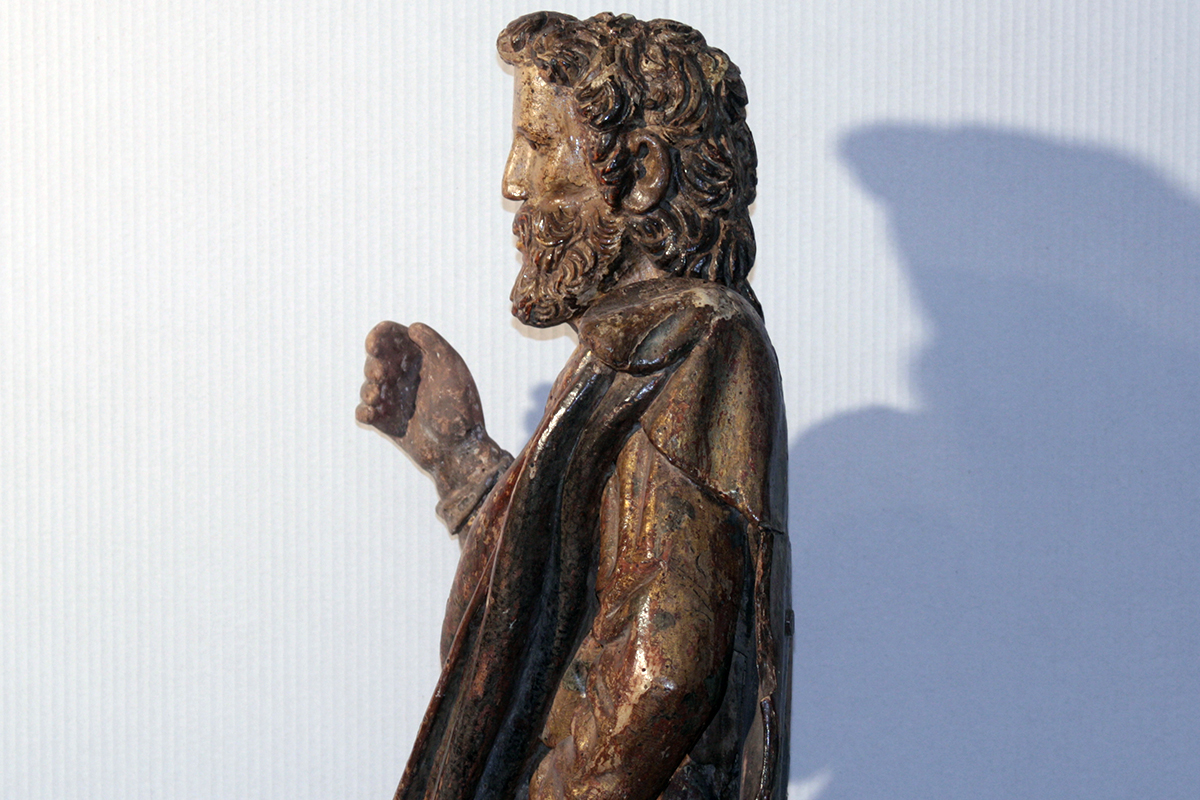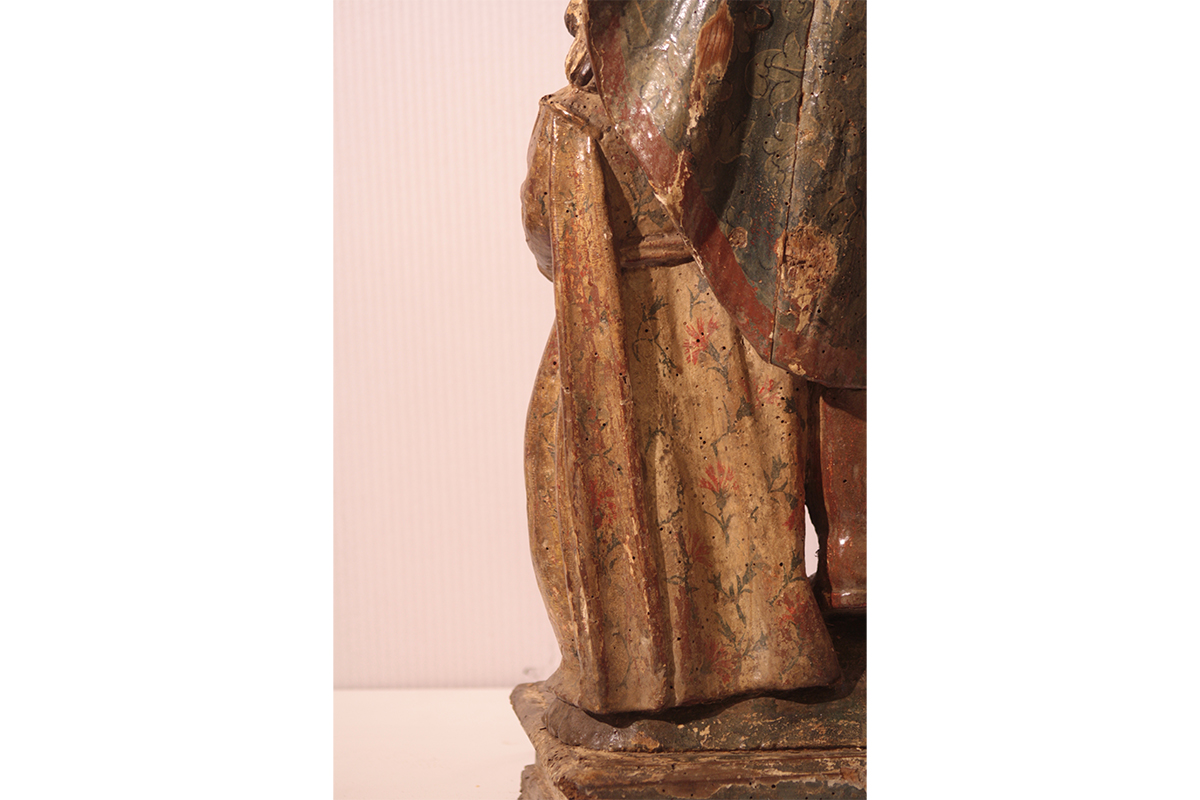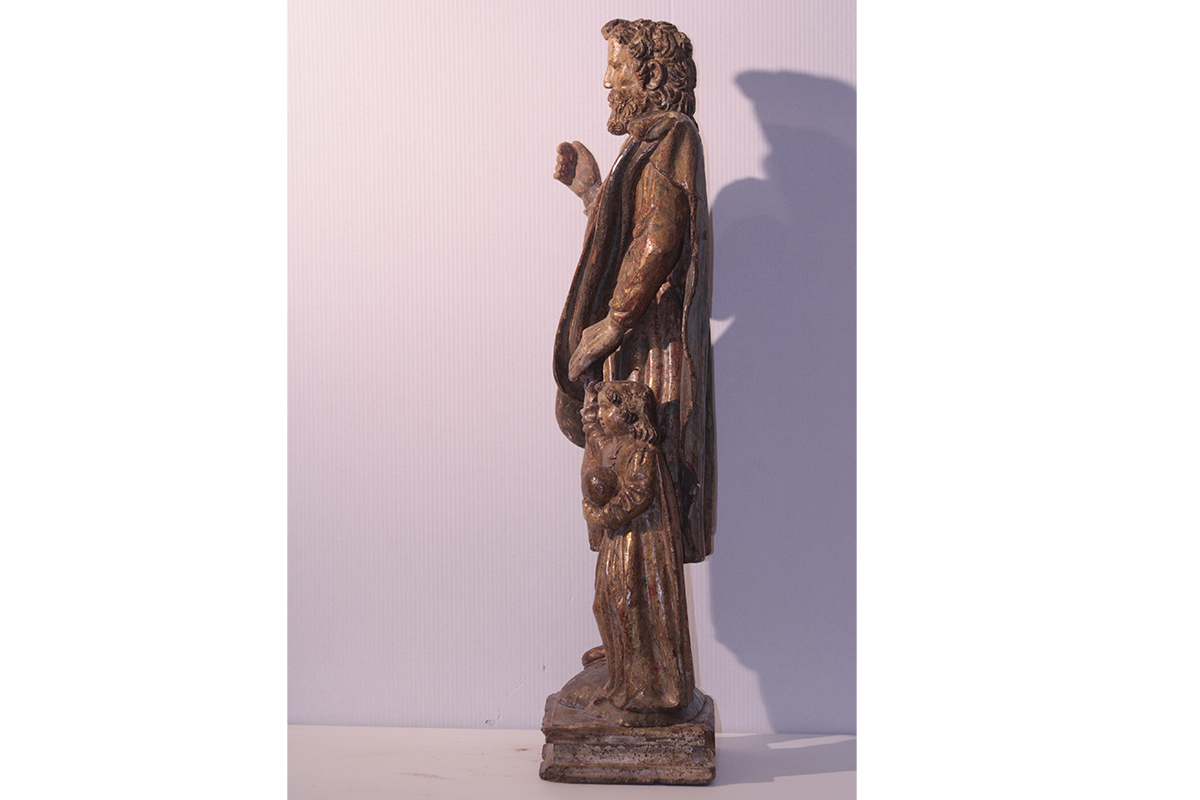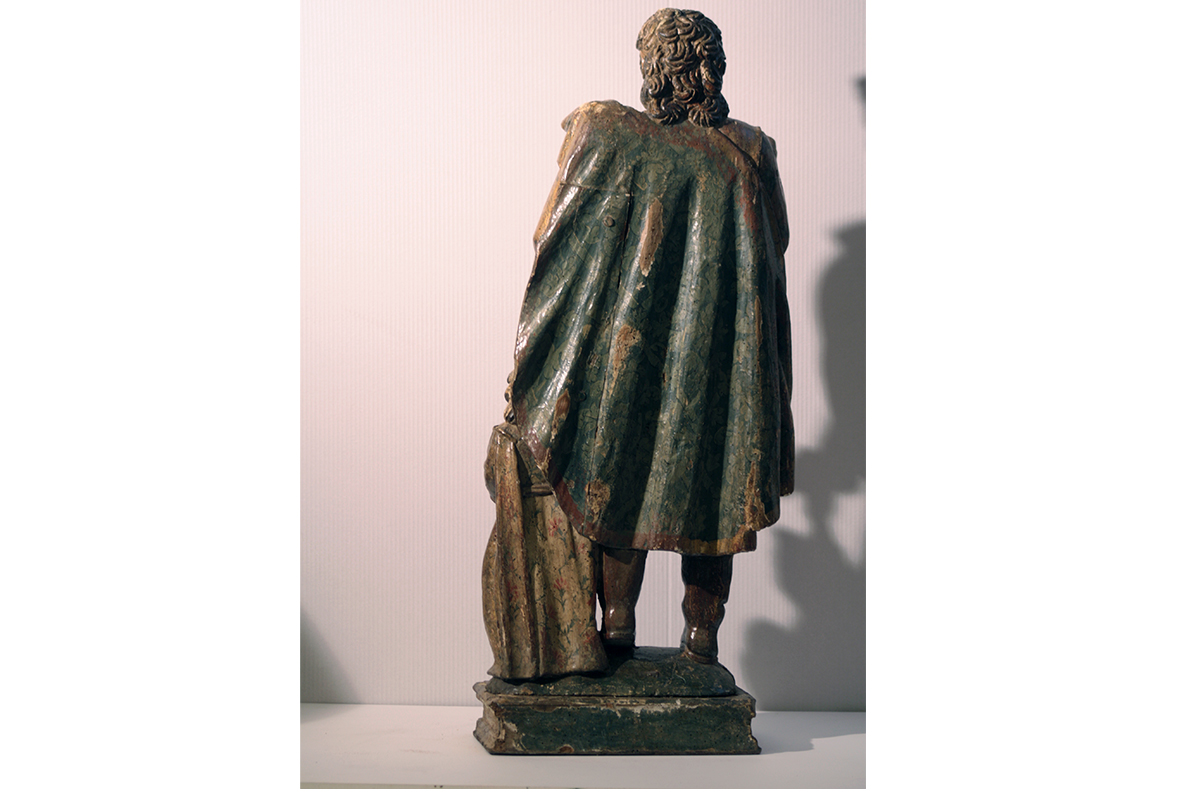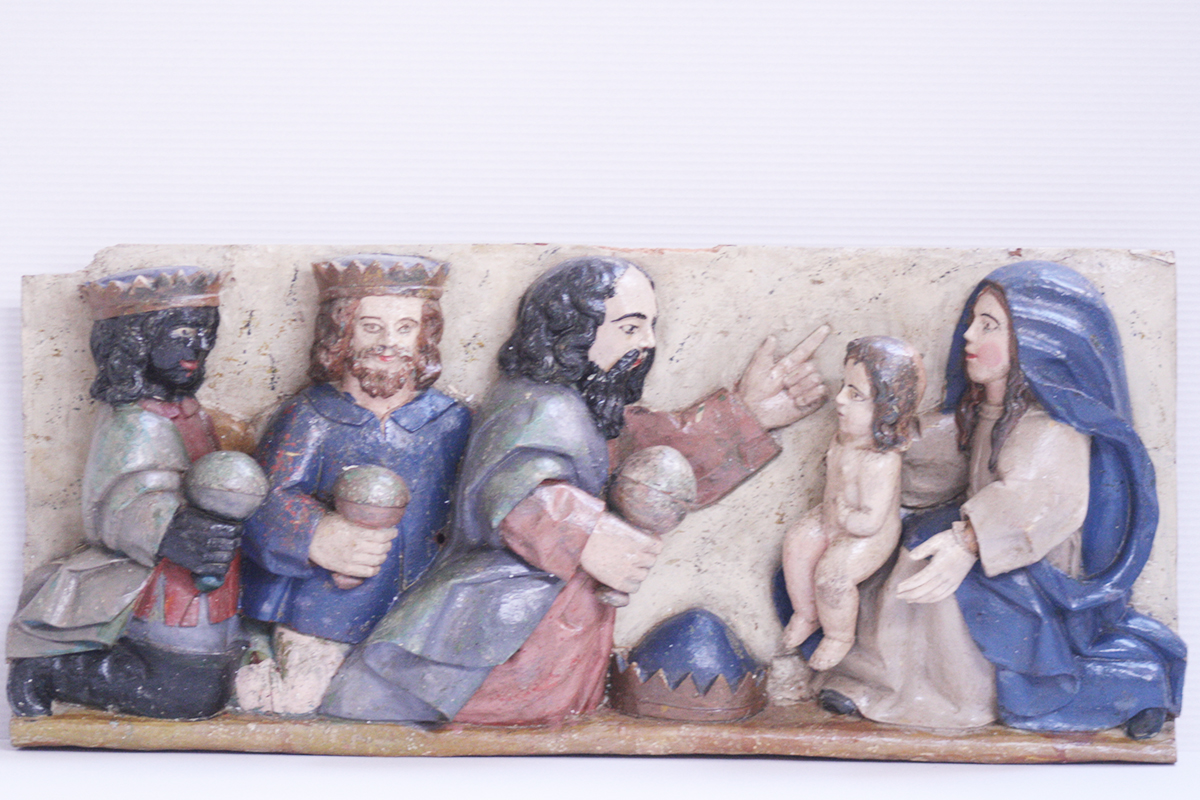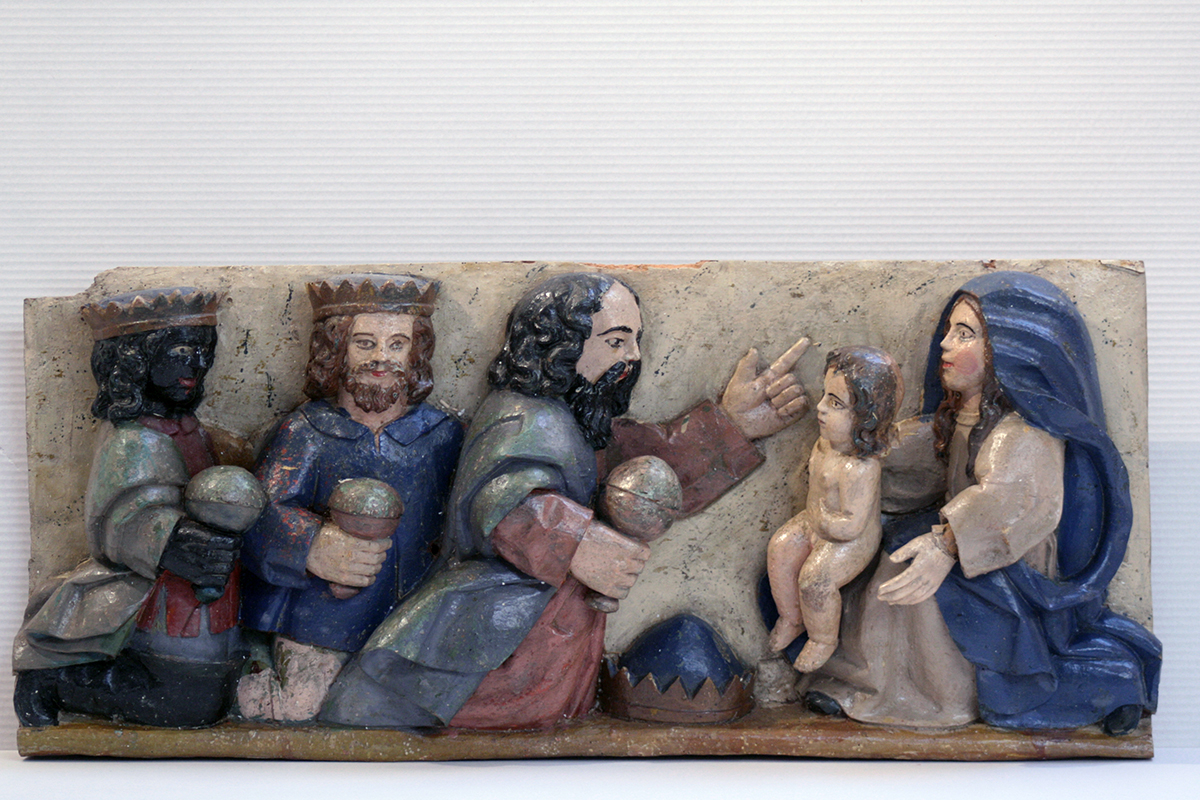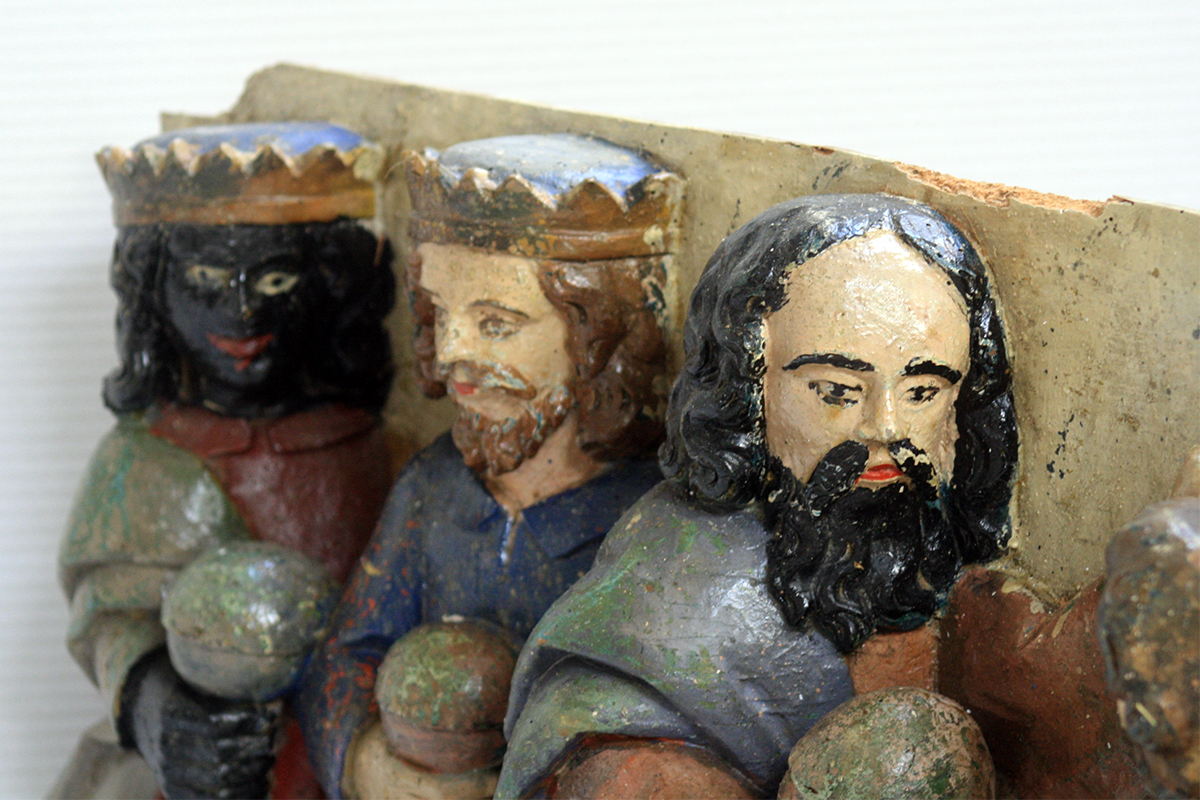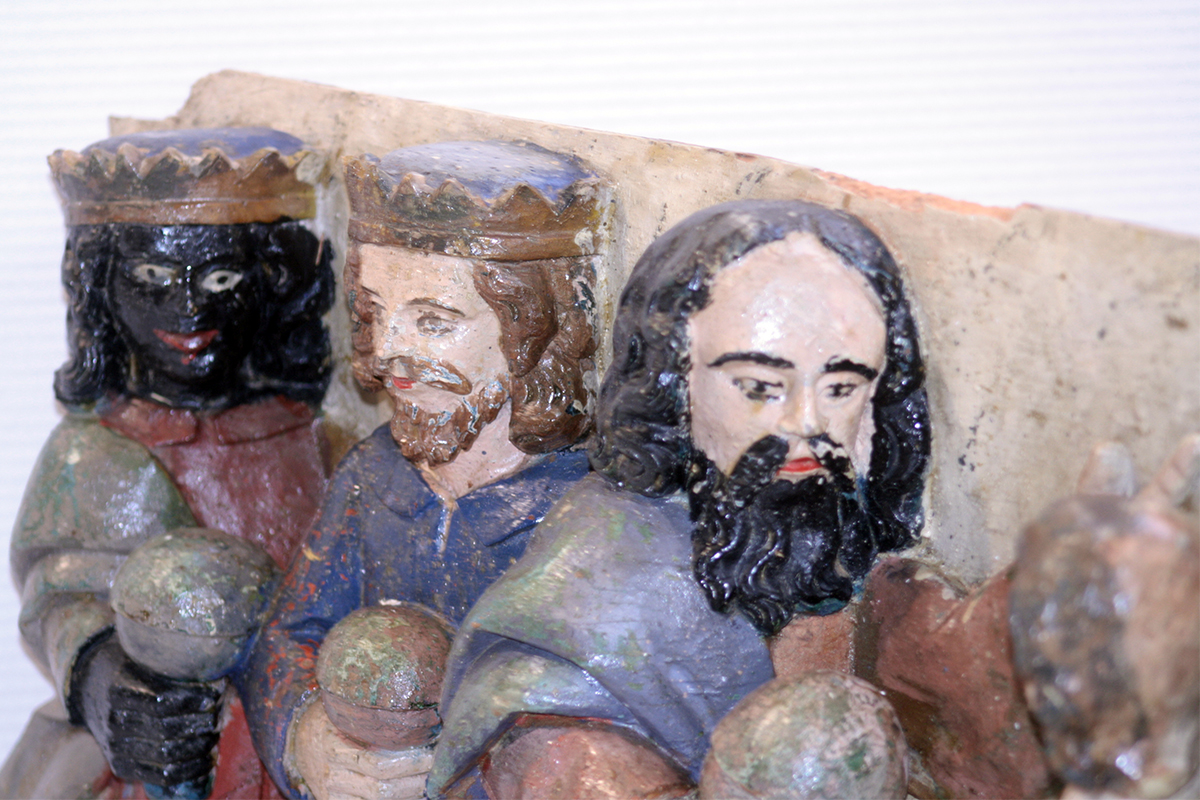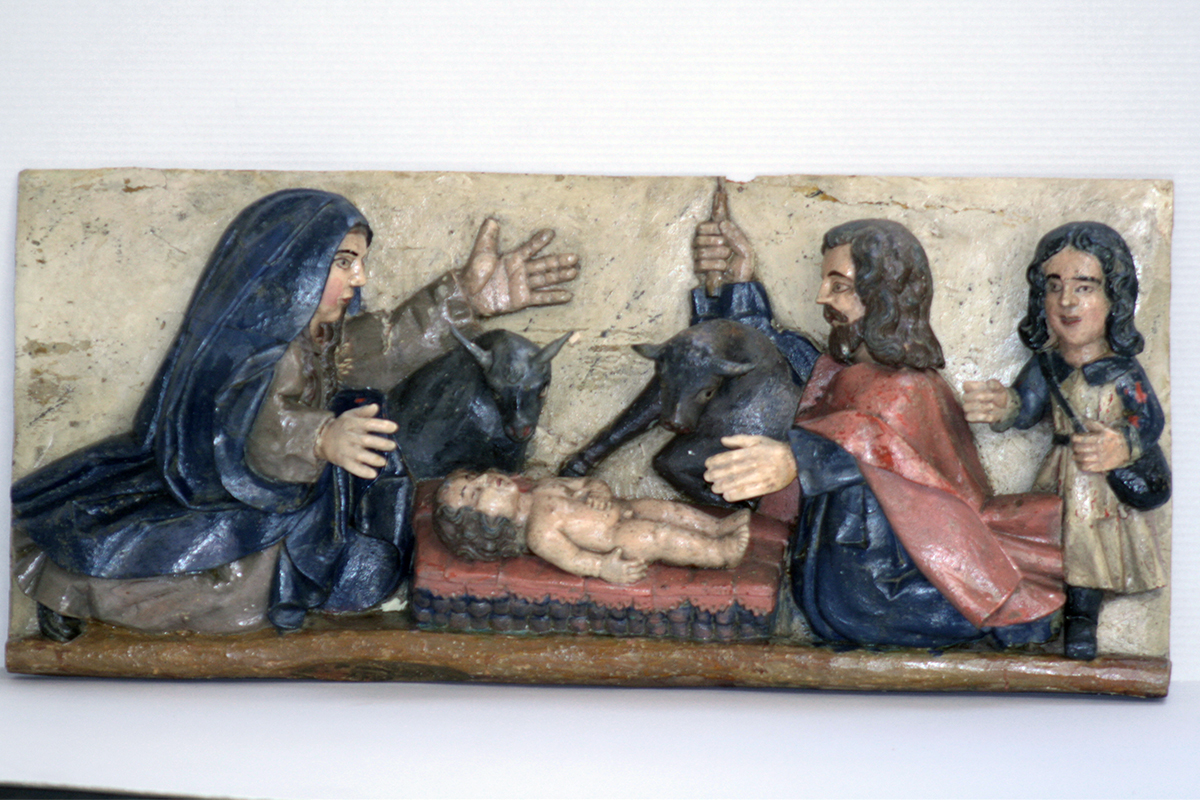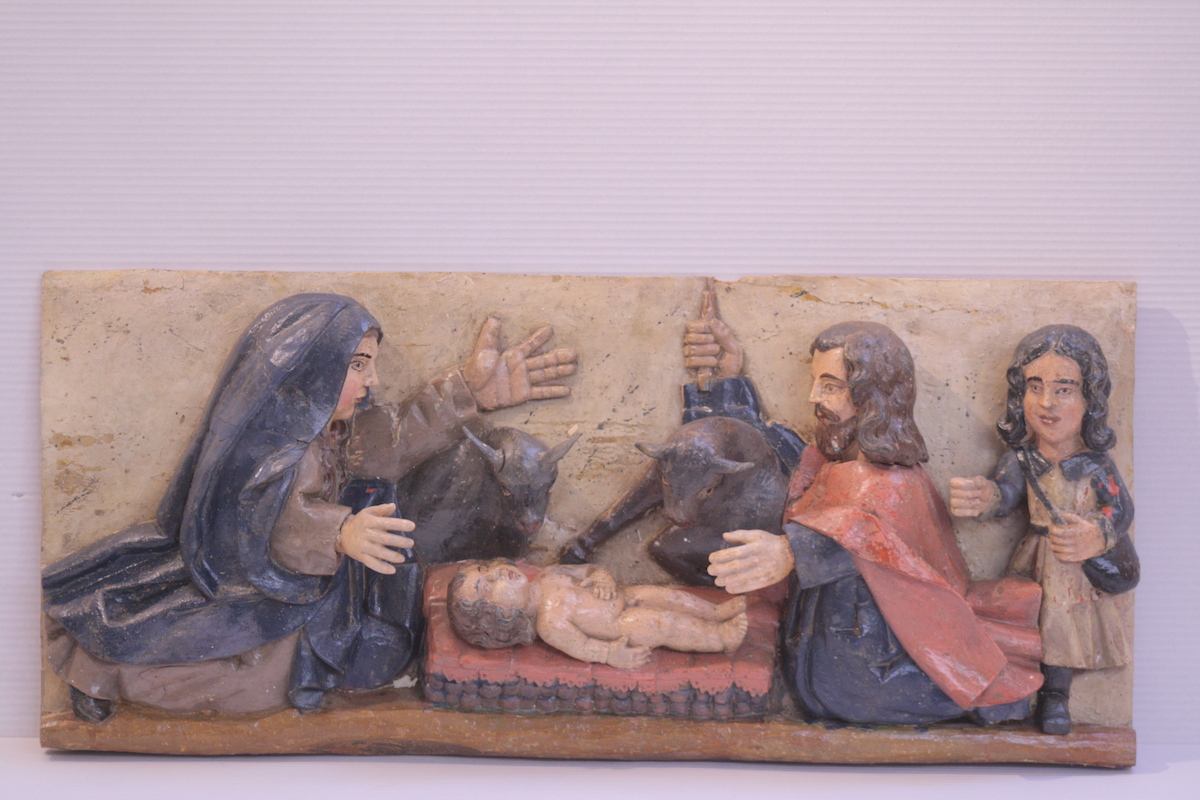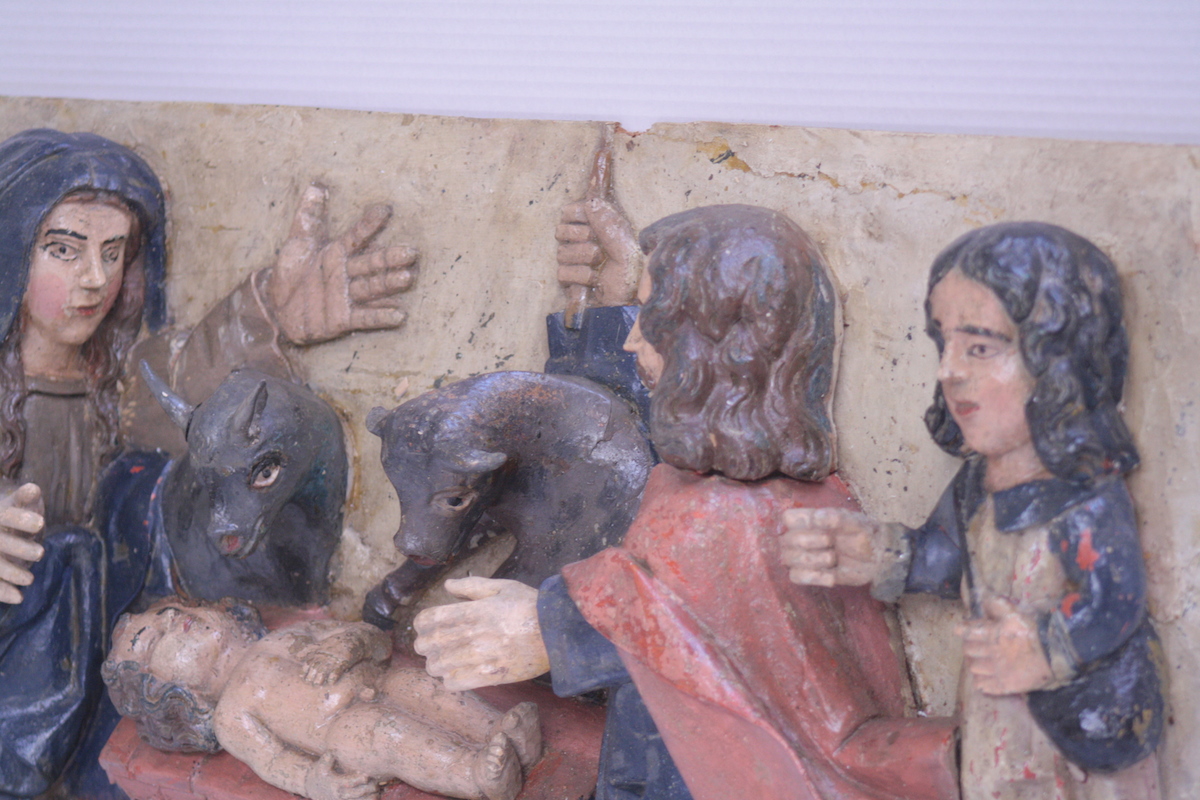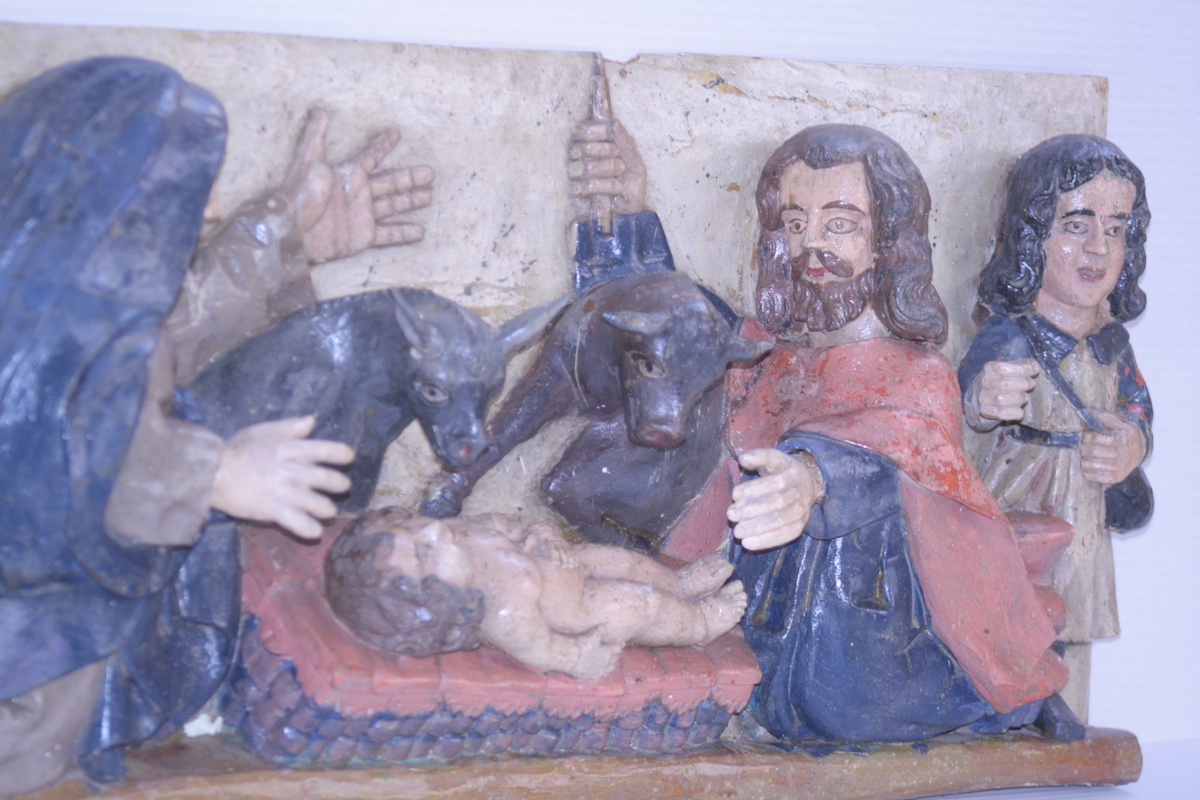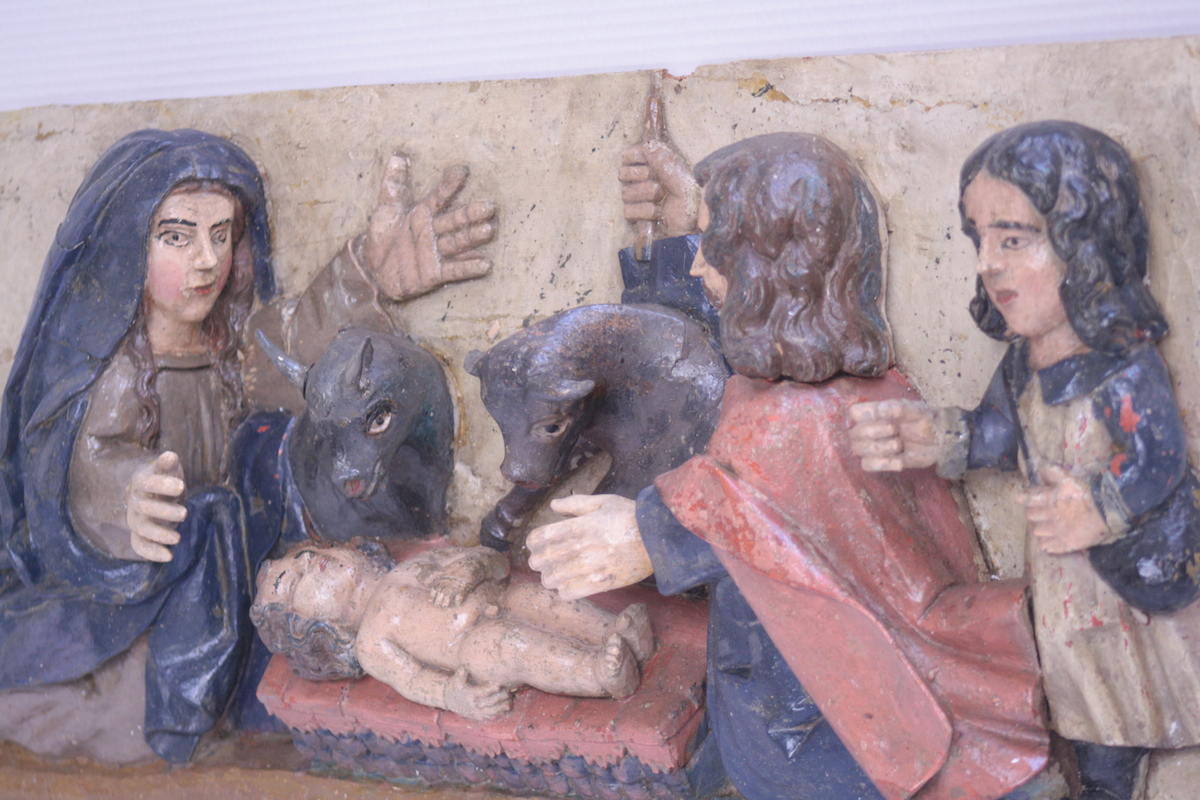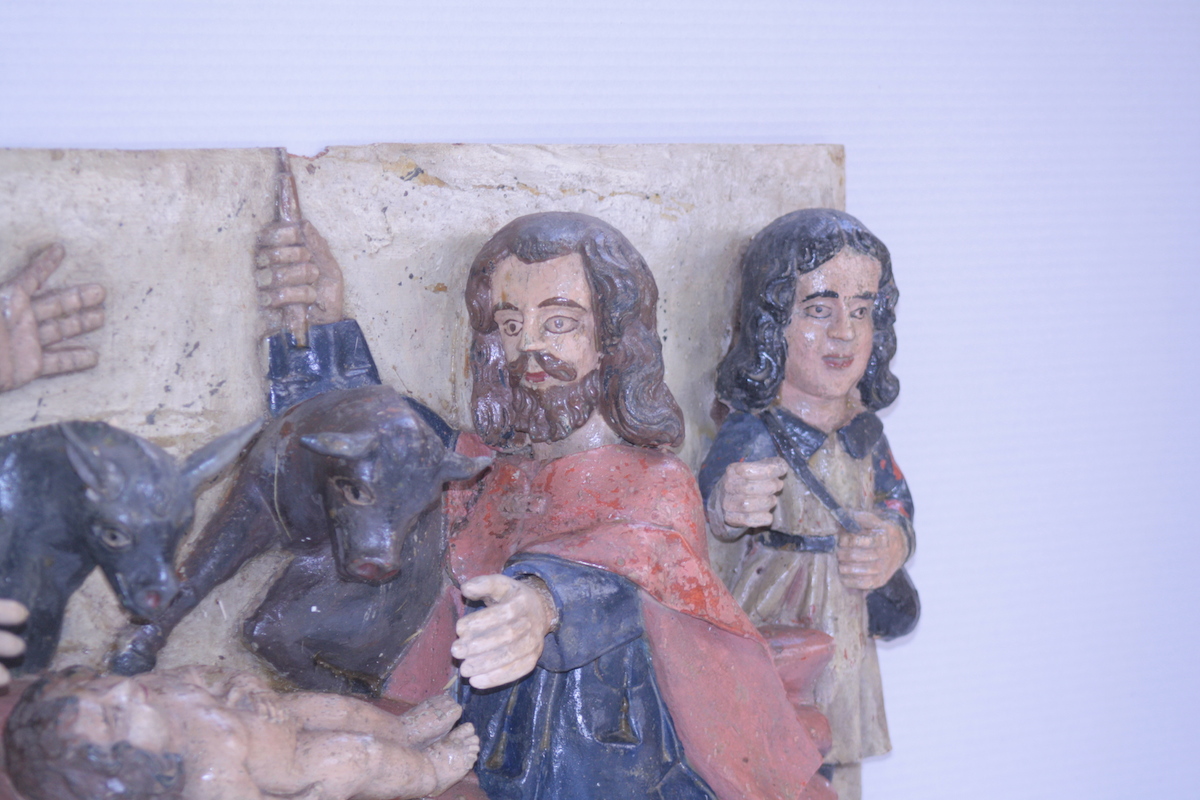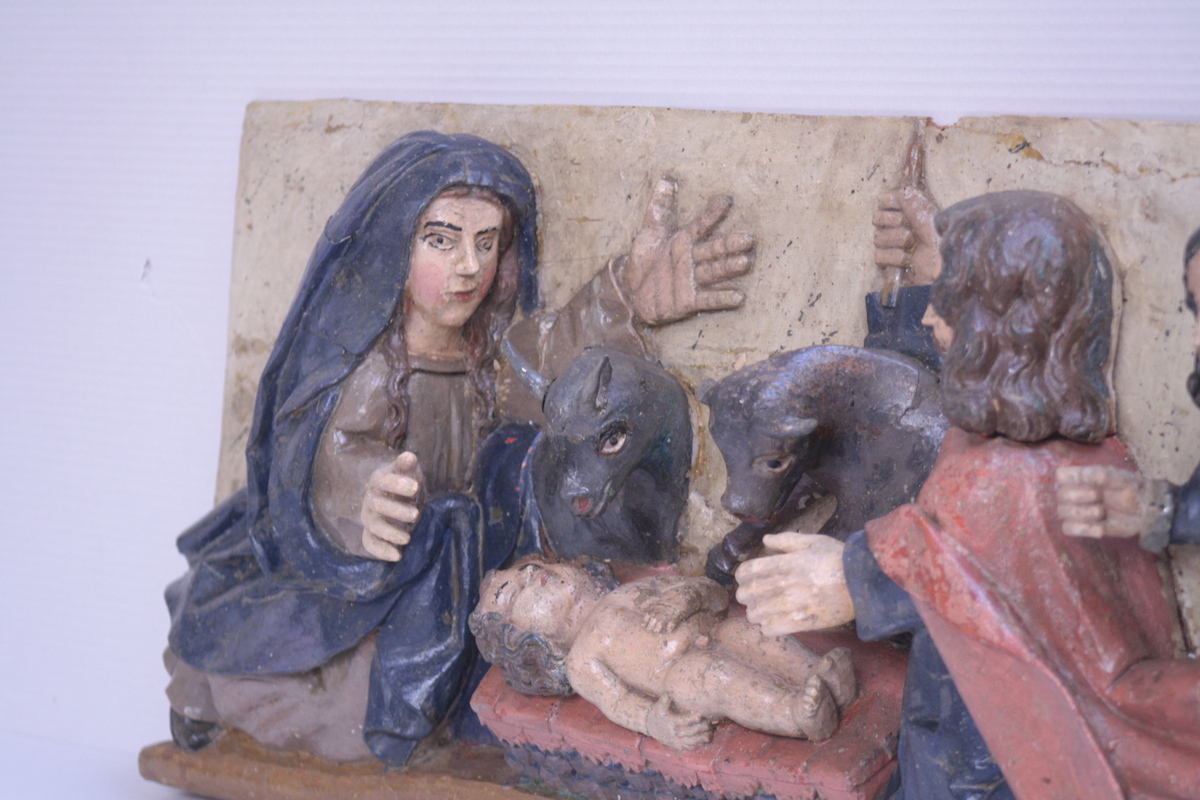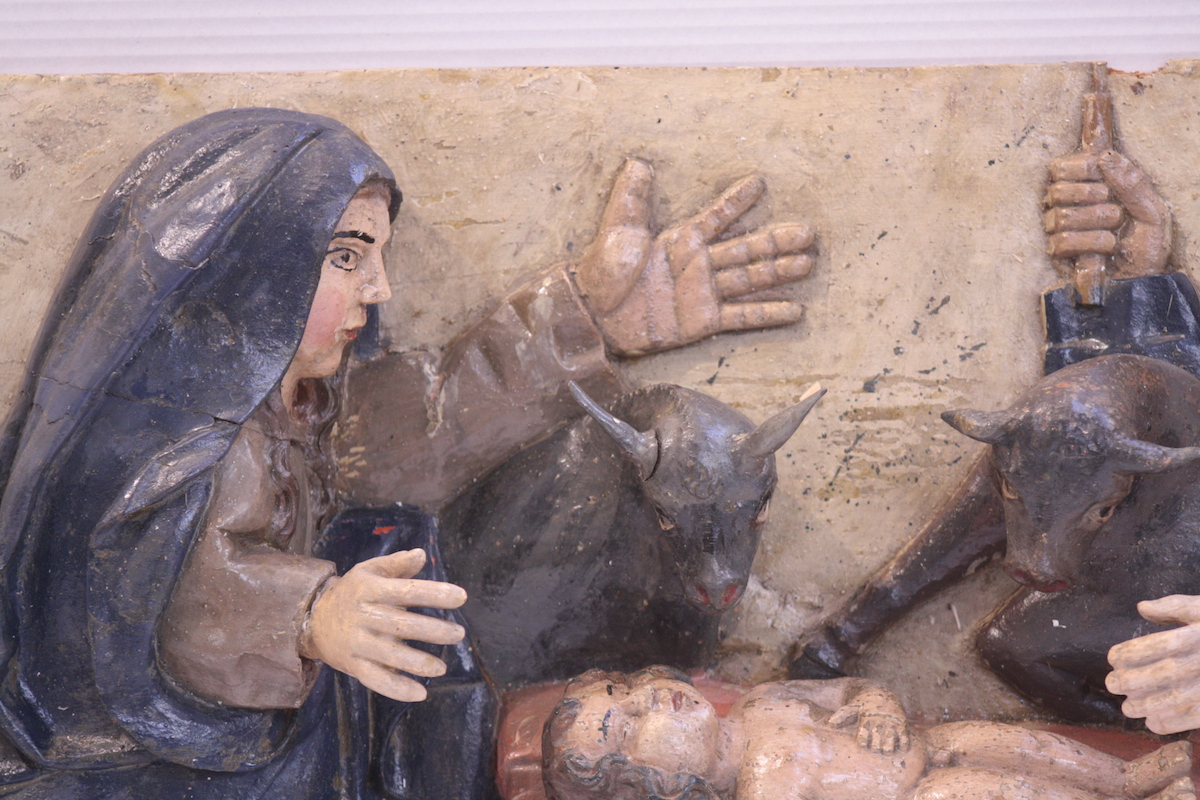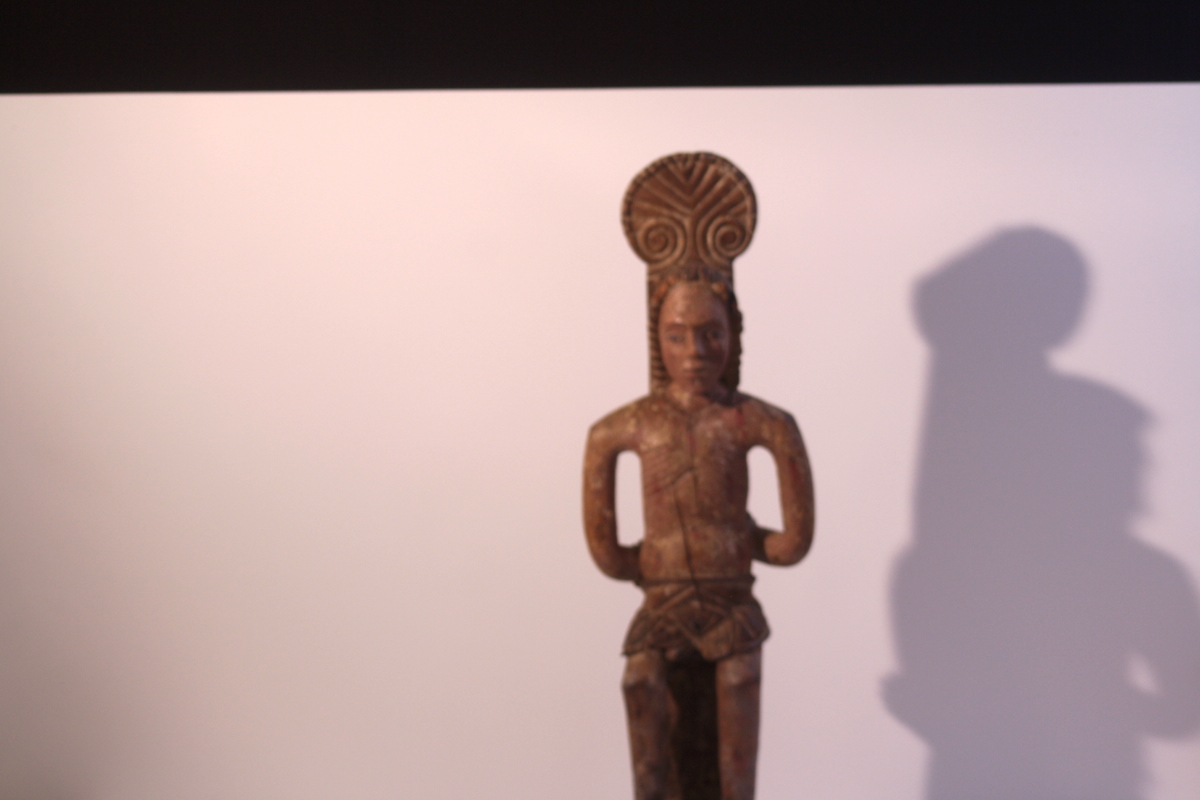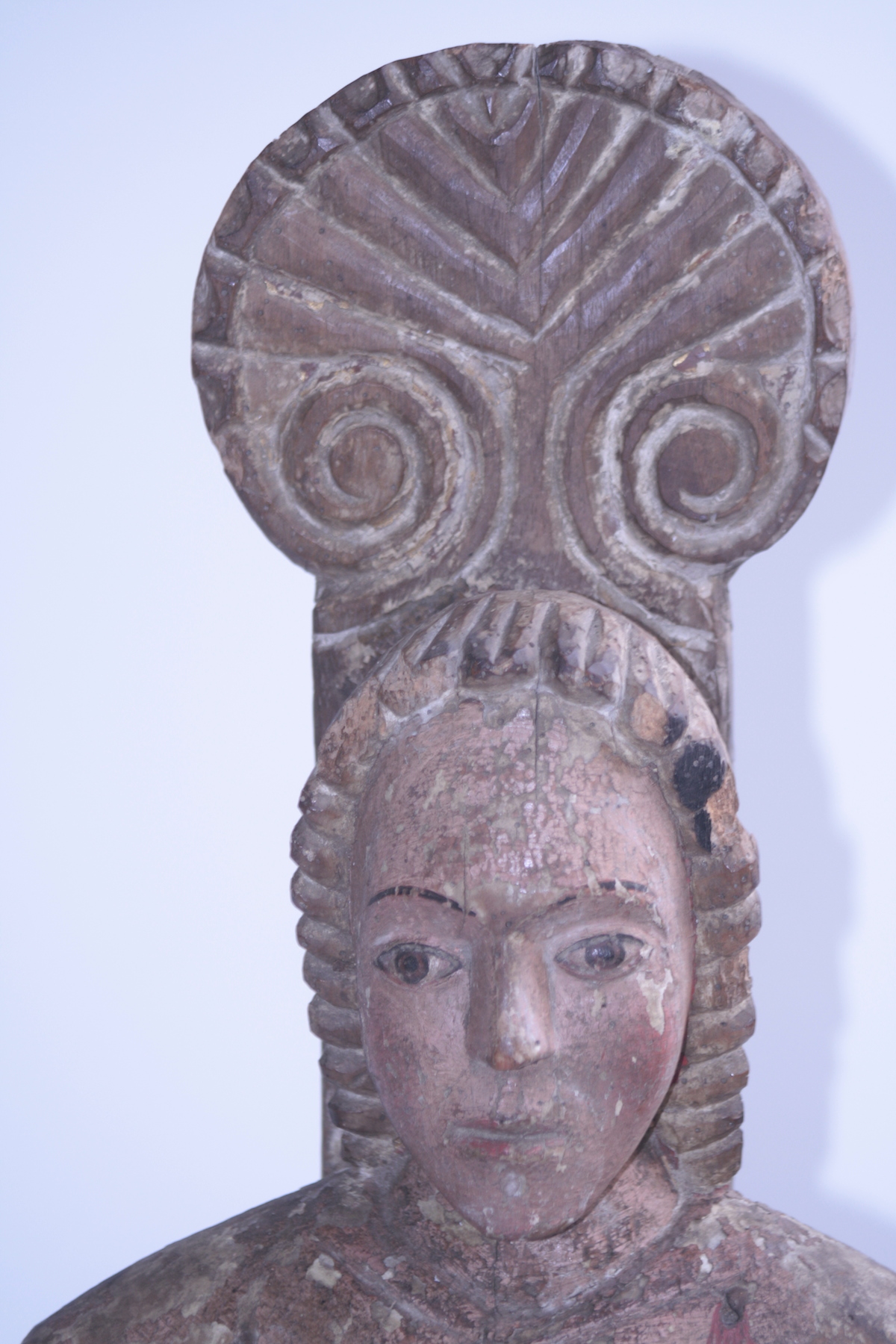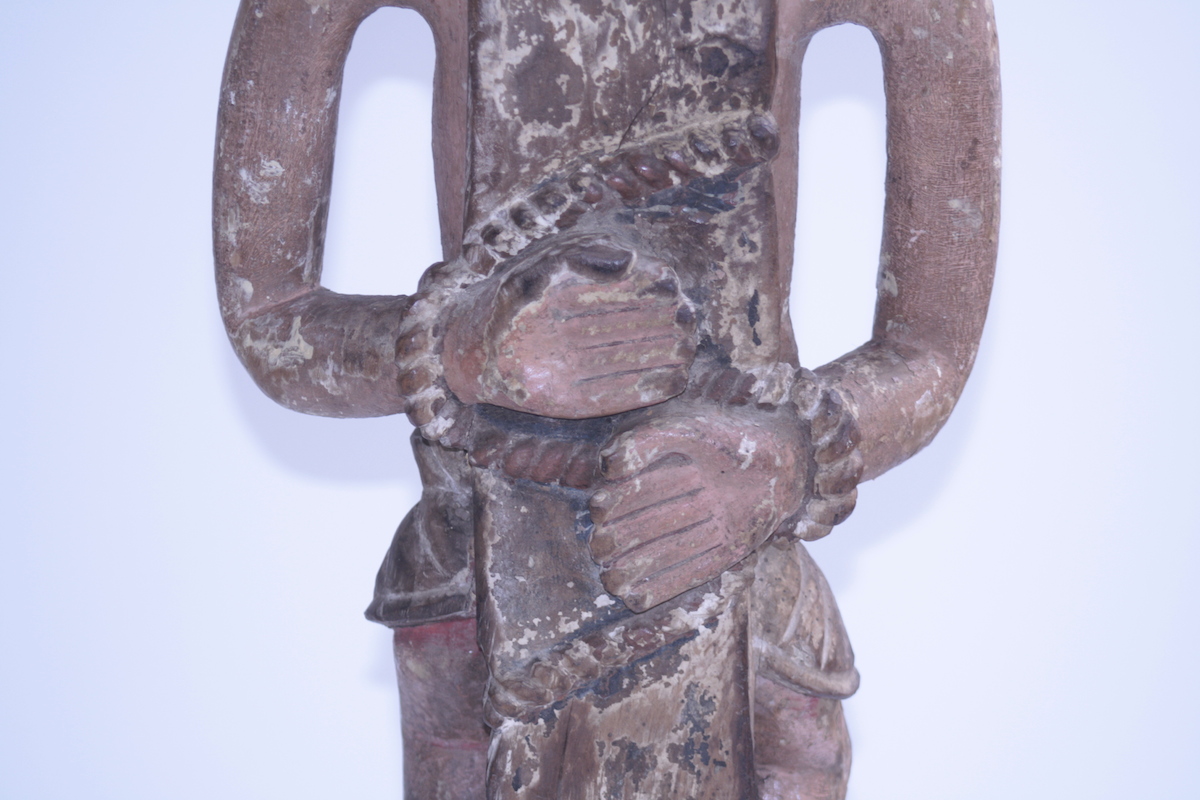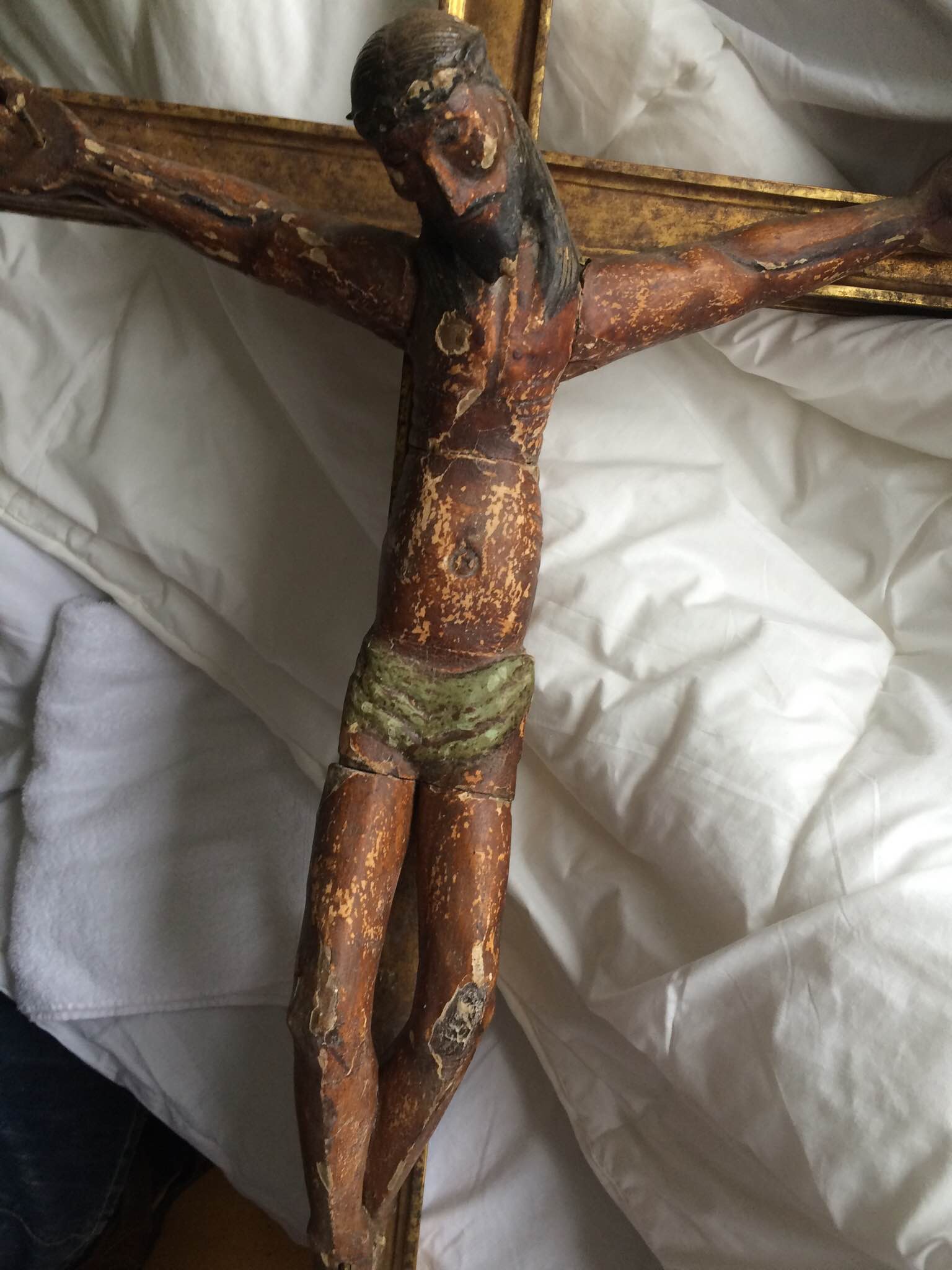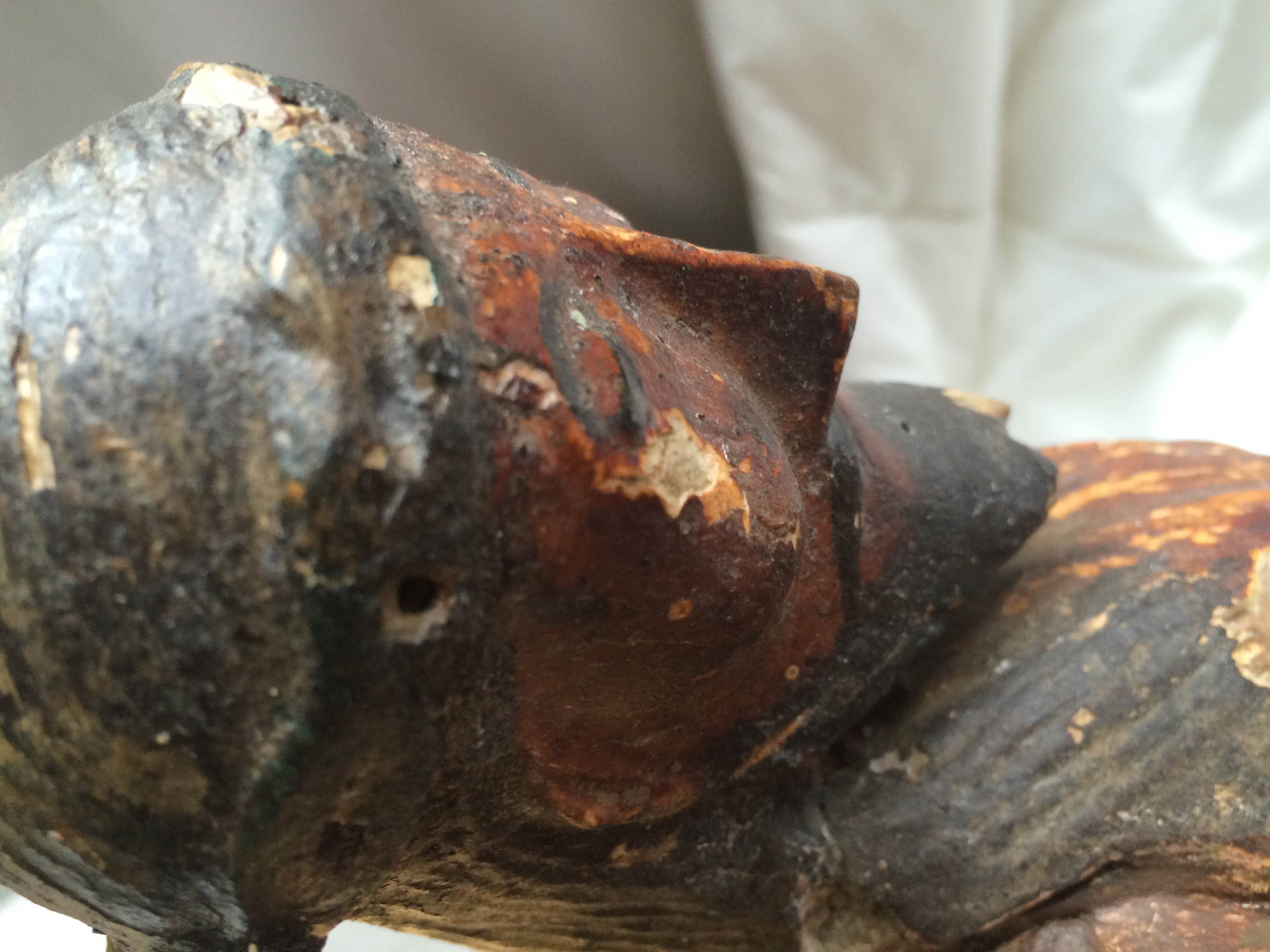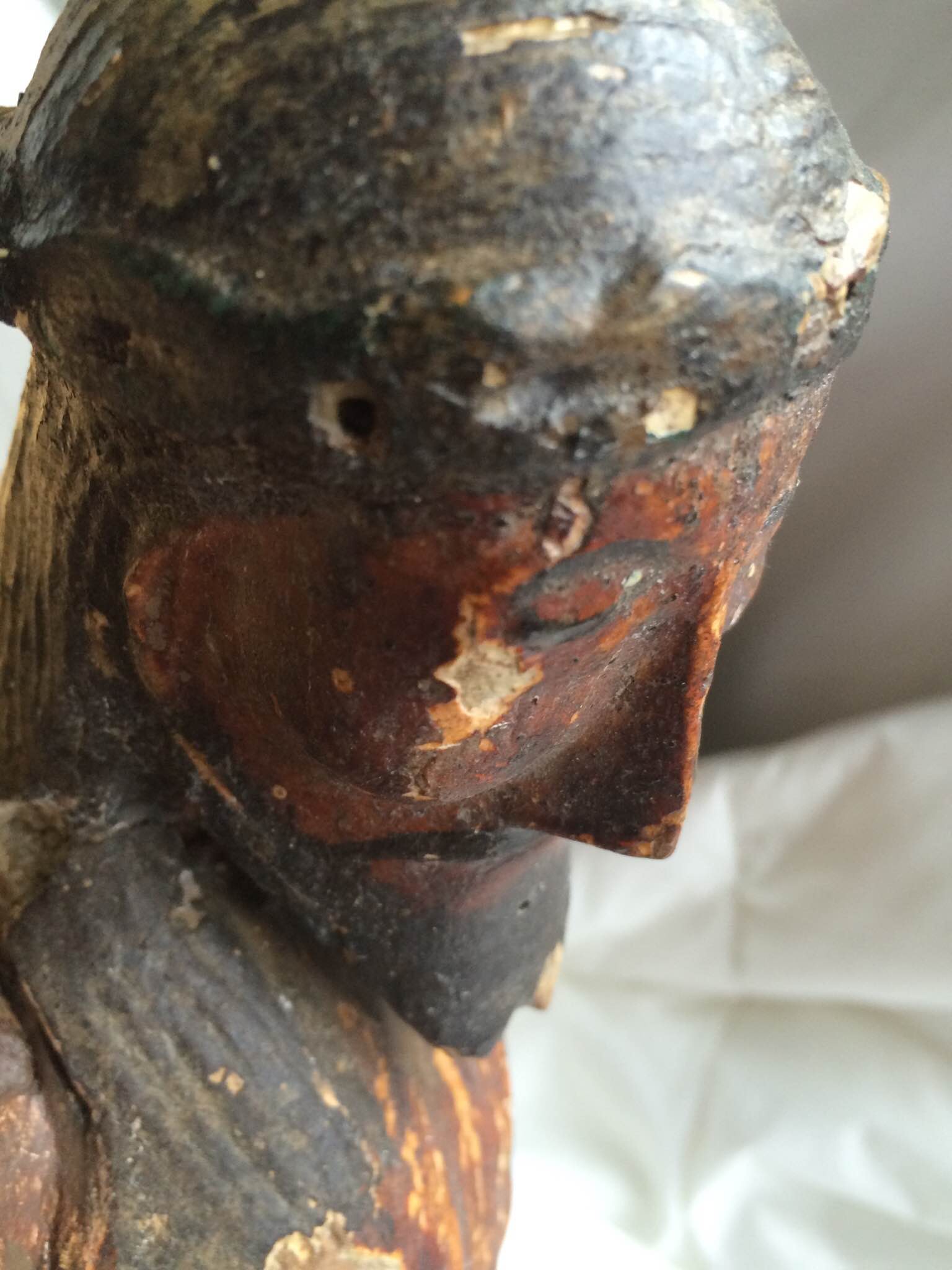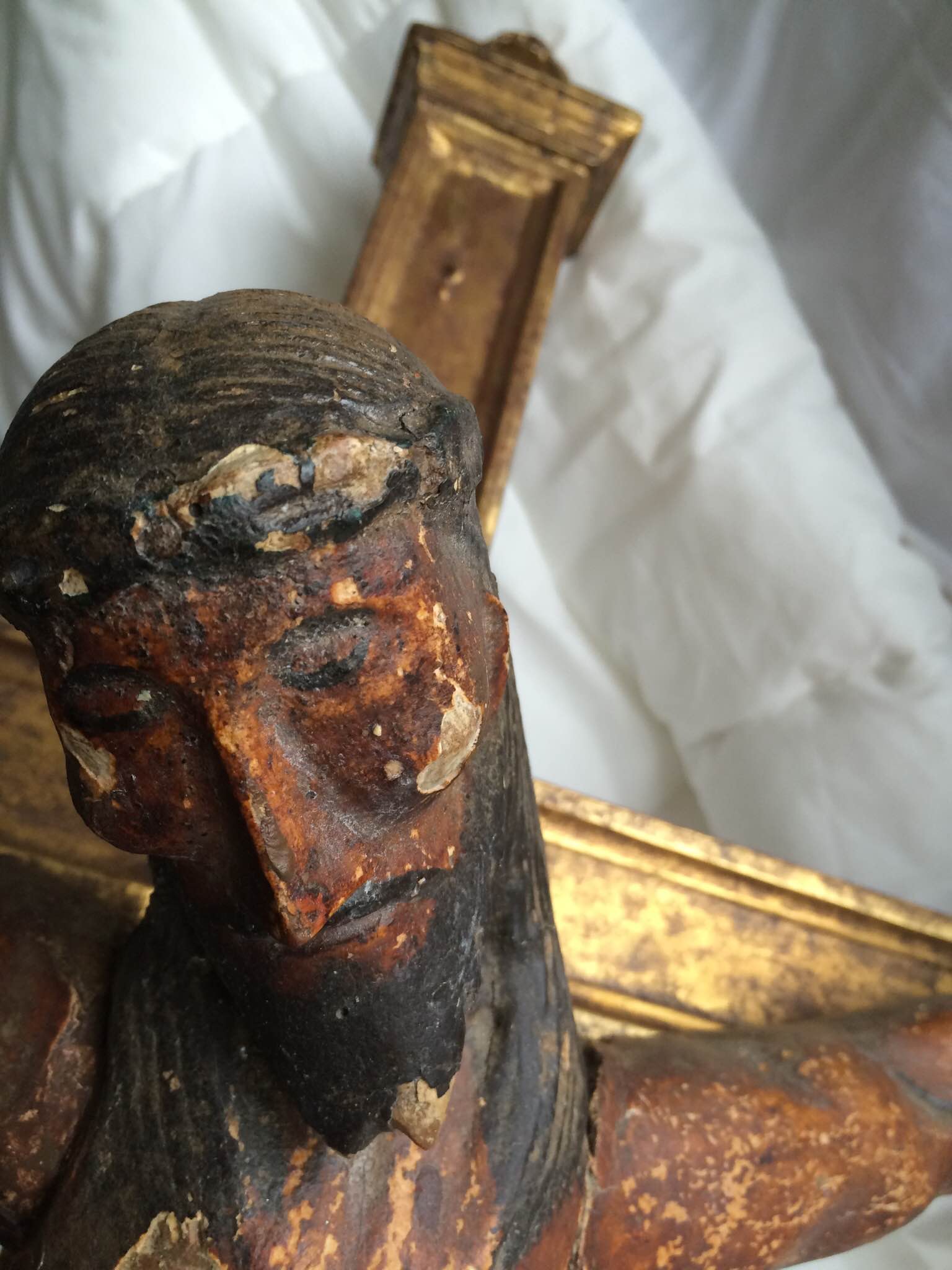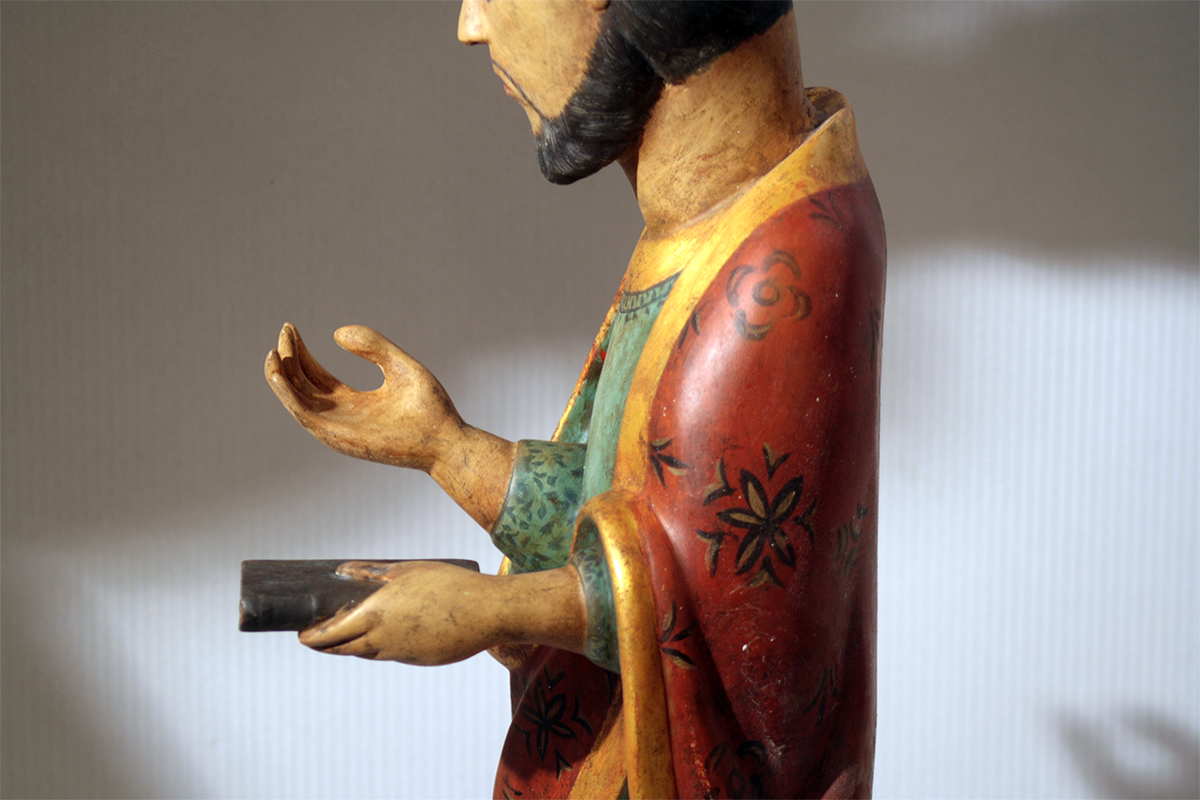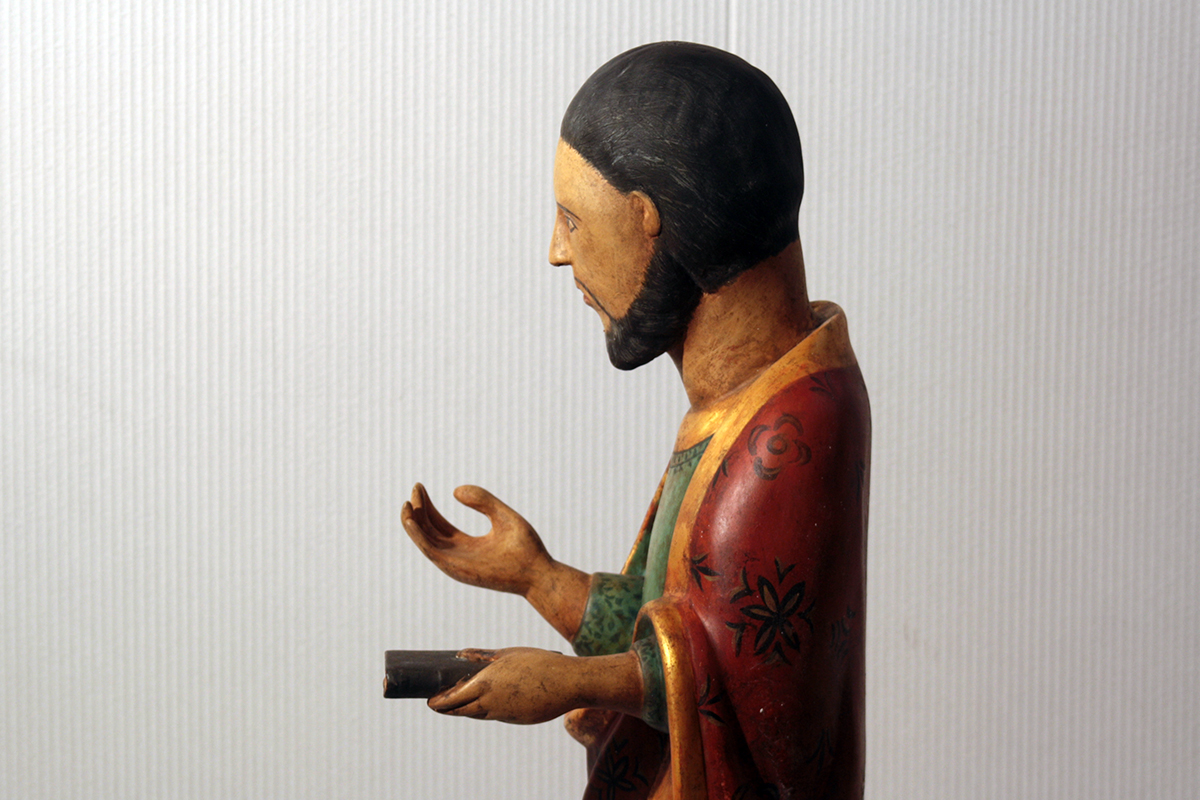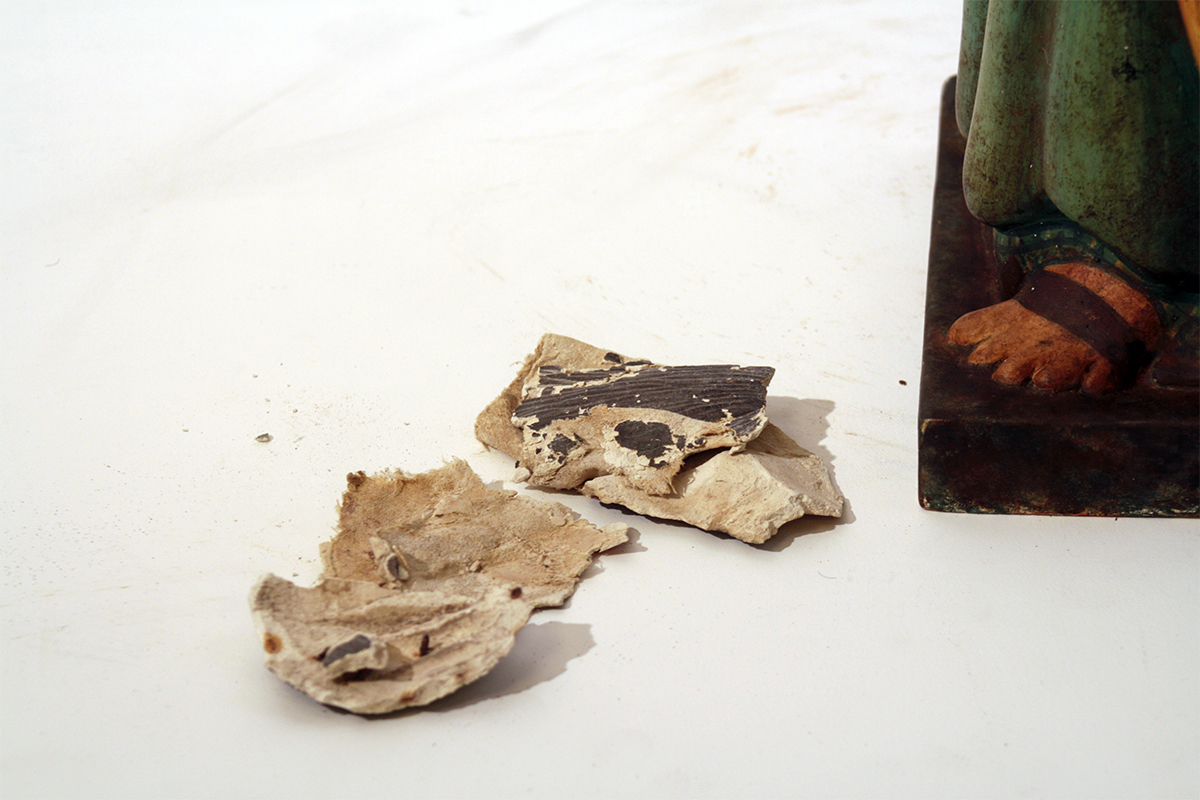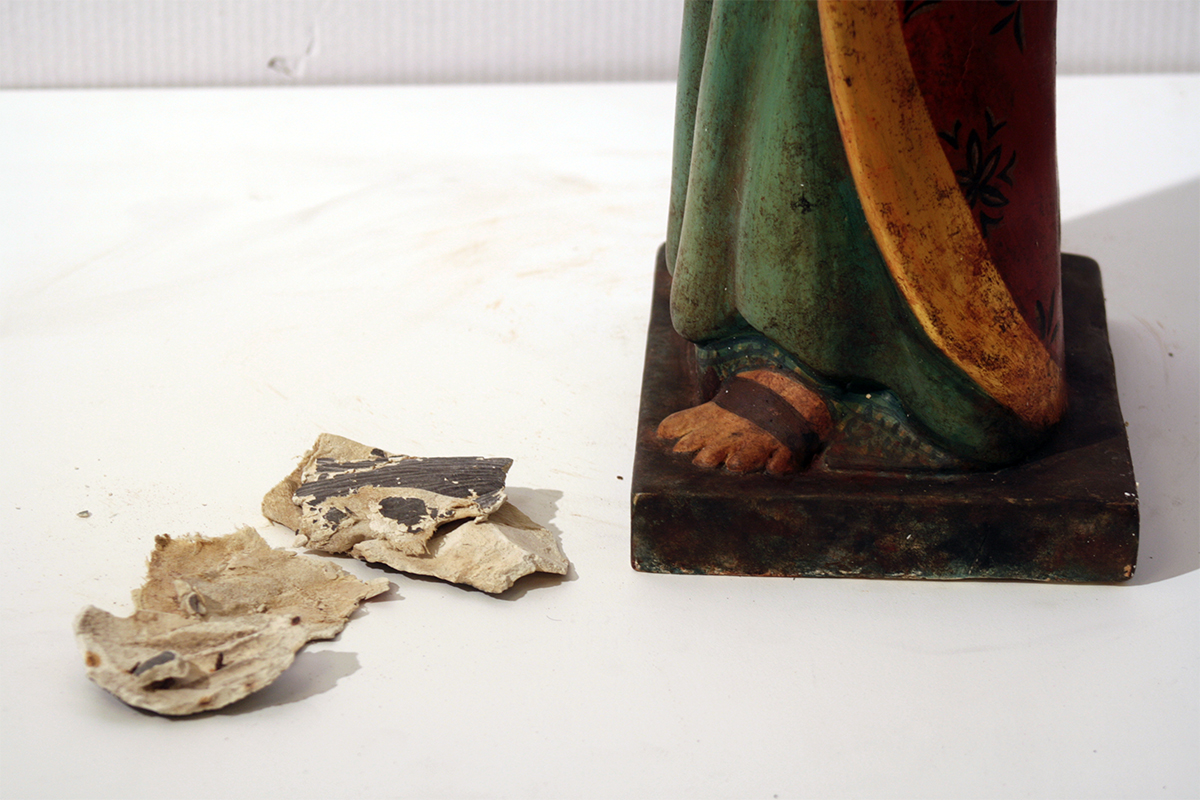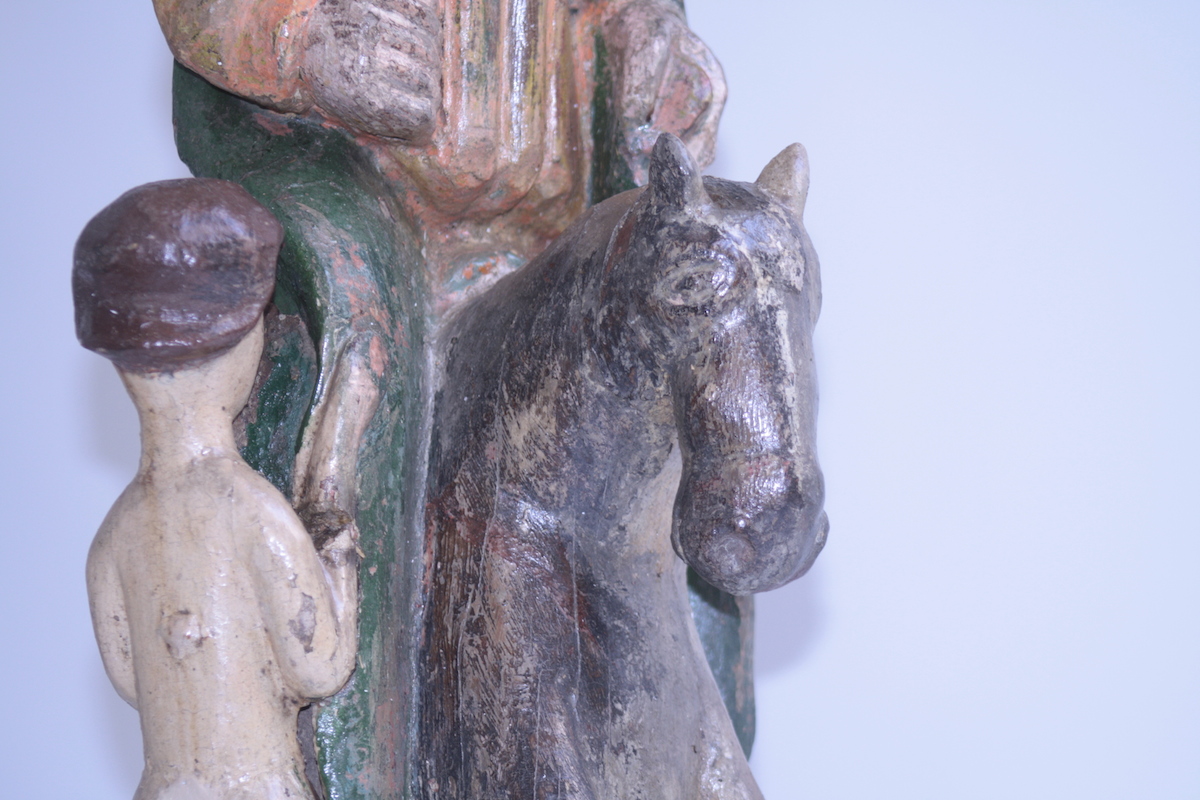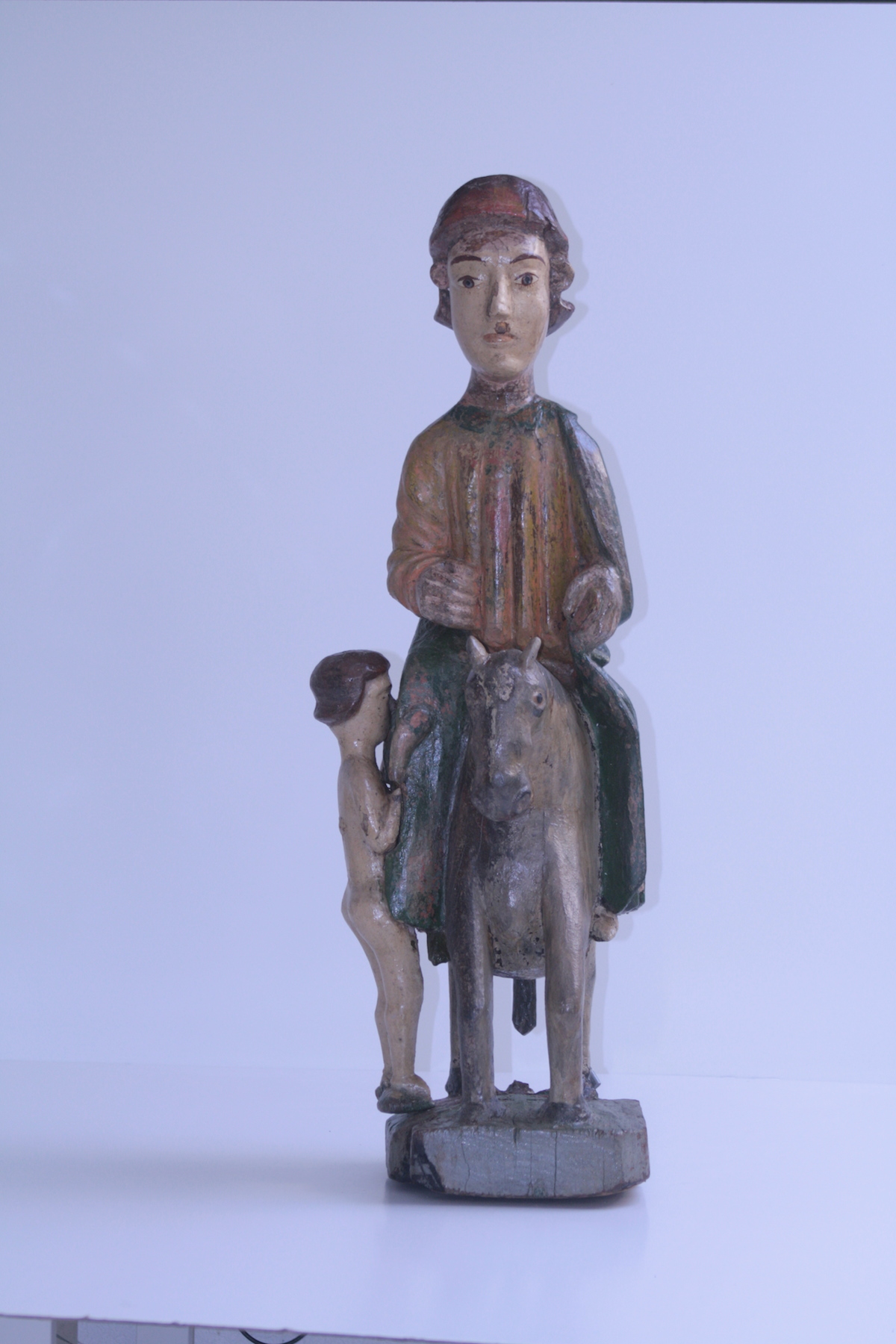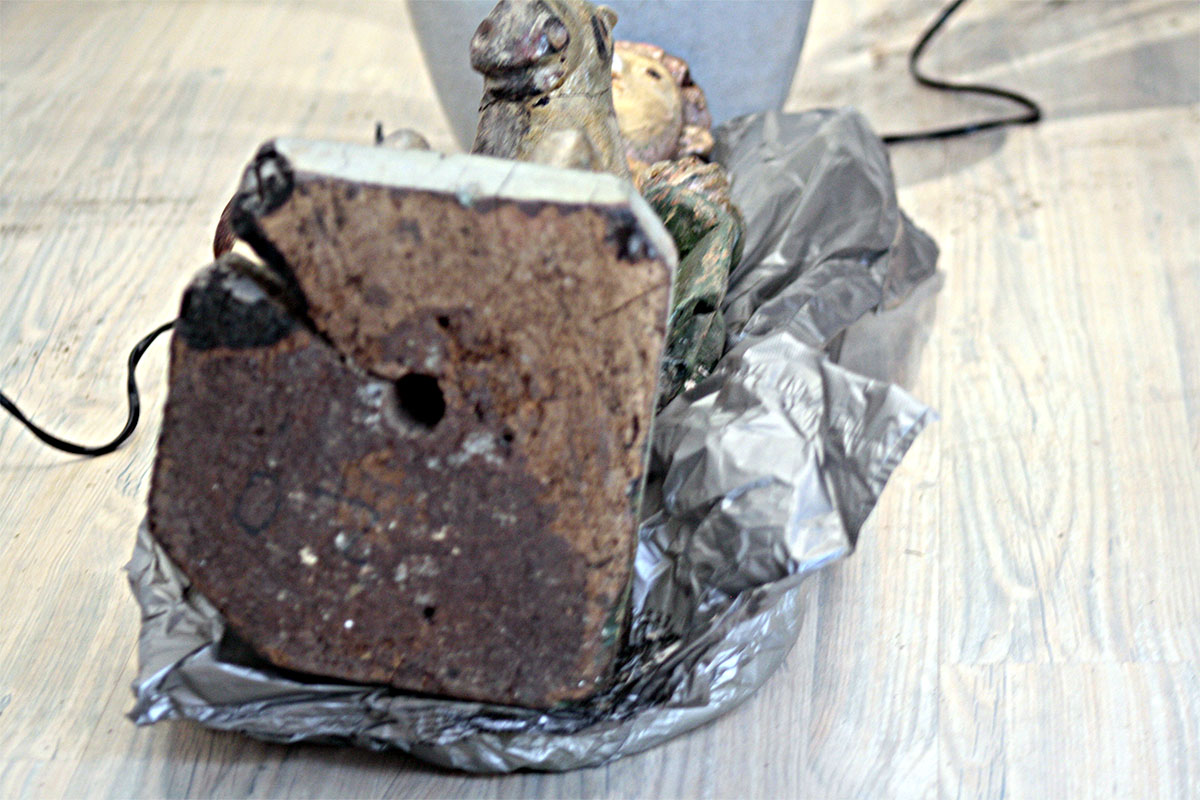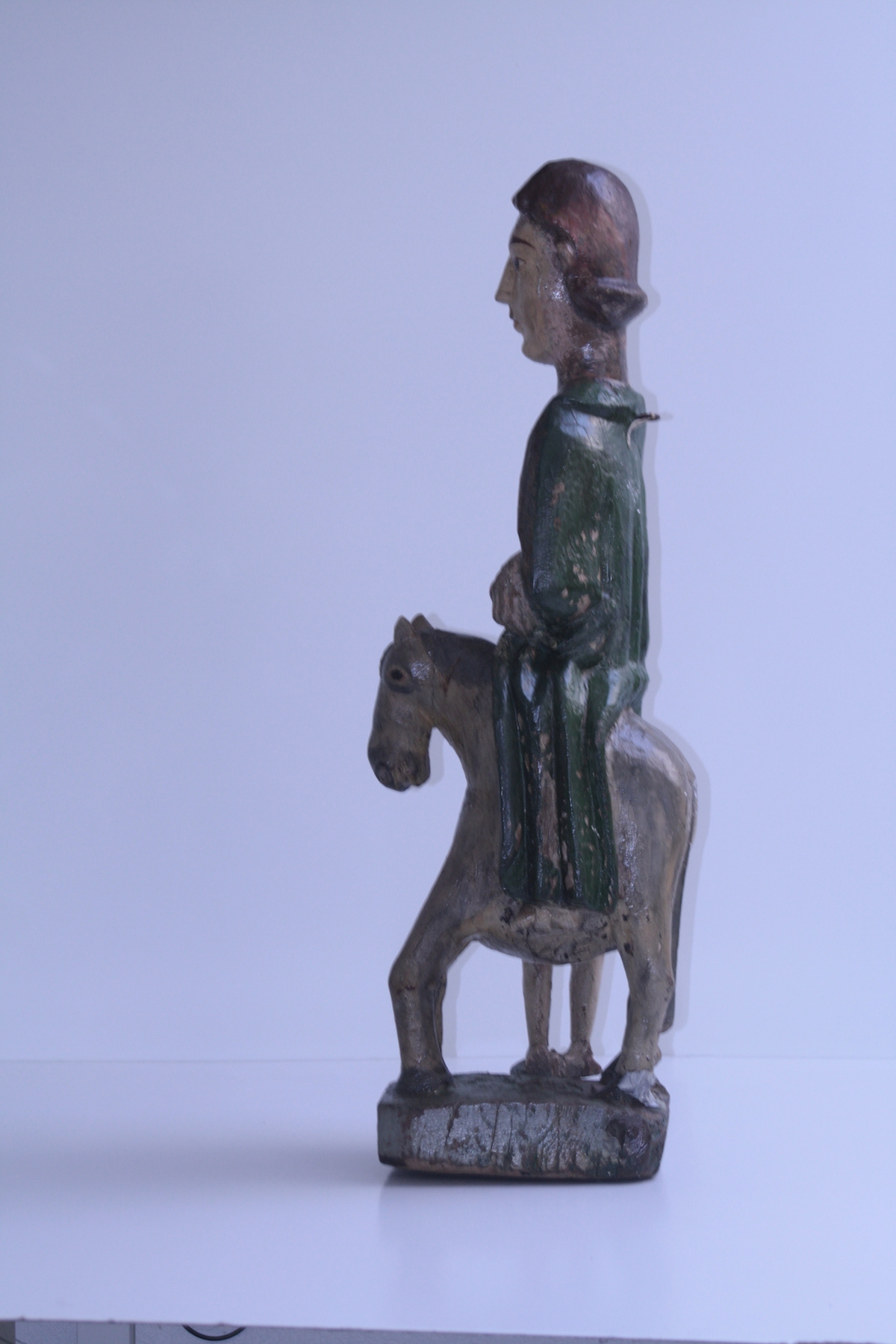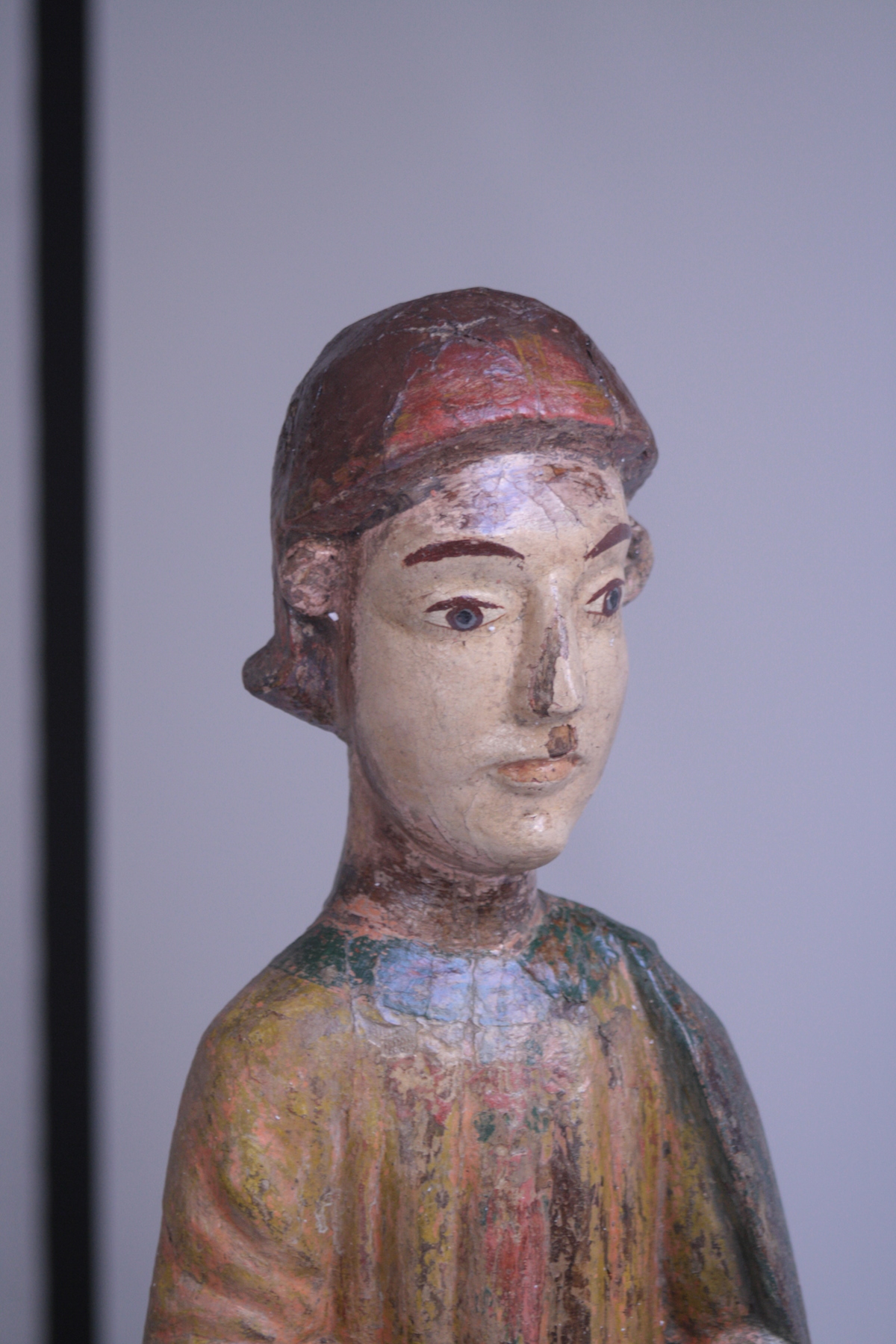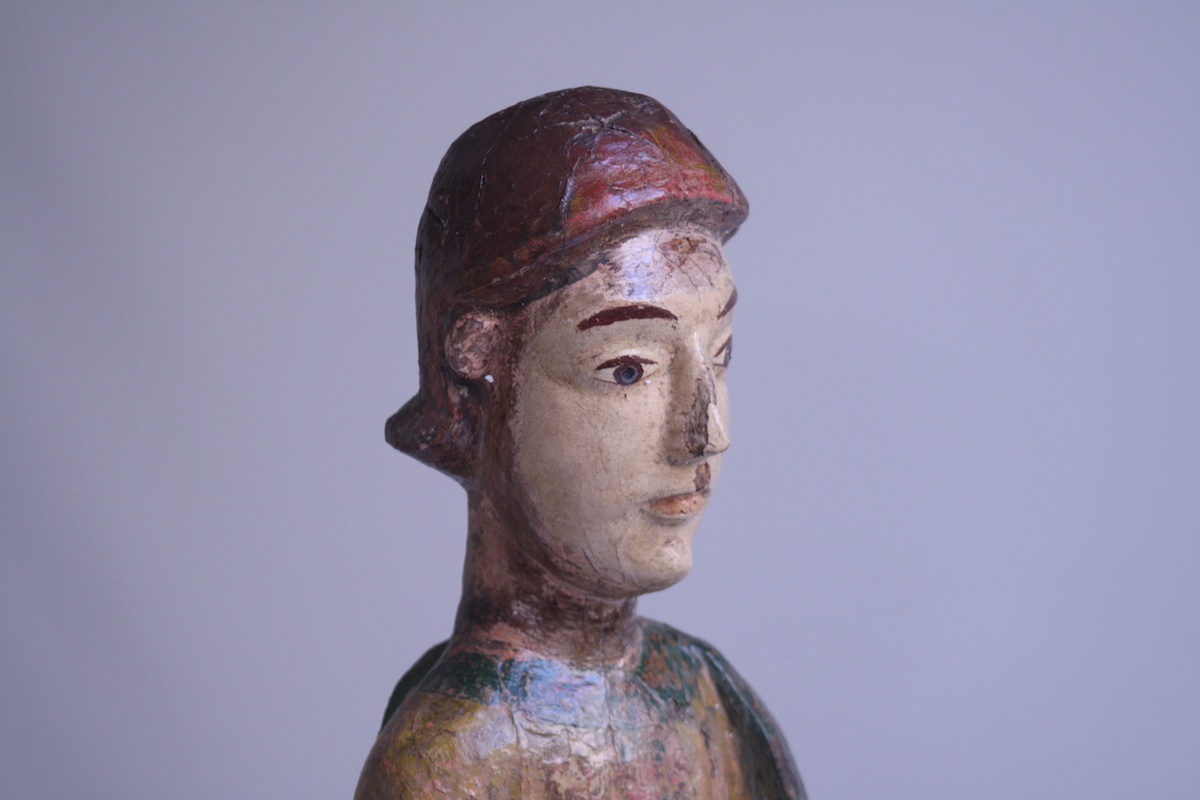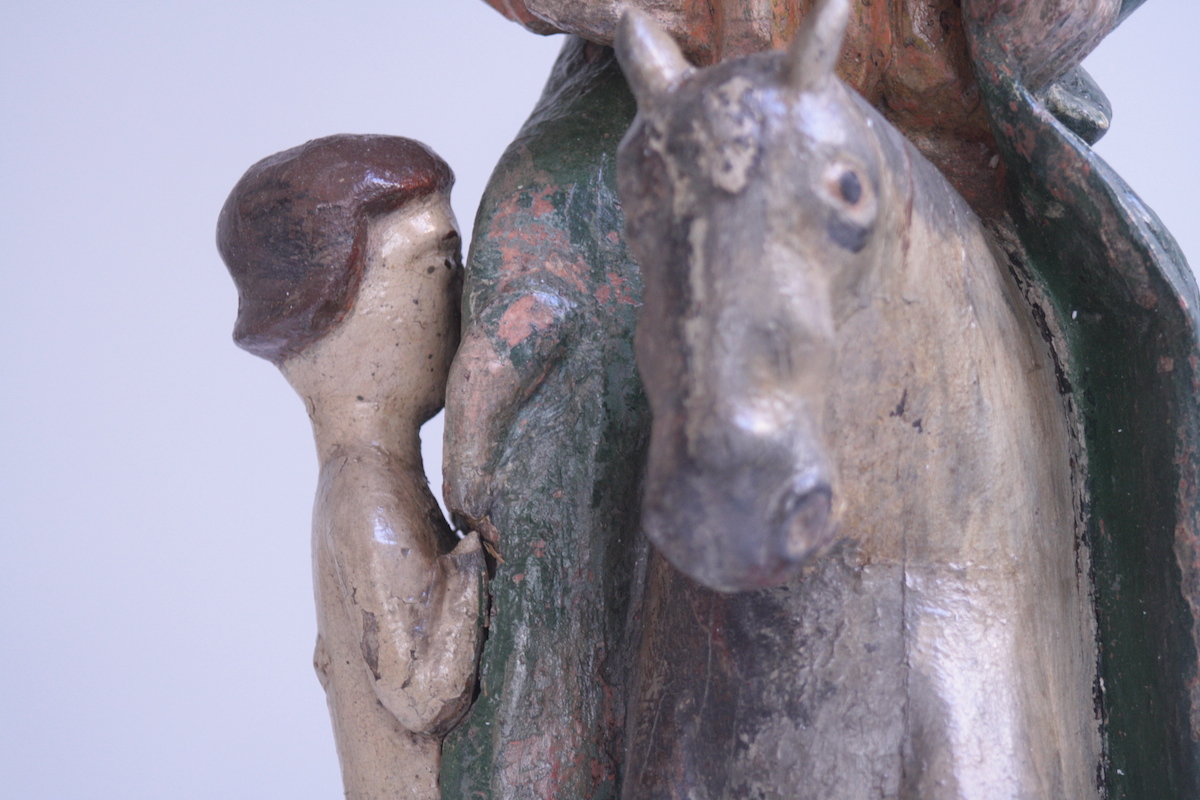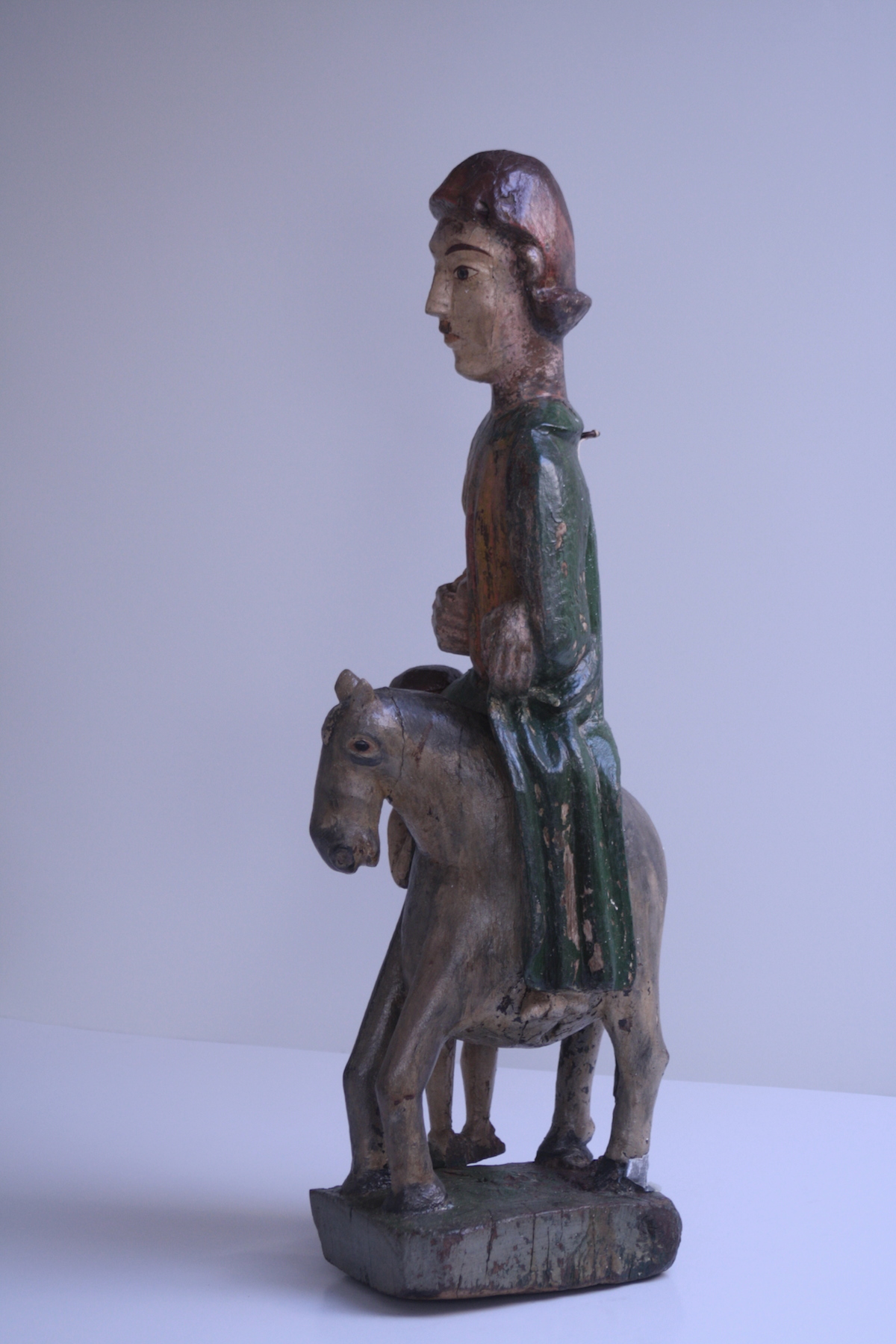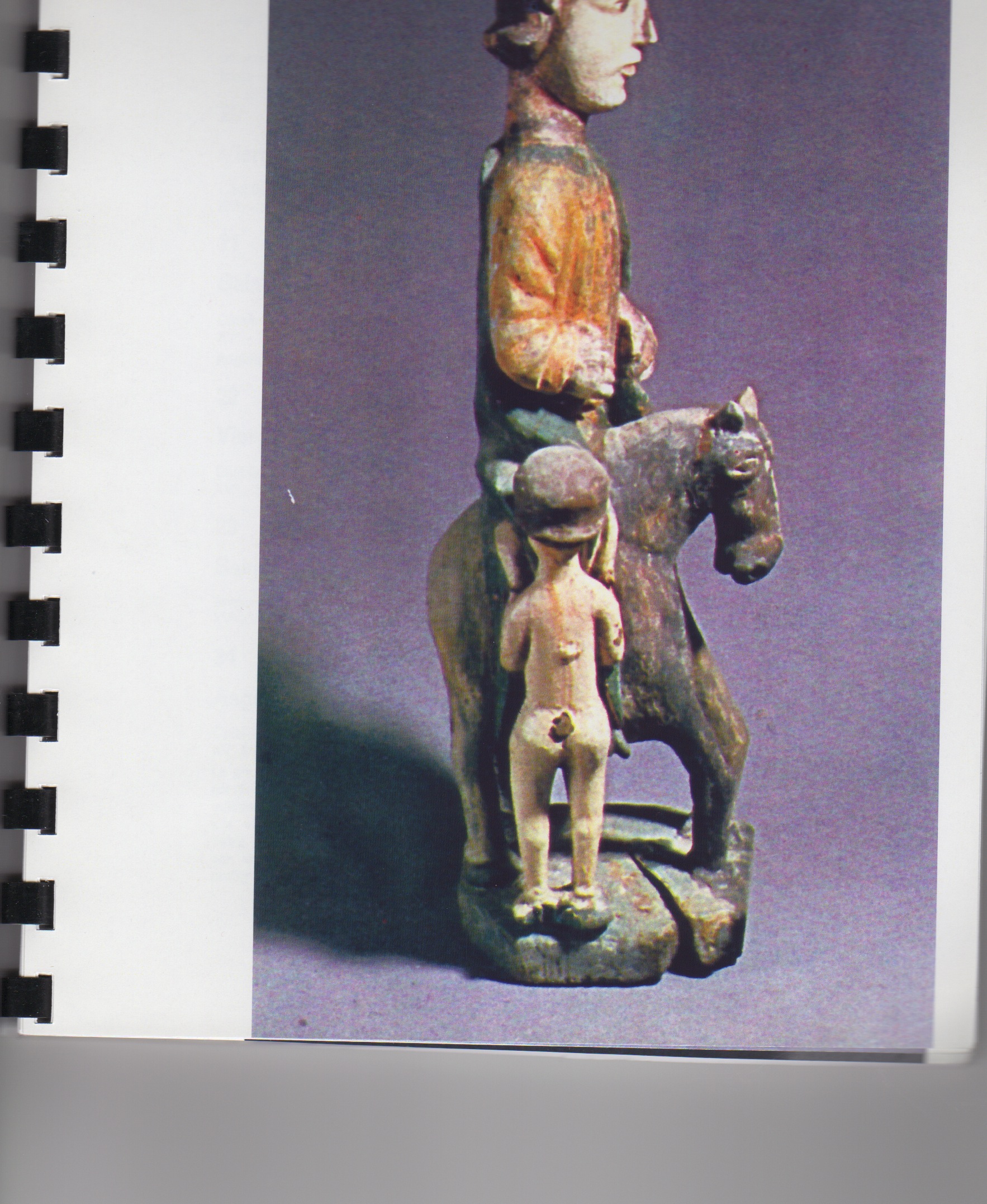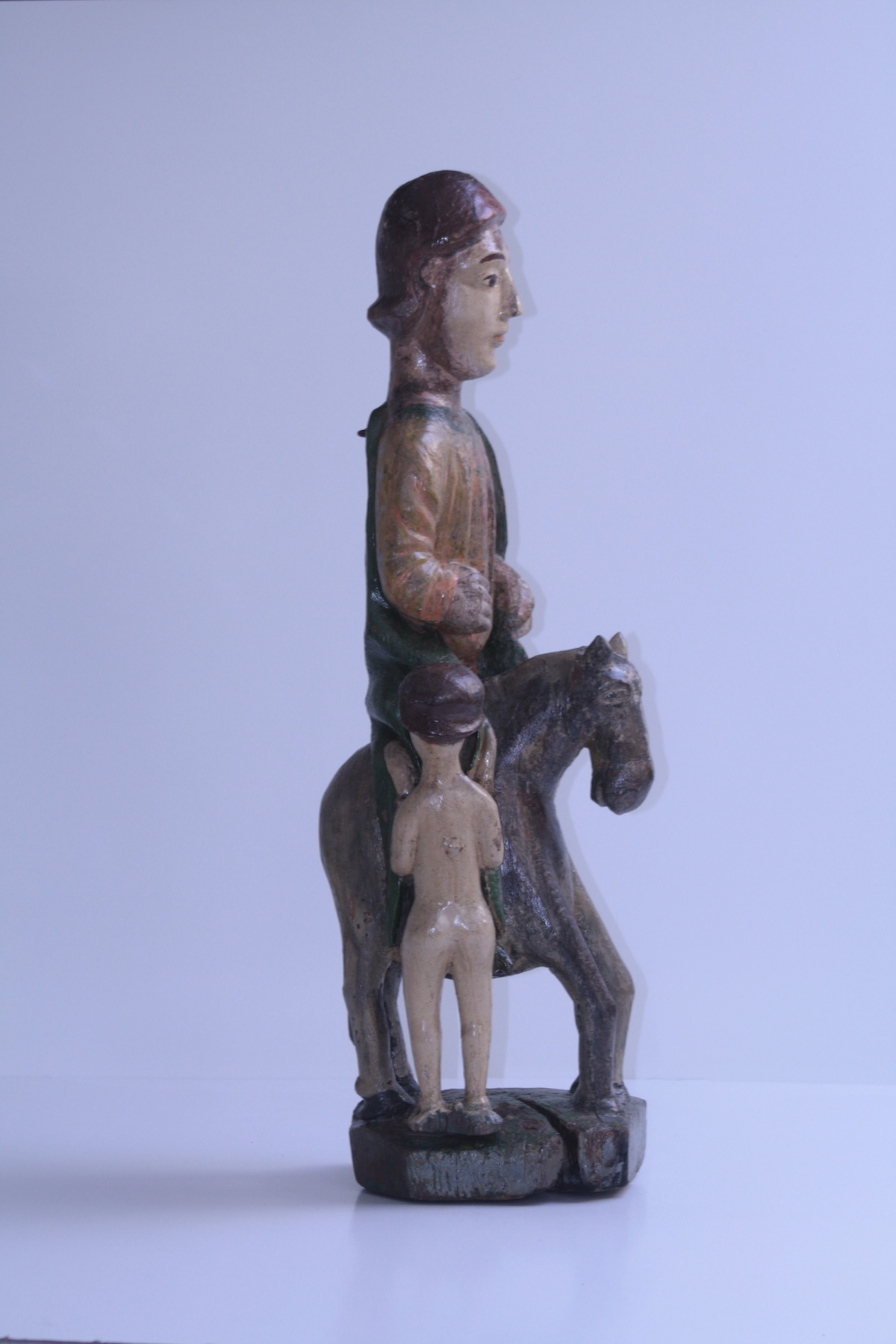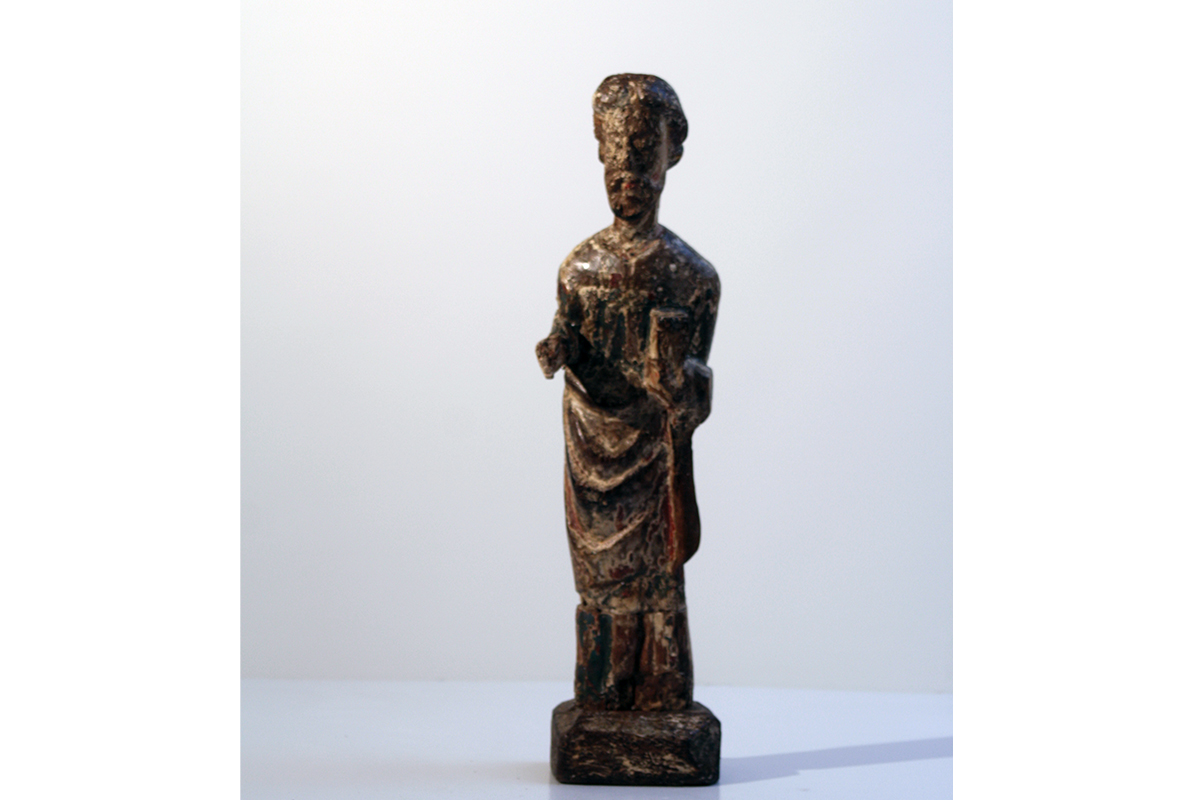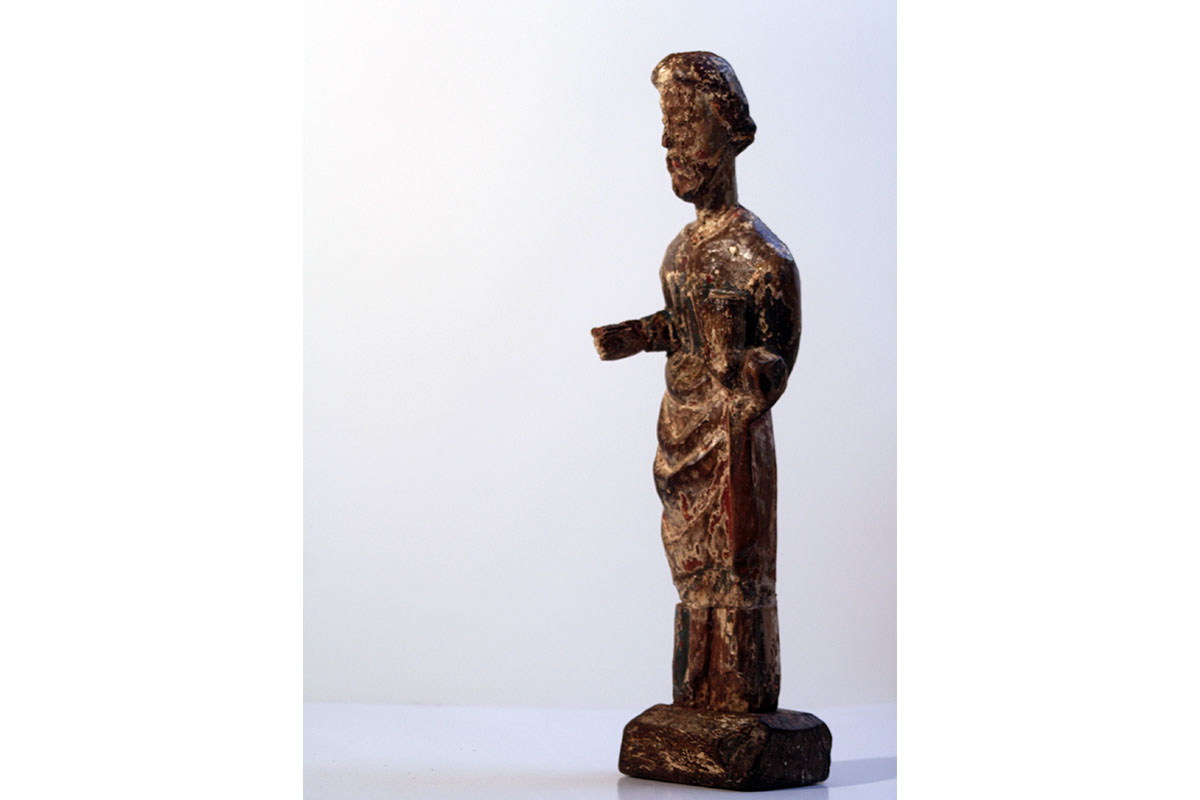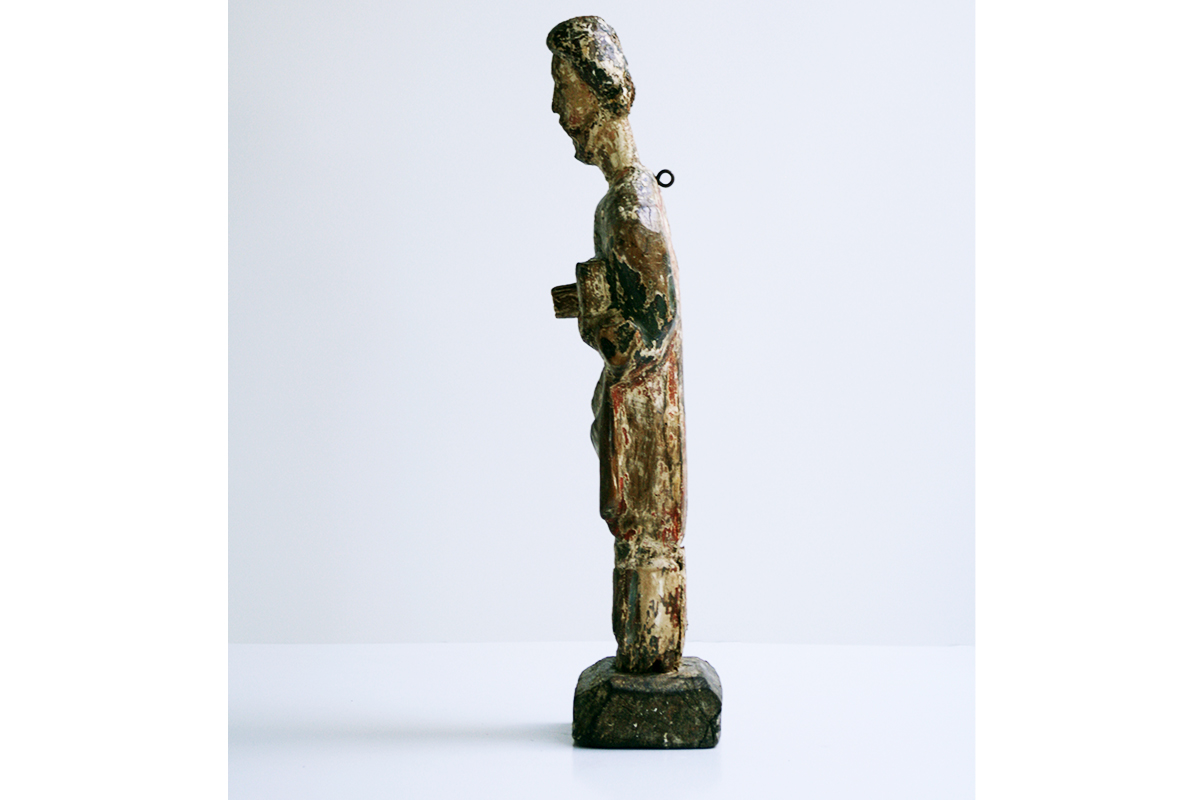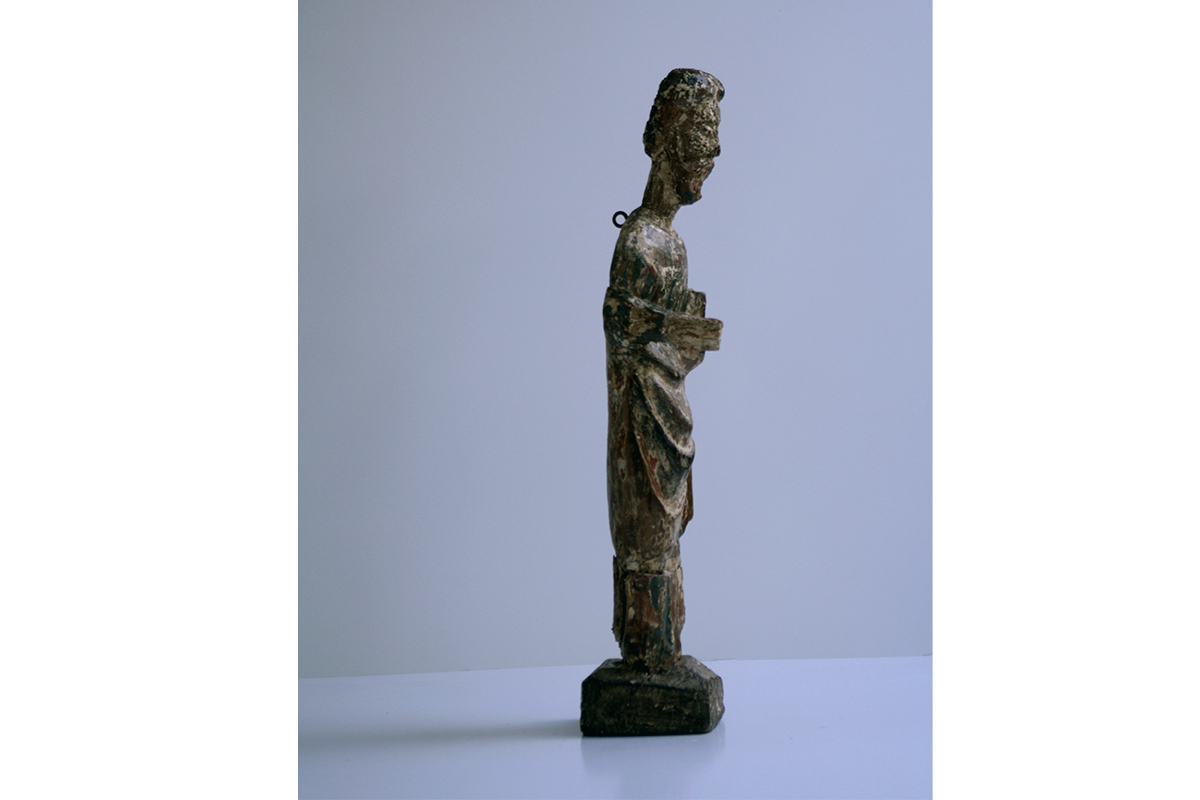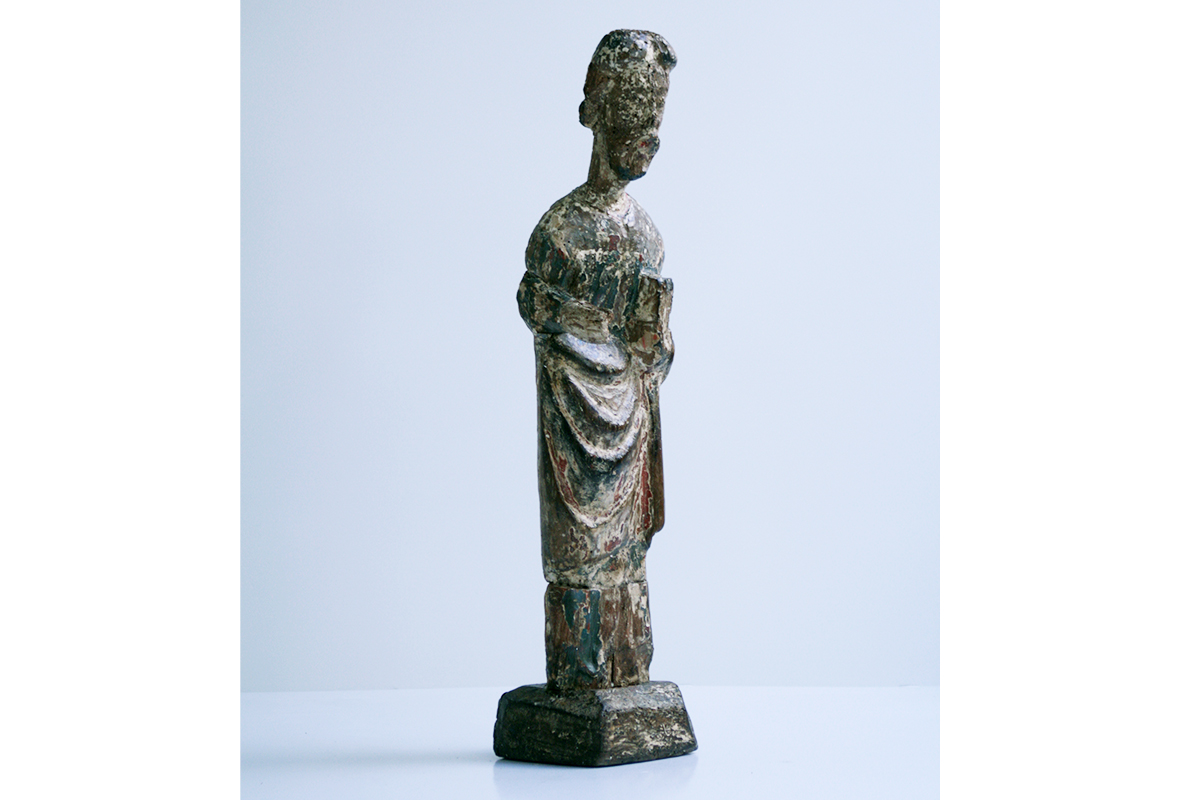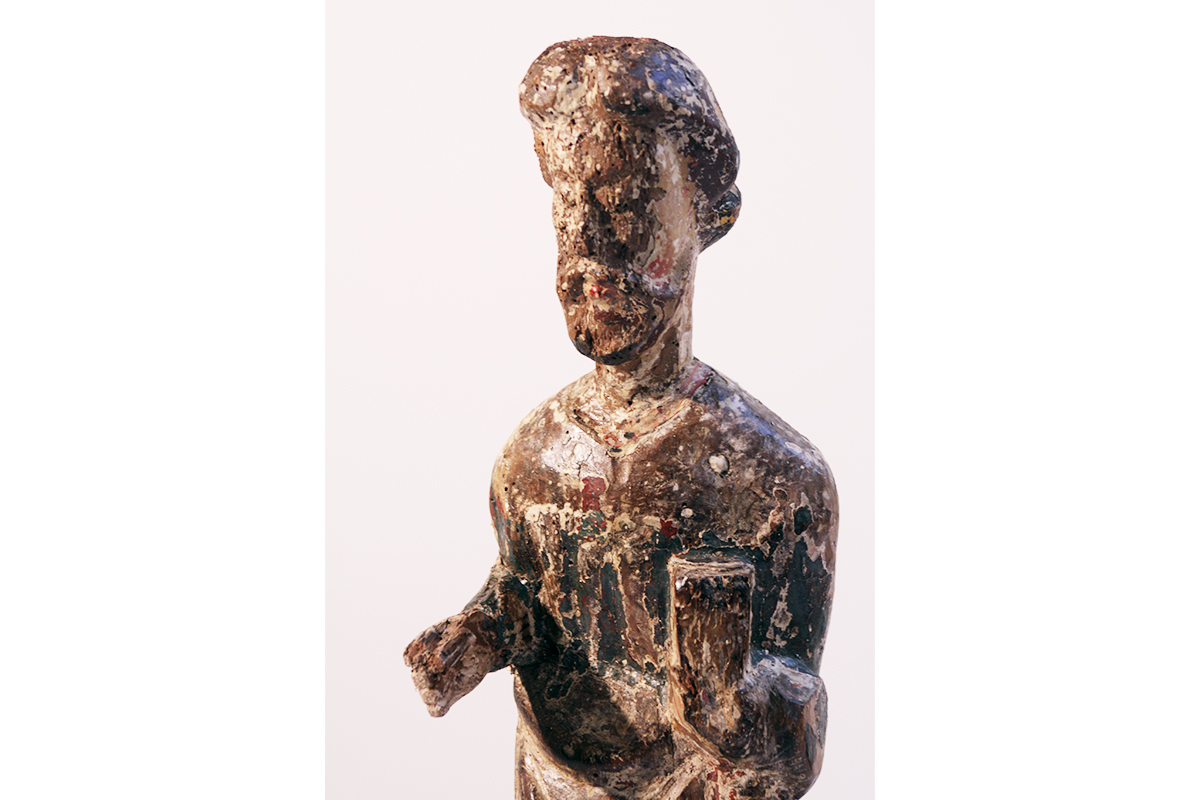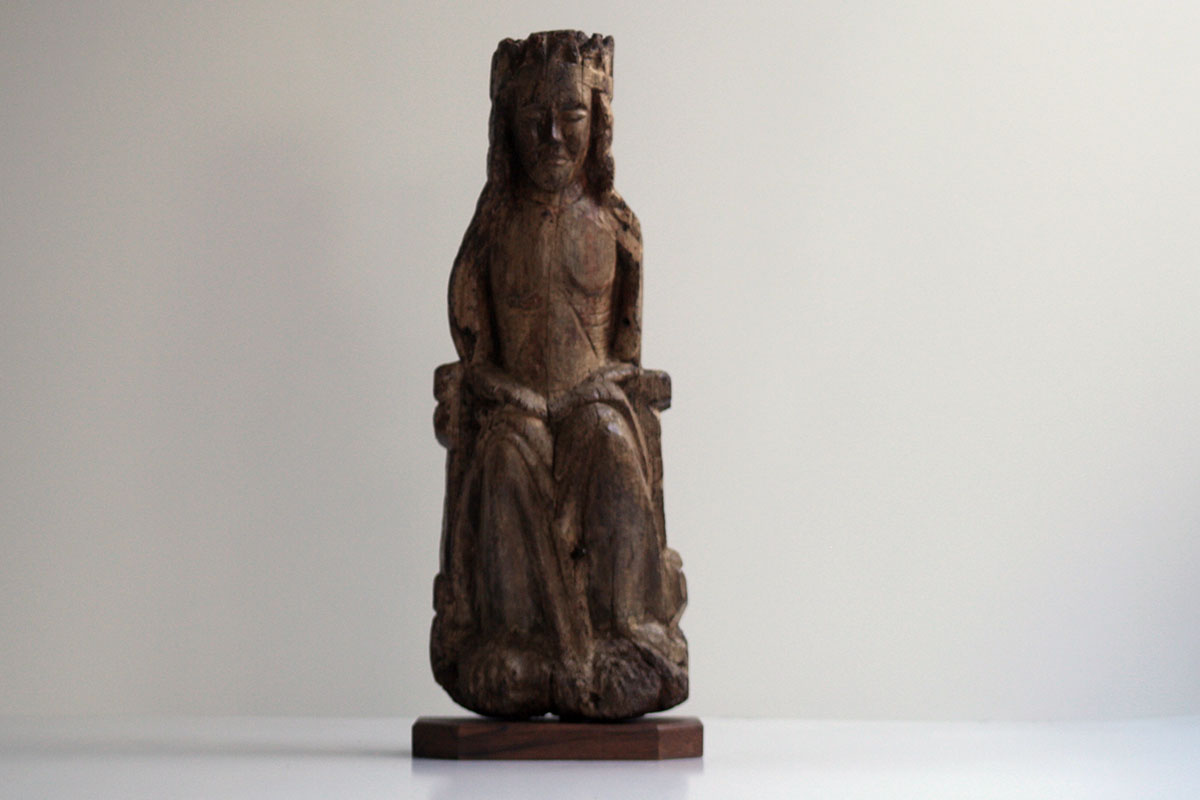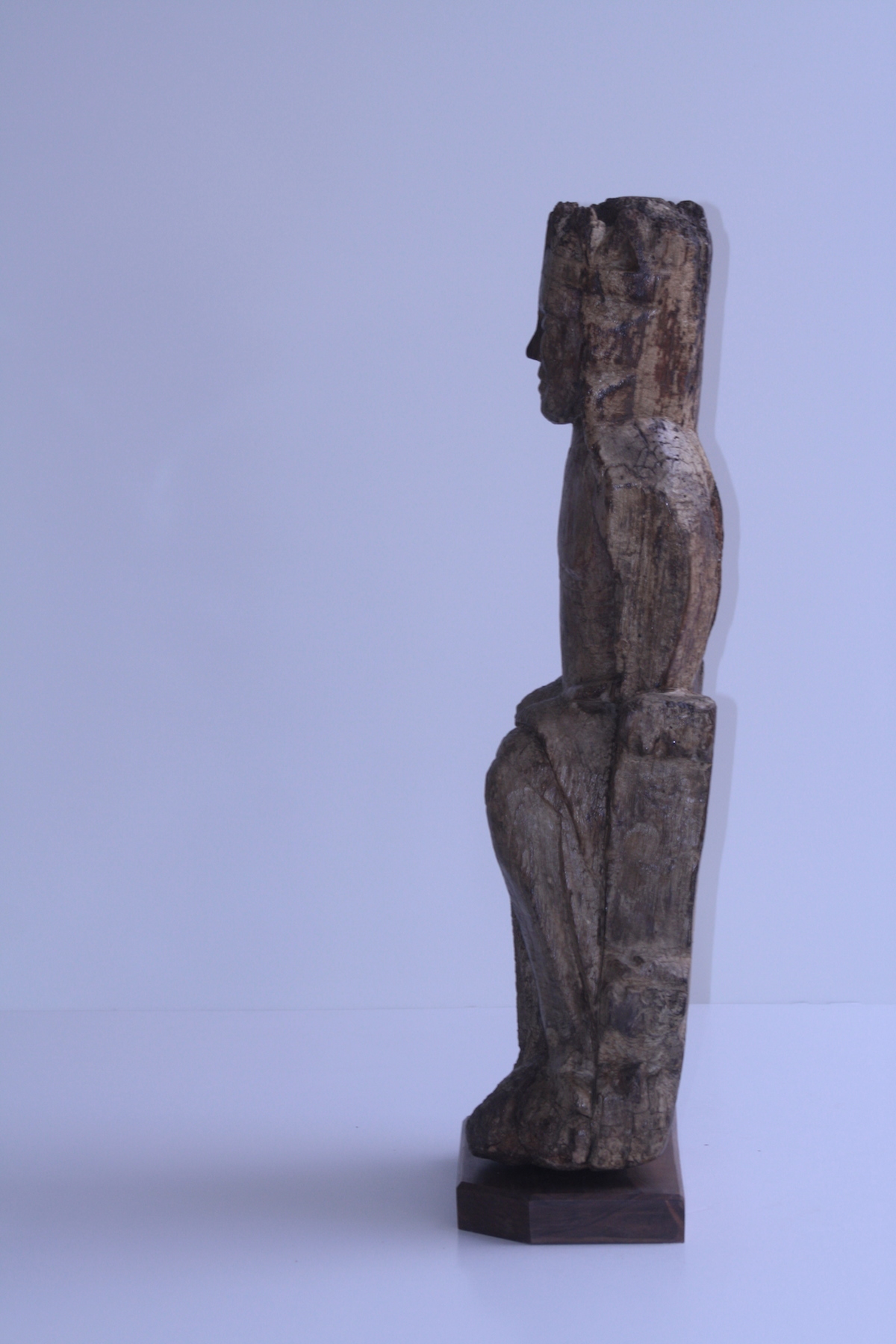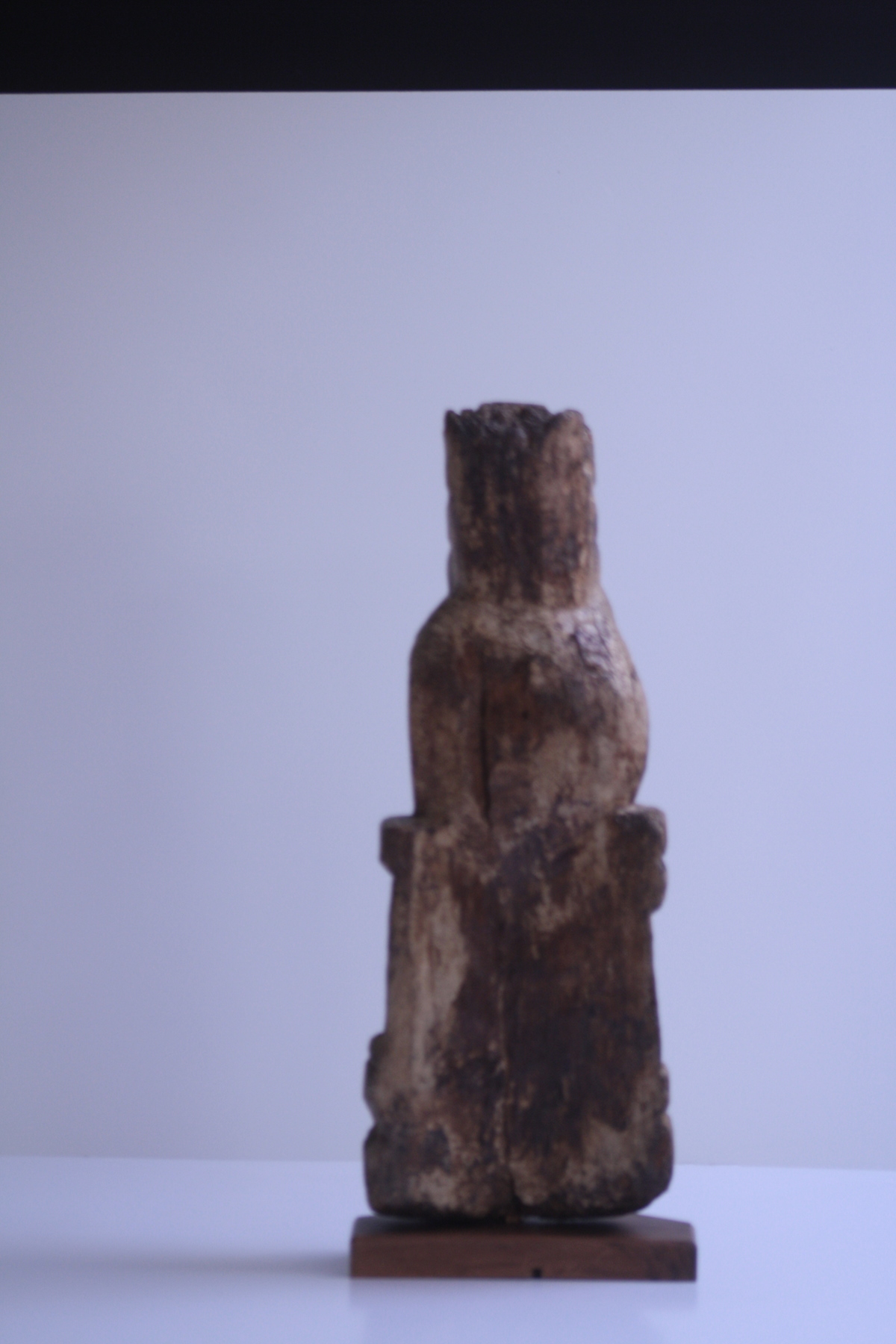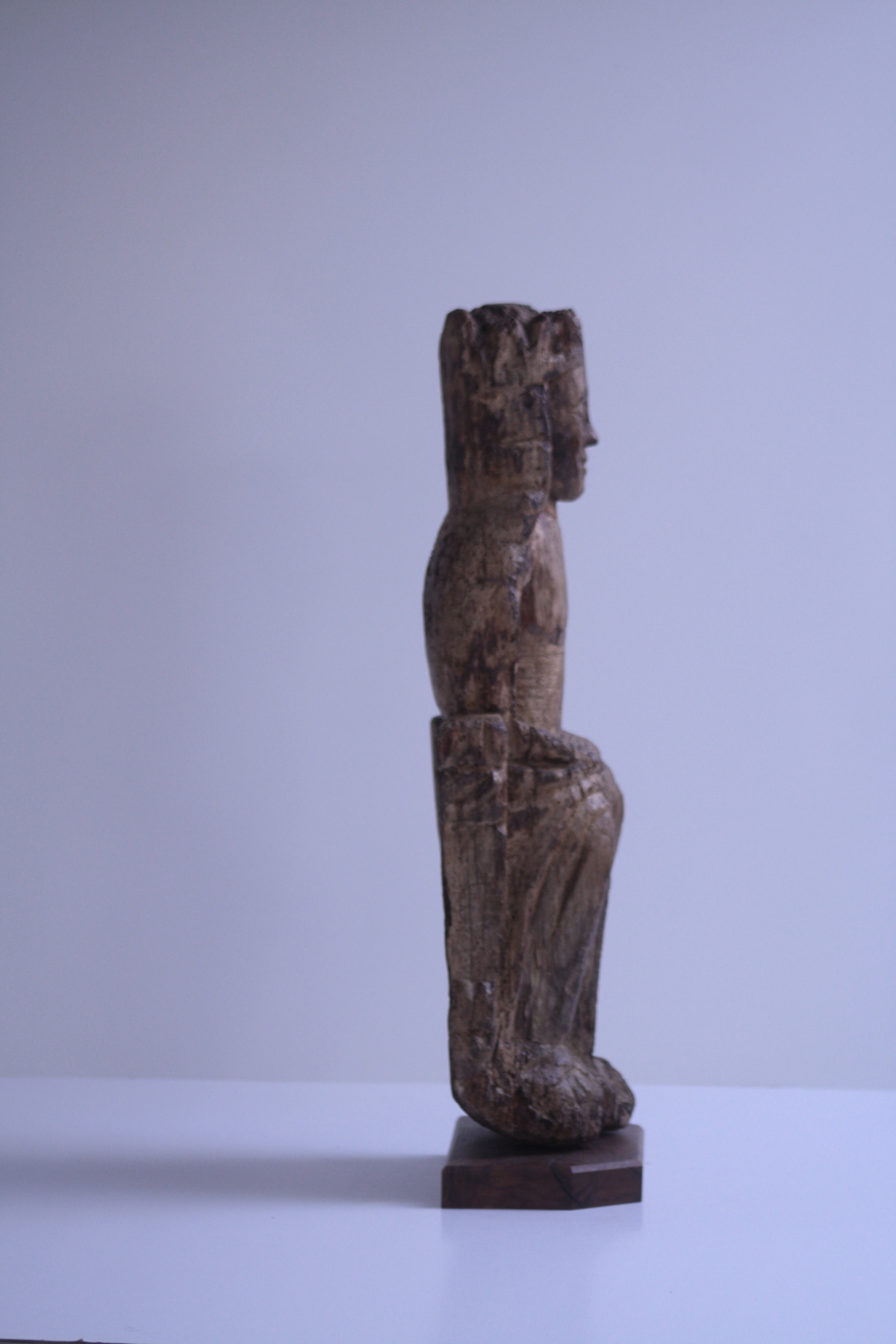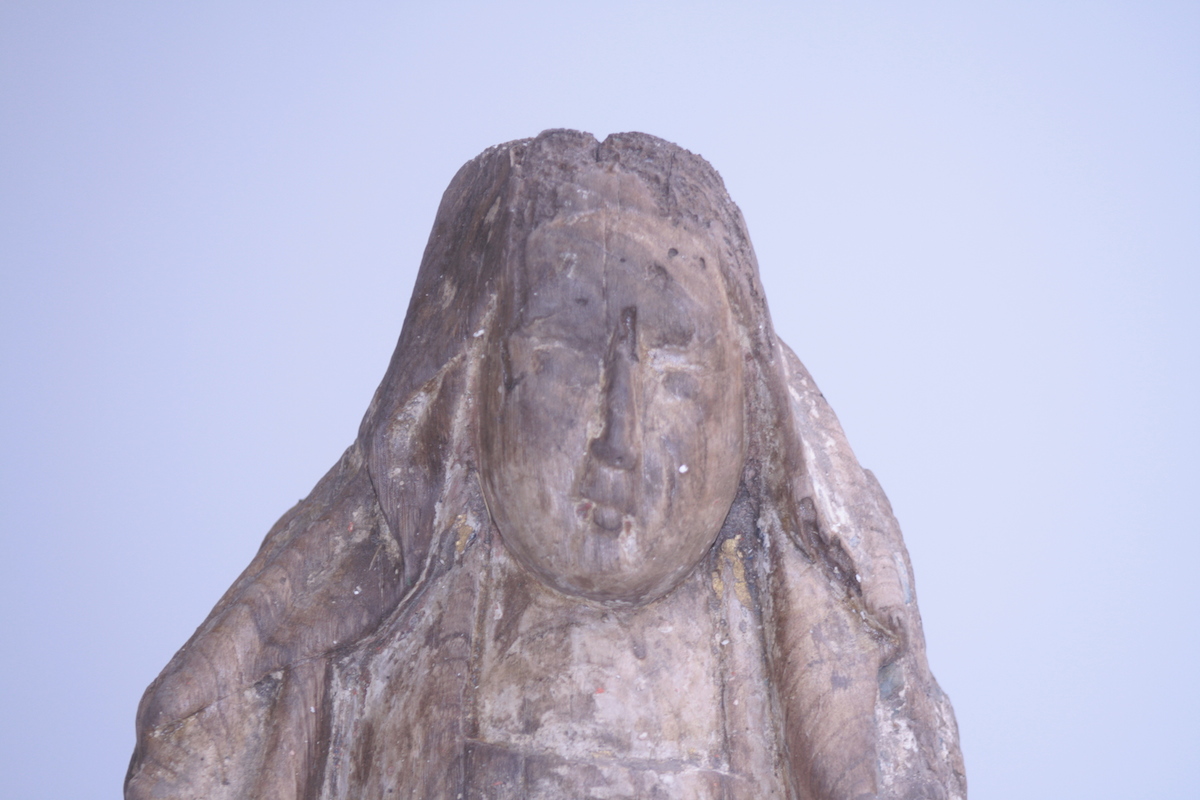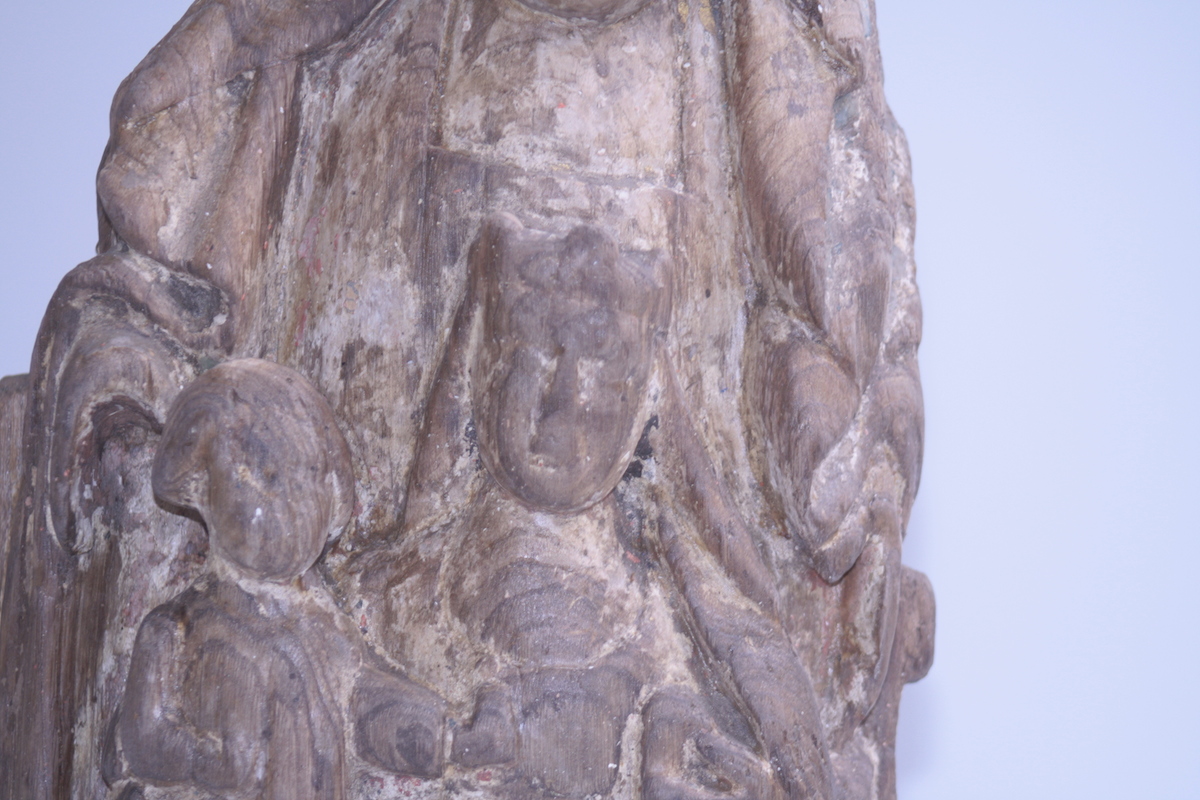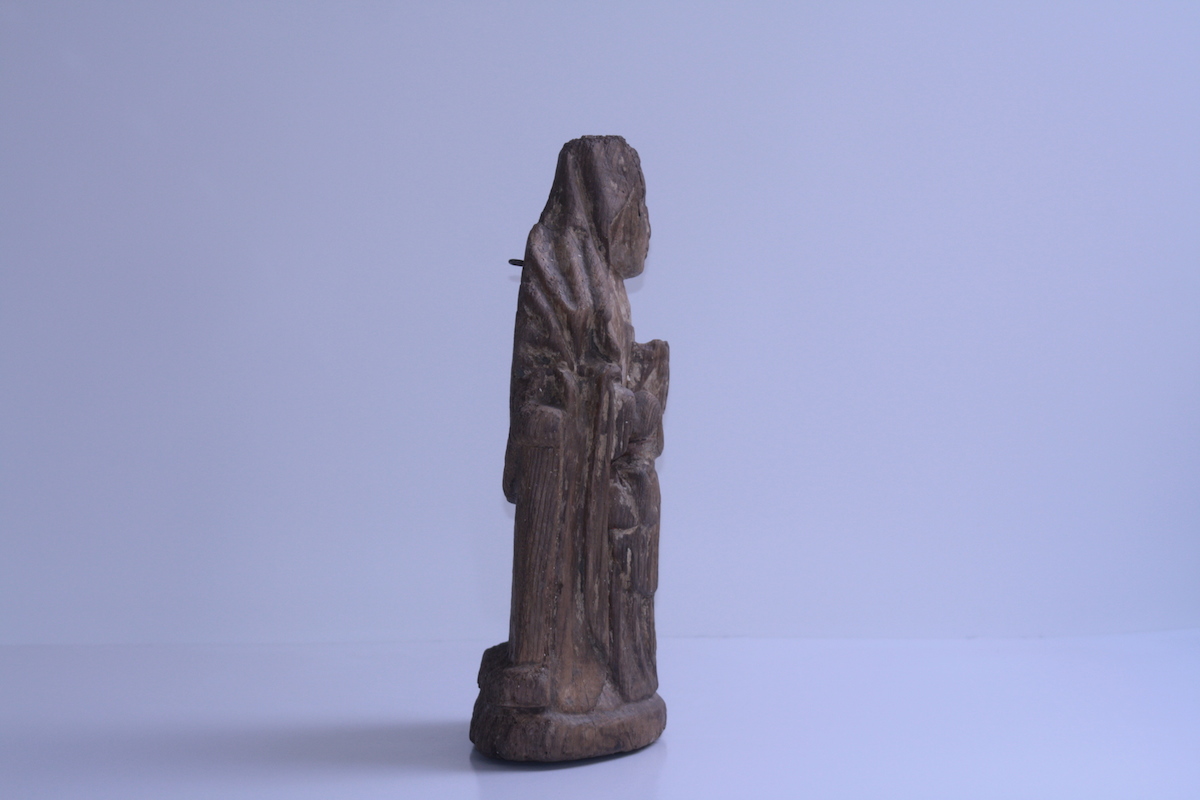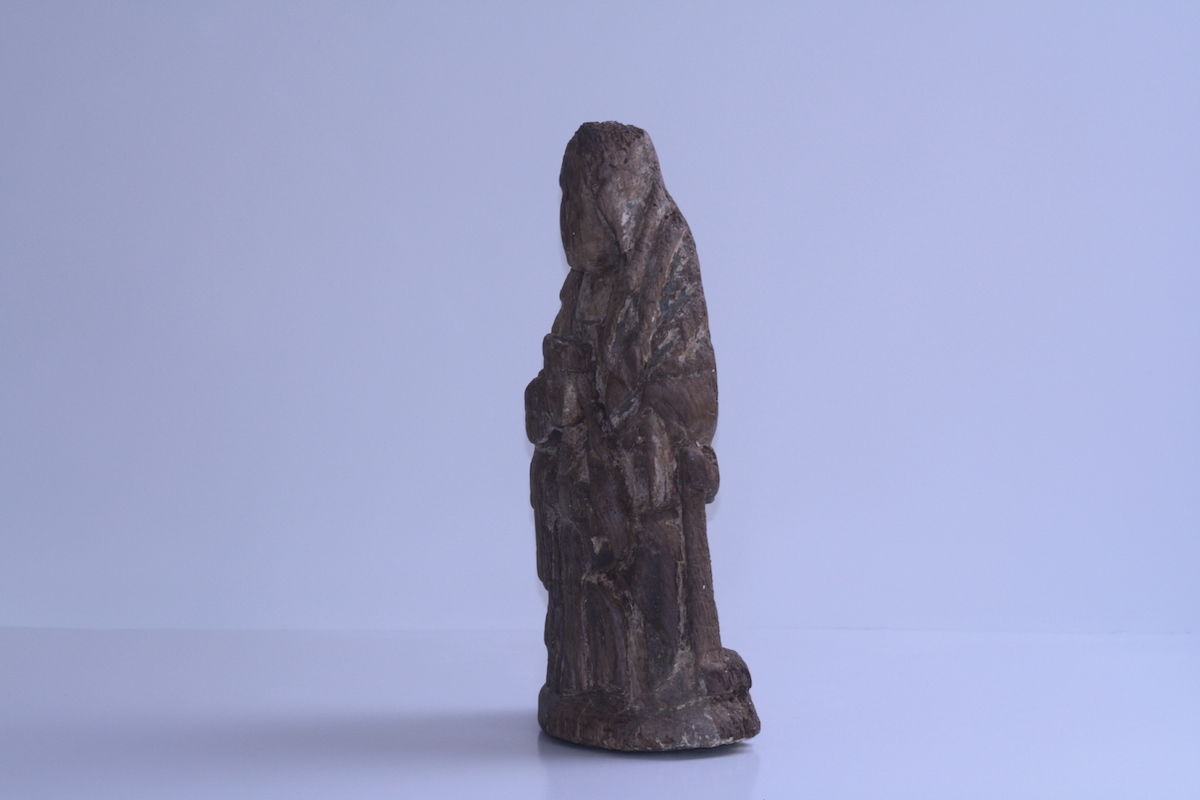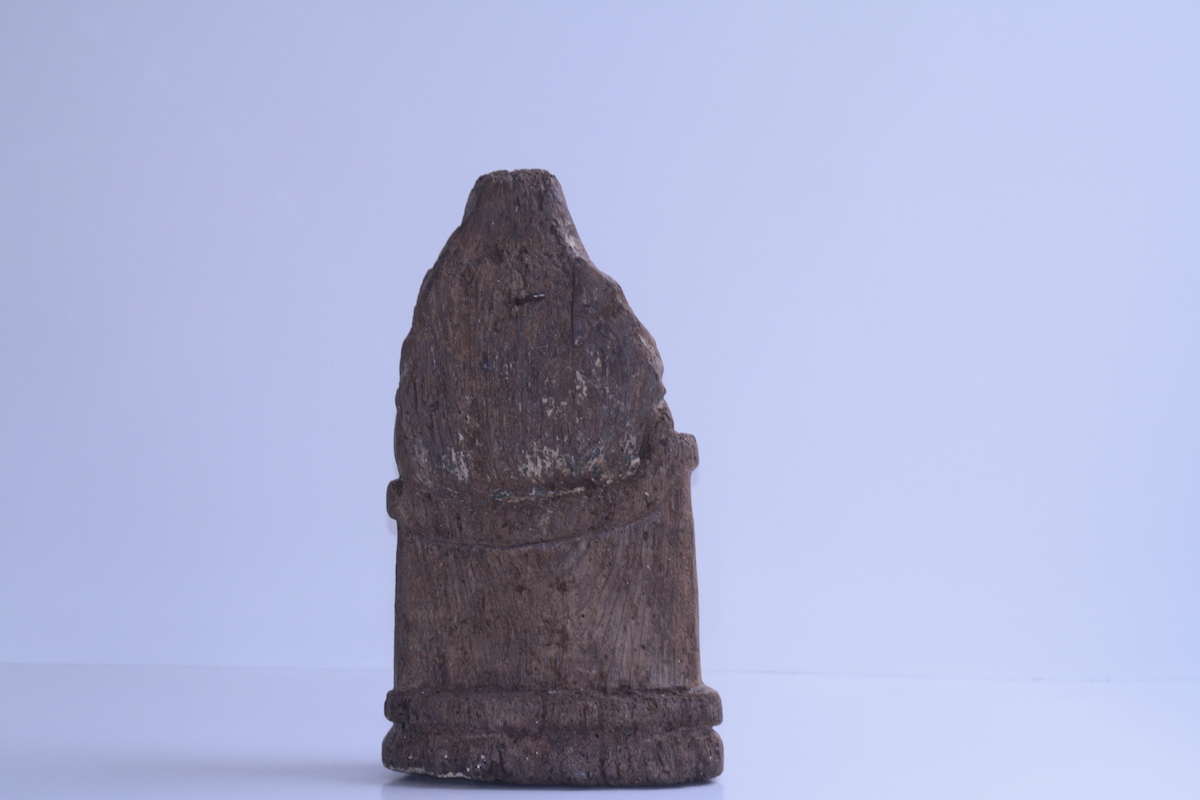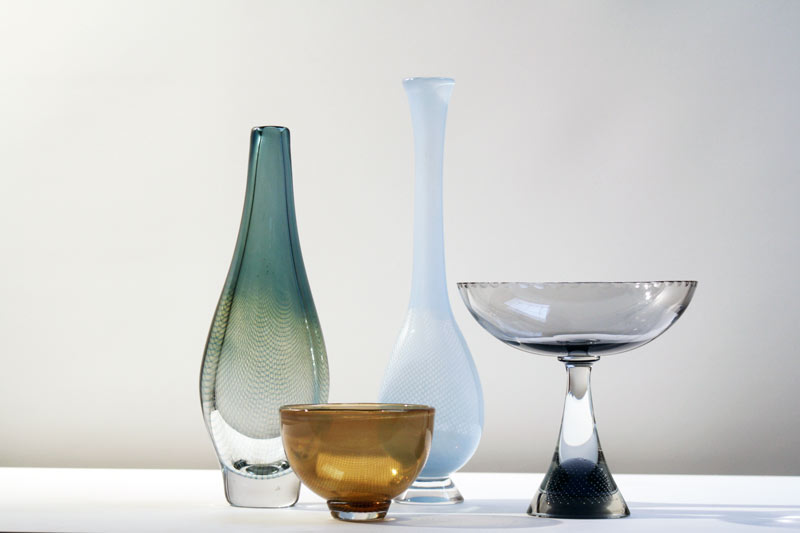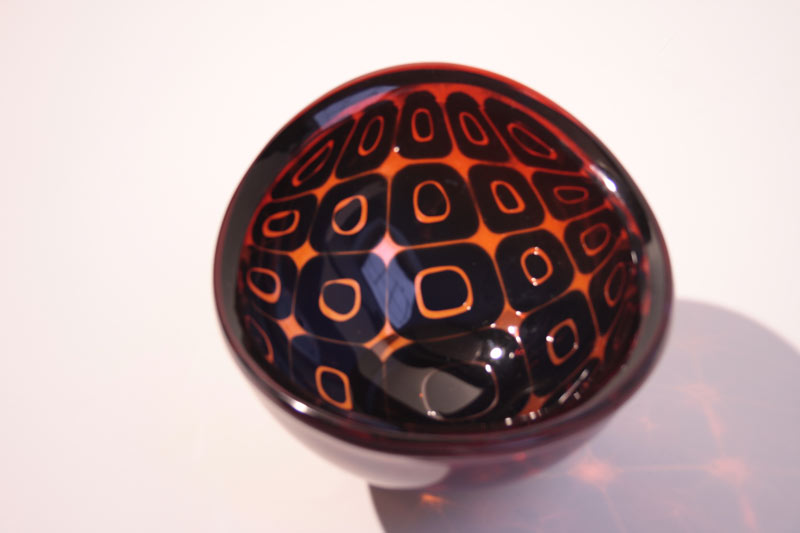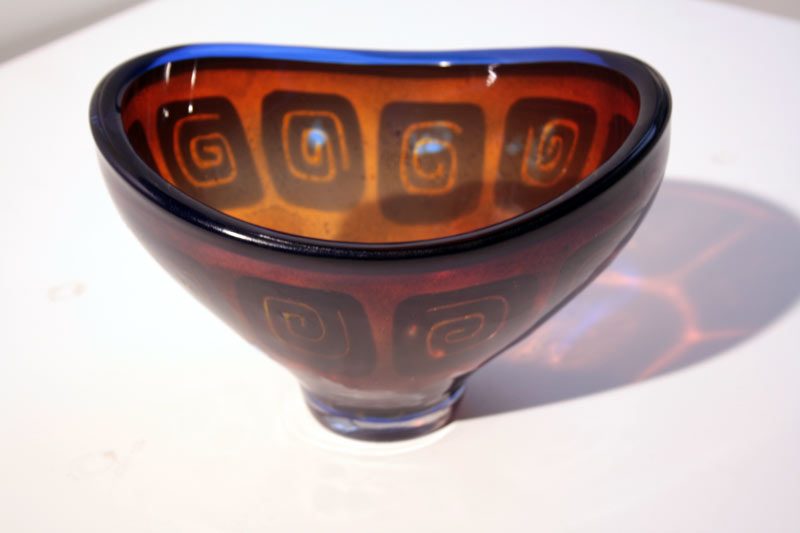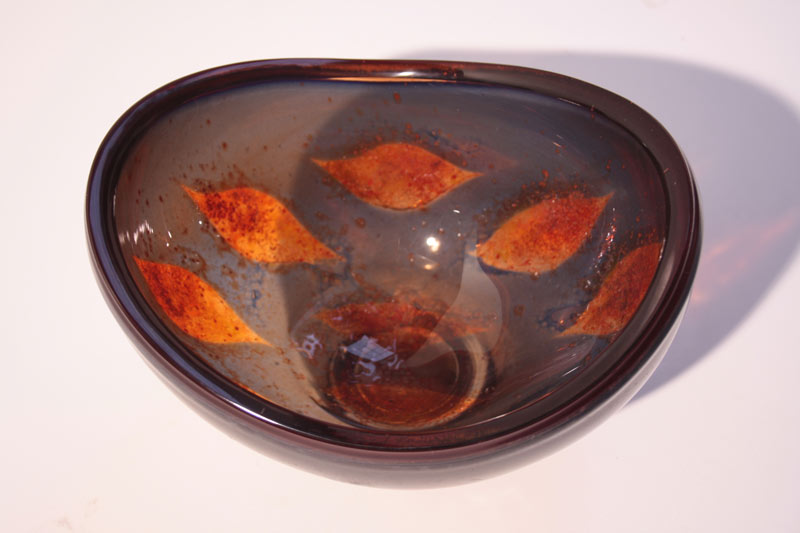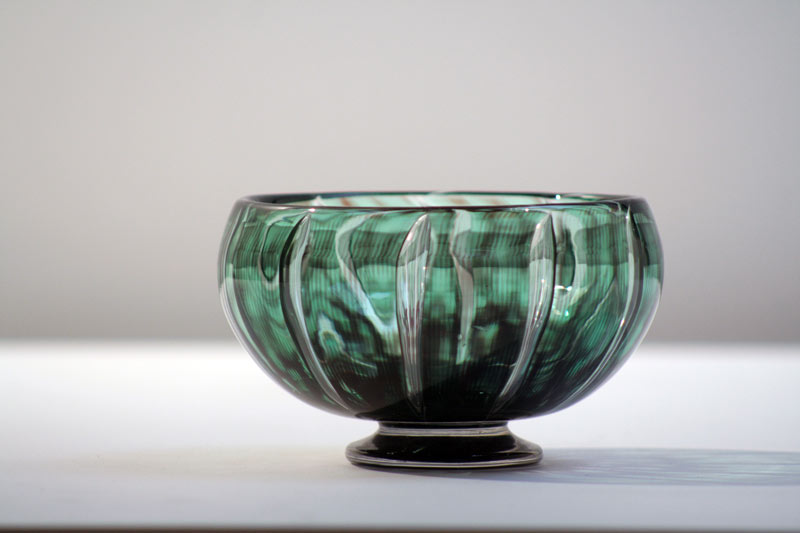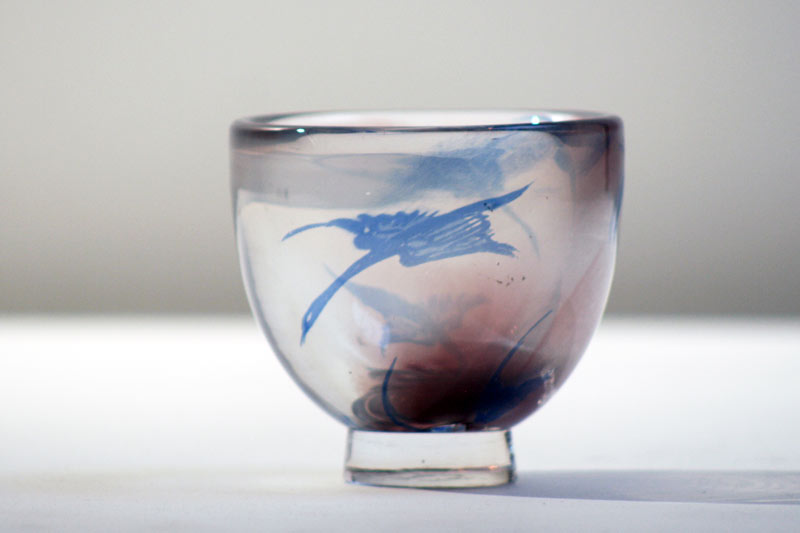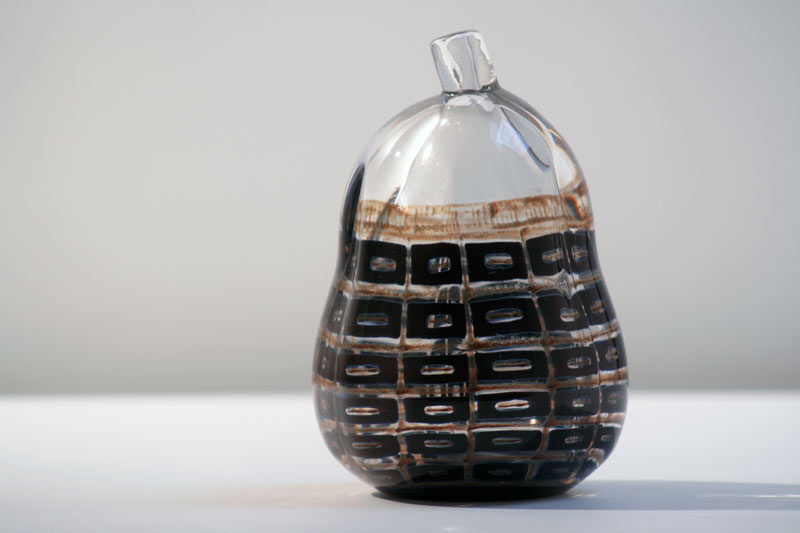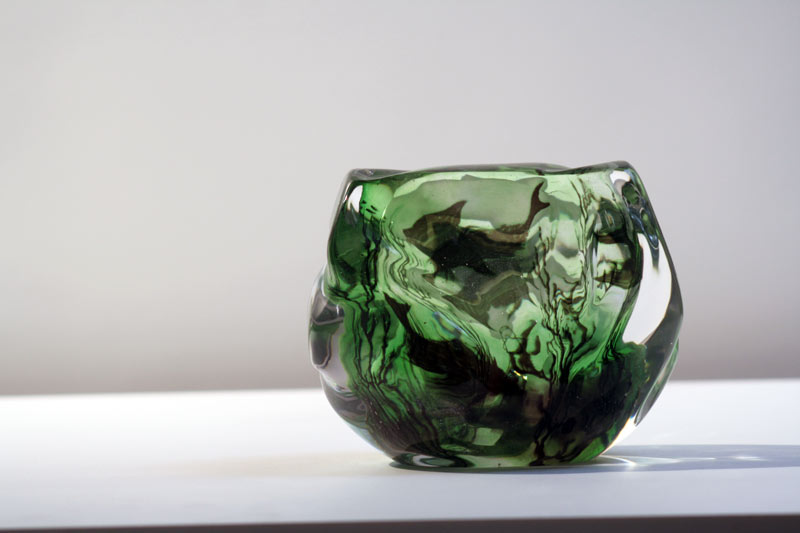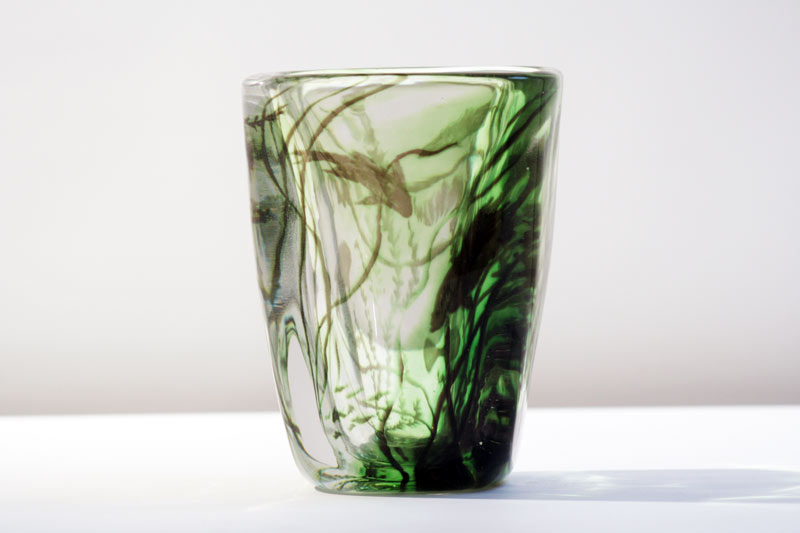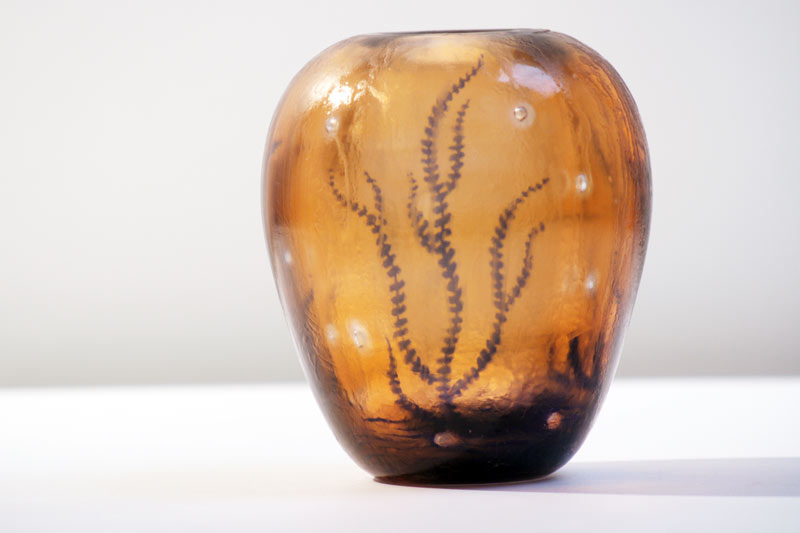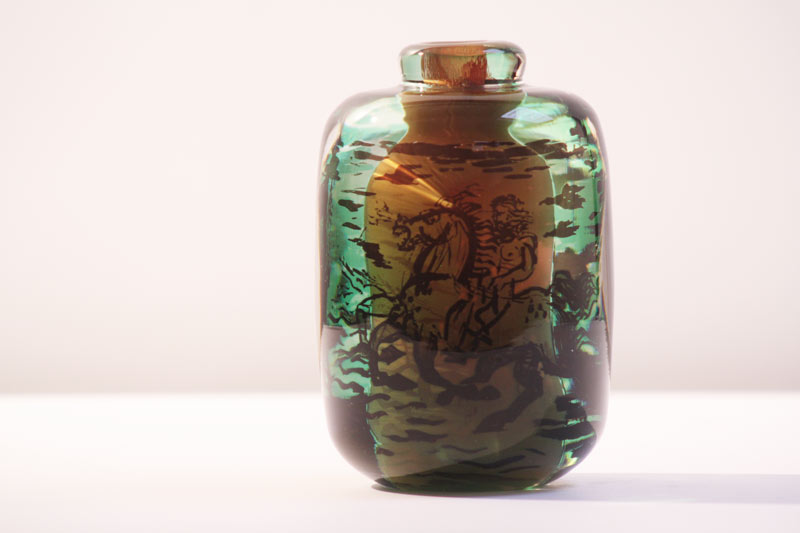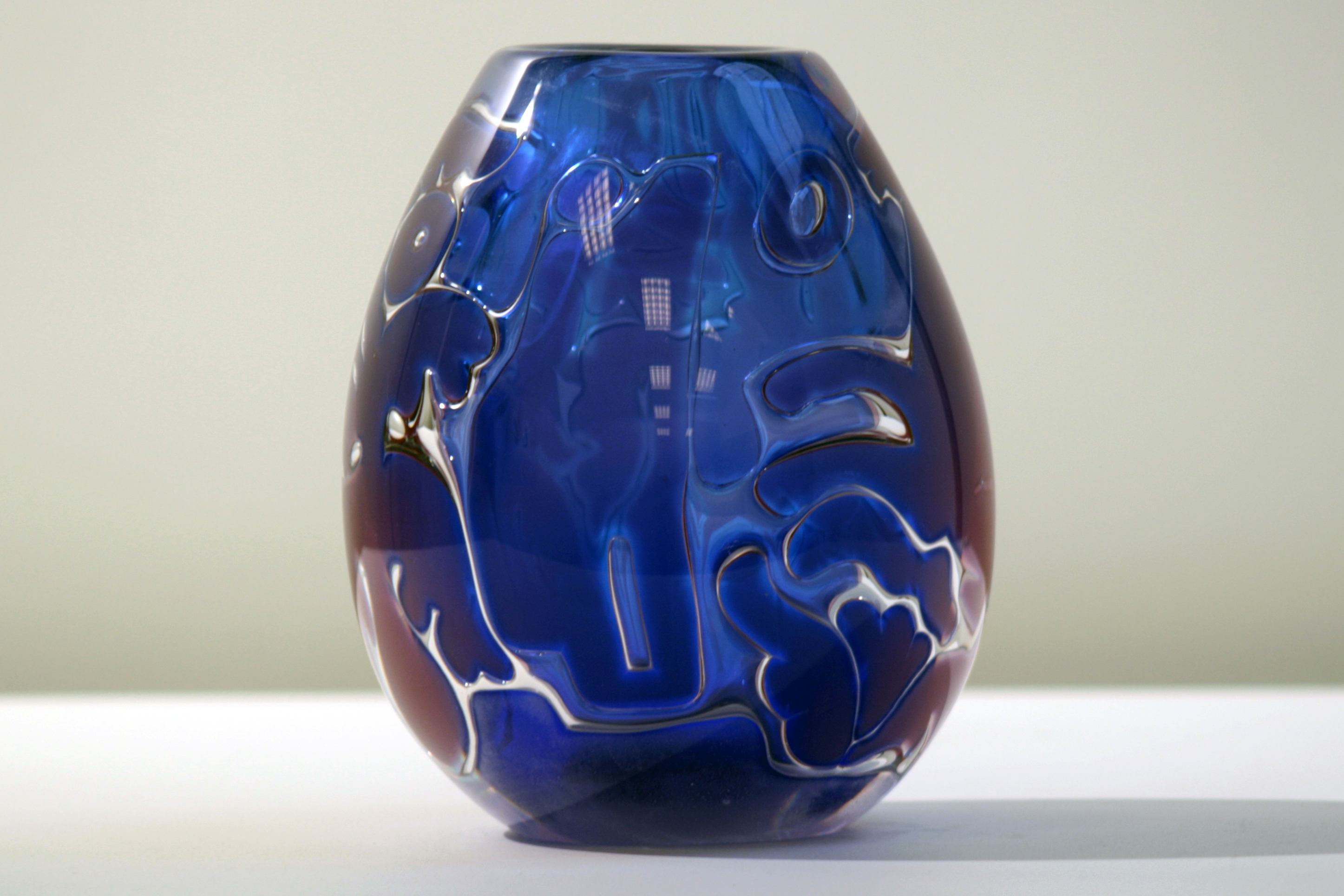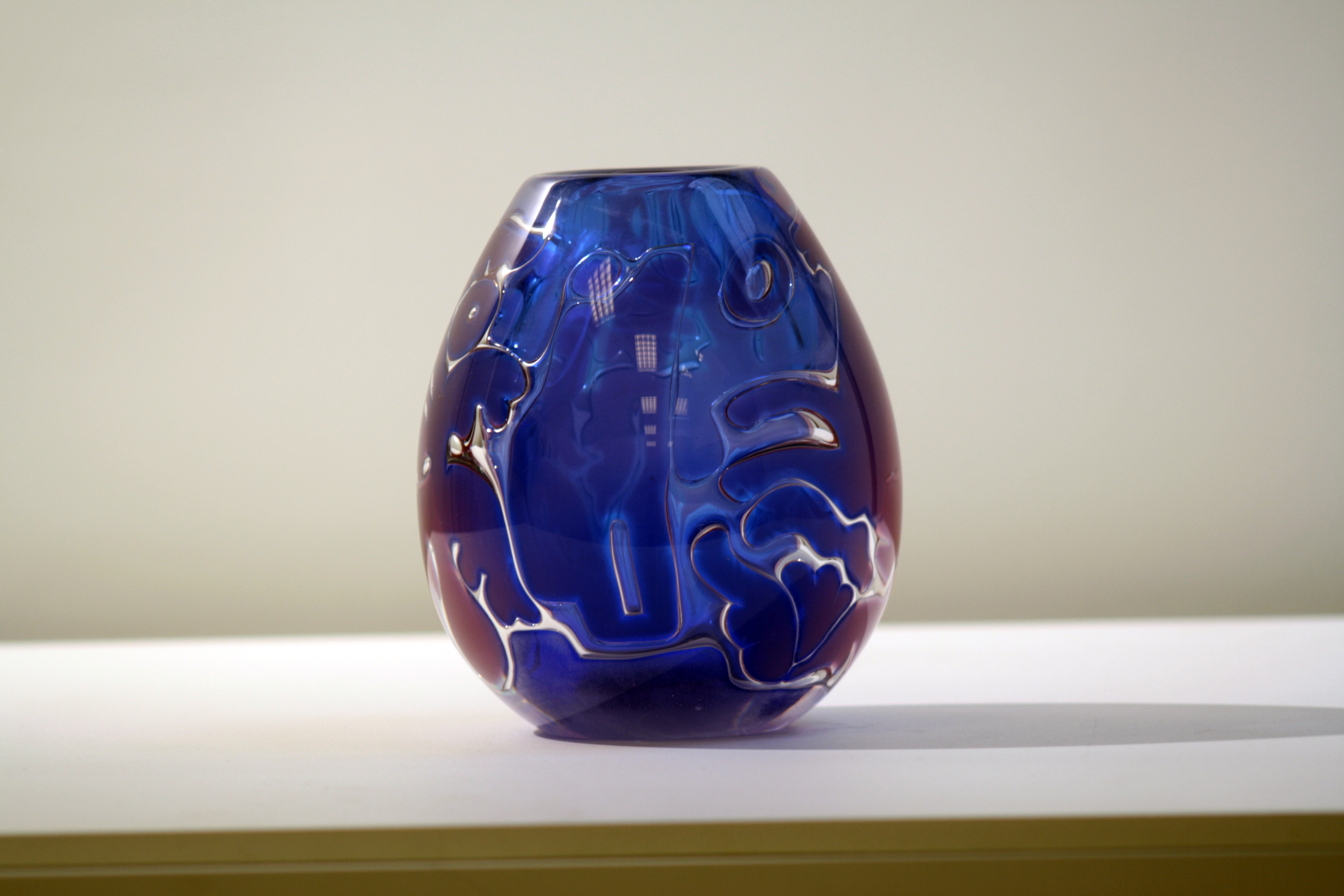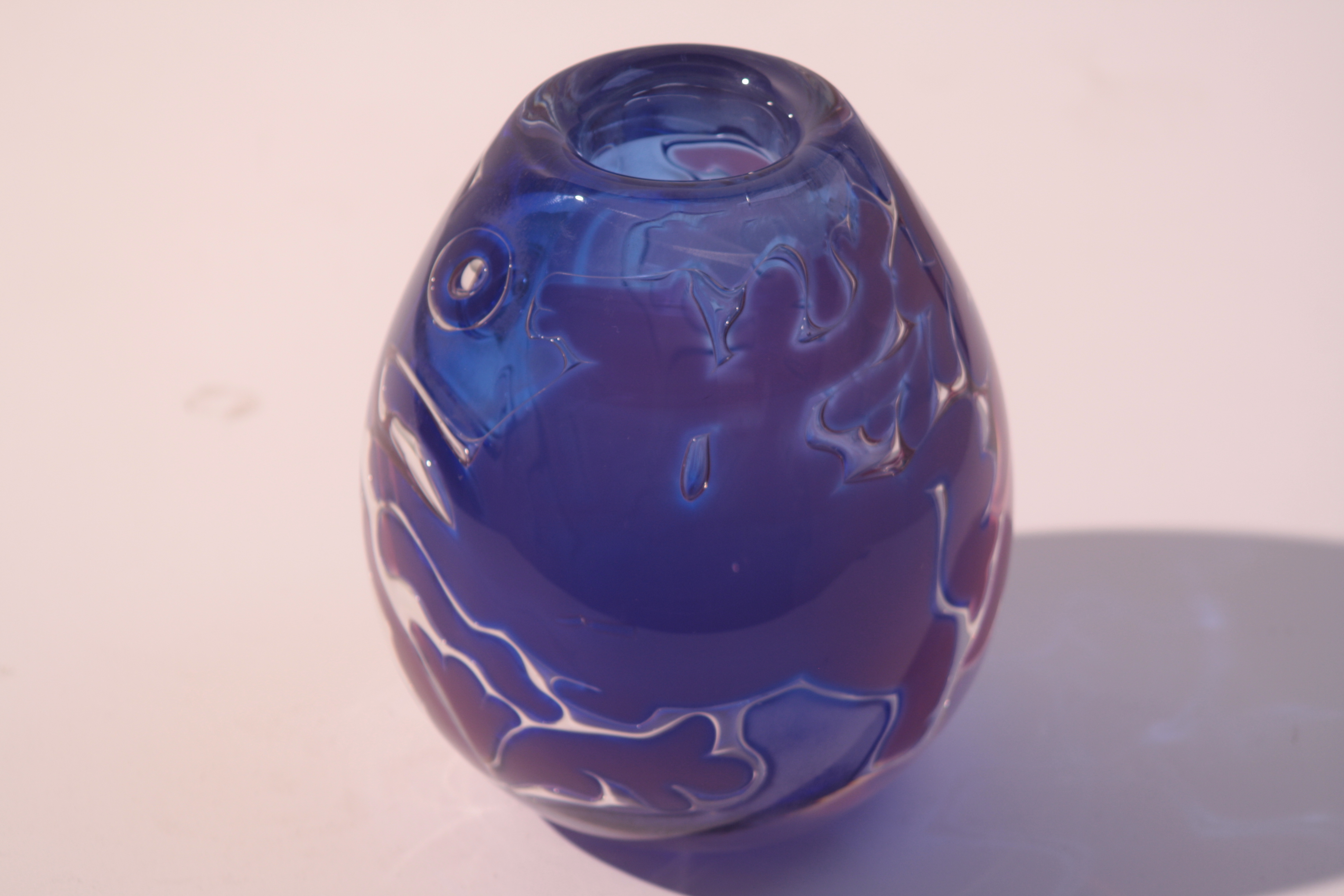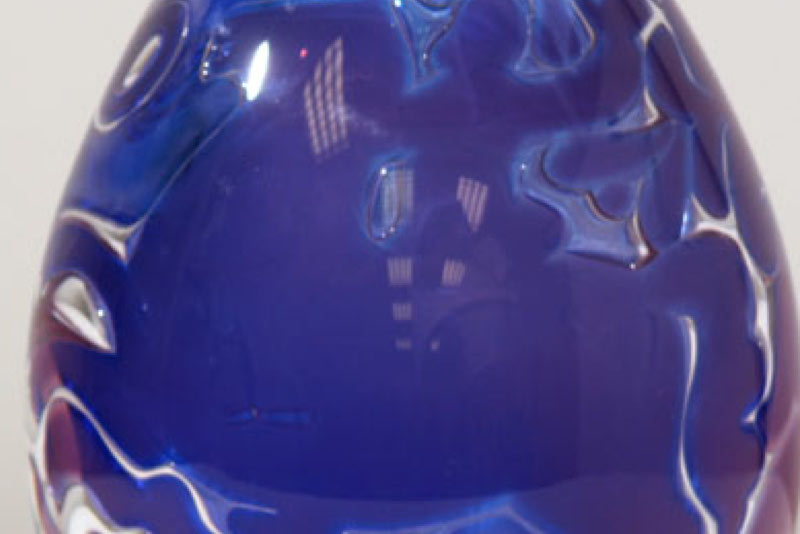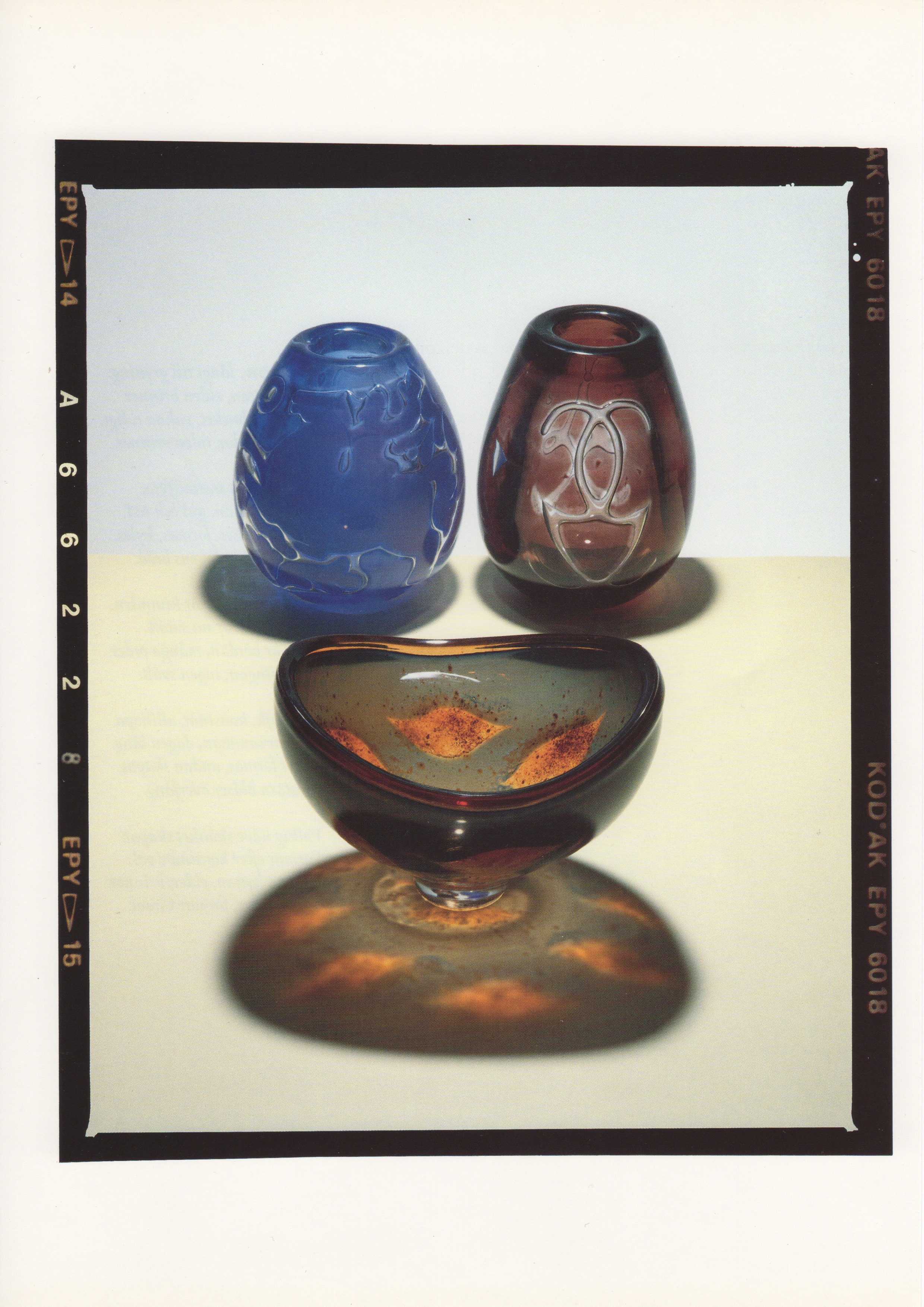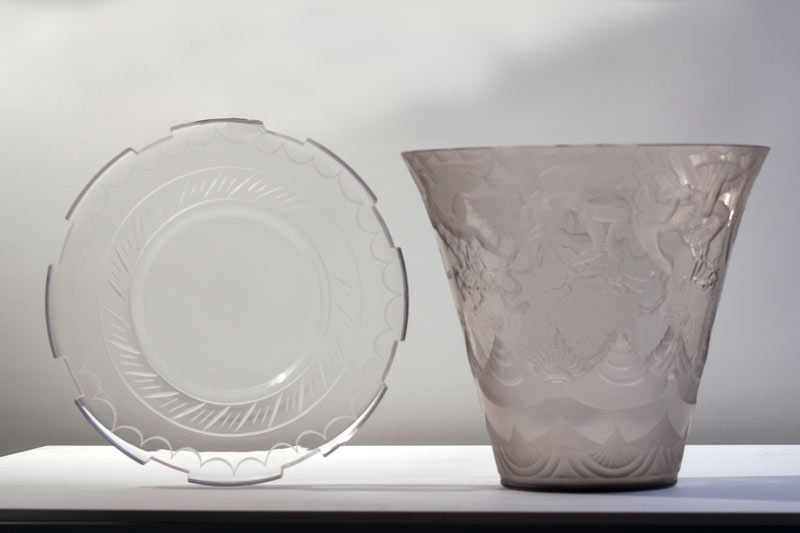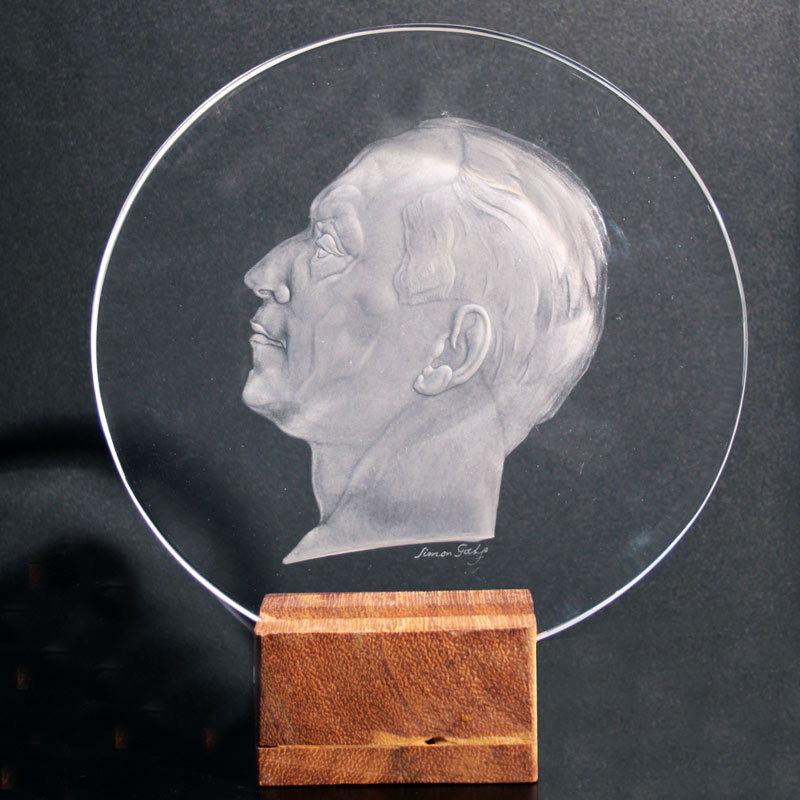THE CATALOGUE'S INTRODUCTION
C’est insensé, et si cela ne brise pas notre logique, cela provoque au moins une désagréable dissonance. Et cependant c’est cette convention arbitraire qui nous fournit, paradoxalement, notre titre, car le caractère du « Primitif » est de ne dire que l’essentiel, sans rechercher les effets de perspective, de construction, de réalisme anatomique, etc...
La Renaissance, dans sa plénitude, n’a jamais atteint l’Espagne. A part la peinture, son influence dans la pensée, l’architecture et surtout dans la sculpture est restée très limitée. Le baroque est venu, presque sans transition, succéder aux arts médiévaux. Voilà pourquoi les auteurs de cette collection, artisans, sculpteurs anonymes, bergers, religieux et religieuses, restèrent primitifs esthétiquement parlant pendent un millénaire.
On peut constater les différentes influences subies pendant ces siècles, y compris même celles de la lointaine Flandre. Mais la véritable base, la source, restera et reste la conception primitive aussi bien au sens spirituel qu’historique.
Qu’il nous soit pardonne se, pour certaines pièces, il se trouve quelque erreur dans l’appréciation de l’époque. Ave l’aide de Maria Luisa Gomez Moreno, la plus haute autorité espagnole en ce domaine que nous tenons à remercier pour son aide si précieuse, nous avons fait pour les mieux. Mais certaines pièces, notamment celles de Galice, ou, au XVIe encore, le style roman dominait toujours l’esprit de plusieurs sculpteurs, nous laissent dans l’expectative, d’autant plus qu’elles furent repeintes au cours des deux derniers siècles.
*
My father, Andres Laszlo Sr., was an avid collector. However, unlike me, he had the good sense to exhibit his collections and occasionally sell a piece or two, something I have failed miserably at, resulting in my no longer being able to afford to keep them. The pieces displayed below are all listed in the last exhibition, "1000 ans de sculpture primitive Espagnole/collection A. Laszlo," held at Galerie Jean-Francois Apesteguy in Deauville in 1969 and later in Paris.
To the best of my knowledge, this was the last time the collection was publicly displayed. I know for sure that they have been exhibited in New York, Anesi (France), and Paris, i.e., on three continents, but as it was once my father's primary source of income, there must have been many other places. There are copies of the 1969 catalog and two old catalogs. You can download the French catalog here.
In the catalog, you can find information about height, age, and where the piece was bought (i.e., not necessarily from where it originates). Below you can see slideshows of some of the most interesting pieces:
-
Saint Anne, the Virgin, and the Baby Jesus
Time has, unfortunately, had its way with this charming old sculpture. It has number "2" in the exhibition catalog" 1000 ans de sculpture primitive Espagnole/collection A. Laszlo when it was last exhibited at Galerie Jean-Francois Apesteguy, Deauville, 1969 in Paris. Images
"Christ Aux Outrages"
It could well be that this piece, which had number "3" in the 1969 catalog, has been incorrectly attributed, I believe, and many have suggested that this is an early "Virgin en Majesté". Whether or not, this exquisite old piece had number "2" in the exhibition catalog "1000 ans de sculpture primitive Espagnole/collection A. Laszlo when it was last exhibited at Galerie Jean-Francois Apesteguy, Deauville, 1969 in Paris. Images
Apostle
Okay, so it might not be totally free from blemishes, but then several of the apostles are said to have been seriously badly treated, which I hope shall make this sort of ok. This seriously hard-done-by apostle had number "7" in the exhibition catalog "1000 ans de sculpture primitive Espagnole/collection A. Laszlo when it was last exhibited at Galerie Jean-Francois Apesteguy, Deauville, 1969 in Paris. Images
Saint Martin (from tours)
This is an absolutely amazing sculpture. It's in an absolutely unbelievably good state. Of course, I cannot say that it was never, like for instance in the 15th century, restored. However, I can tell you that it looks absolutely fantastic and the horse is definitely out of this world. This rider had number "9" in the exhibition catalog "1000 ans de sculpture primitive Espagnole/collection A. Laszlo when it was last exhibited at Galerie Jean-Francois Apesteguy, Deauville, 1969 in Paris where this piece is depicted on page 8. Images
Saint Jacques Le Majeur
Saint Jaques had number "10" in the exhibition catalog "1000 ans de sculpture primitive Espagnole/collection A. Laszlo when it was last exhibited at Galerie Jean-Francois Apesteguy, Deauville, 1969 in Paris where this piece is depicted on page 8. This piece has been totally restored. Images
Gothic Christ
This sculpture, that has the number 12 (or possibly 17) in the exhibition catalog "1000 ans de sculpture primitive Espagnole/collection A. Laszlo when it was last exhibited at Galerie Jean-Francois Apesteguy, Deauville, 1969 in Paris where it was the (joint) priciest at $10,000. It is my favorite piece and to me so appealing that a line from the New Testament comes to mind: "Almost thou persuadest me to be a Christian". Images
Nativity
This sculpture, which has the number 46 in the exhibition catalog "1000 ans de sculpture primitive Espagnole/collection A. Laszlo when it was last exhibited at Galerie Jean-Francois Apesteguy, Deauville, 1969 in Paris. Images
The Three Kings
This sculpture, which has the number 47 in the exhibition catalog "1000 ans de sculpture primitive Espagnole/collection A. Laszlo when it was last exhibited at Galerie Jean-Francois Apesteguy, Deauville, 1969 in Paris. Images
St. Joseph
This sculpture, that has the number 123 in the exhibition catalog "1000 ans de sculpture primitive Espagnole/collection A. Laszlo when it was last exhibited at Galerie Jean-Francois Apesteguy, Deauville, 1969 in Paris. The painting is excellent. Images
-
Polychrome Virgin or Mary Magdalen
This sculpture, which has an early number in the exhibition catalog "1000 ans de sculpture primitive Espagnole/collection A. Laszlo when it was last exhibited at Galerie Jean-Francois Apesteguy, Deauville, 1969 in Paris. In the catalog, this has been described as St. Magdalen but others have suggested that it is the Virgin. Images
"Indian" Saint Sebastian
This sculpture, which has the number 21 in the exhibition catalog "1000 ans de sculpture primitive Espagnole/collection A. Laszlo when it was last exhibited at Galerie Jean-Francois Apesteguy, Deauville, 1969 in Paris. This Saint Sebastian is not in very good shape and made from very lightweight wood. Maybe Southamerican, despite the "Spanish" shorts... Images
14th Century Sculpture of a Saint - Gothic Wood Carved Polychrome Figure from Spain
This sculpture, which has the number 24 in the exhibition catalog "1000 ans de sculpture primitive Espagnole/collection A. Laszlo when it was last exhibited at Galerie Jean-Francois Apesteguy, Deauville, 1969 in Paris. The Handcarved Wooden Figure is a lovely depiction of a Saint. He has beautiful long hair, so maybe it is actually a Madonna. It is beautifully carved and has a beautiful Patina. He is a typical example of Spanish Gothic Sculptures and dates back to circa 1320-1380. The figure was most likely carved in Catalonia in Spain. About 50 years ago - when this sculpture was displayed amongst the former owner's gallery exhibits - the late Spanish Art History Specialist Maria Luisa Gomez Moreno validated it. Images
Superb 15th Century Sculpture of St. Sebastian - Gothic Wood Carved Polychrome Figure of Martyr Sebastian from Catalonia
This sculpture, which has the number 19 in the exhibition catalog "1000 ans de sculpture primitive Espagnole/collection A. Laszlo when it was last exhibited at Galerie Jean-Francois Apesteguy, Deauville, 1969 in Paris. The Handcarved Wooden Figure is a superb depiction of Saint Sebastian. As most often he is shown standing constrained on a tree with his hands tied behind his back while wearing only a small cloth around his hip. He has beautiful long golden hair and has been carved out of a single piece of hardwood. While the Carving is conducted magnificently, his Polychrome finish is simply stunning. The figure is a typical example of French / Spanish Gothic Sculptures with an early Italian Renaissance influence. The sculpture dates back to circa 1420-1470. The figure was most likely carved in Southern France or Catalonia. About 50 years ago - when this sculpture was displayed amongst the former owner's gallery exhibits - the late Spanish Art History Specialist Maria Luisa Gomez Moreno validated the Sebastian (this is one of the most attractive pieces of the collection but unfortunately the photos don't do it justice). Images
Arch Angel (St. Raphael?)
This sculpture, which has the number 24? in the exhibition catalog "1000 ans de sculpture primitive Espagnole/collection A. Laszlo when it was last exhibited at Galerie Jean-Francois Apesteguy, Deauville, 1969 in Paris. This "St. Michael" is hard to describe: its composition is excellent, and it comes across as quite dark. Images
Old Huge Virgin/Grande Virgen Vieja
This sculpture, which has the number 19 in the exhibition catalog "1000 ans de sculpture primitive Espagnole/collection A. Laszlo when it was last exhibited at Galerie Jean-Francois Apesteguy, Deauville, 1969 in Paris. This polychrome "Virgin and Child" is the oldest polychrome (well, traces of paint can be found on older). Images
Saint Vincent
This sculpture, which has the number 32 in the exhibition catalog "1000 ans de sculpture primitive Espagnole/collection A. Laszlo when it was last exhibited at Galerie Jean-Francois Apesteguy, Deauville, 1969 in Paris. One of my favorites. Images
18th Century Sculpture of Bishop - Wood Carved Polychrome Baroque Figure from Spain / Italy
This sculpture, which has the number 91 in the exhibition catalog "1000 ans de sculpture primitive Espagnole/collection A. Laszlo when it was last exhibited at Galerie Jean-Francois Apesteguy, Deauville, 1969 in Paris. The Handcarved Wooden Figure is a beautiful depiction of a Bishop. Most likely St. Blaise or St. Nicholas is holding an episcopal crozier in his one hand. He is beautifully carved, has striking glass eyes and a stunning Polychrome finish. A very typical representation of Spanish / Italian High Baroque sculptures dating to the first half of the 18th Century. The figure was most likely carved in Spain or Italy. About 50 years ago - when this sculpture was displayed amongst the former owners' gallery exhibits - the late Spanish Art History Specialist Maria Luisa Gomez Moreno validated it. Images
15th Century Sculpture of Virgin Annunciate - Renaissance Wood Carved Polychrome Figure of Mary / Madonna from Spain
This sculpture, which has the number 22 in the exhibition catalog "1000 ans de sculpture primitive Espagnole/collection A. Laszlo when it was last exhibited at Galerie Jean-Francois Apesteguy, Deauville, 1969 in Paris. The Handcarved Wooden Figure is a lovely depiction of Madonna - Jesus' Mother - during the Annunciation to the Blessed Virgin Mary. She wears the typical red and blue clothes while the ark angel Gabriel announces to her that she would conceive and become the mother of Jesus, the Son of God. Mary has a surprised look on her face and holds her right hand on her chest. She is beautifully carved and has a stunning Polychrome finish. She is a typical example of Spanish Naive Renaissance Sculptures with late Gothic influences and dated back to circa 1430-1490. The figure was most likely carved in Castile in Spain. About 50 years ago - when this sculpture was displayed amongst the former owner's gallery exhibits - the late Spanish Art History Specialist Maria Luisa Gomez Moreno validated the Virgin. Images
Rare 18th Century Sculpture of Moses - Wood Carved Polychrome Baroque Figure from Spain
This sculpture, which has the number 73 in the exhibition catalog "1000 ans de sculpture primitive Espagnole/collection A. Laszlo when it was last exhibited at Galerie Jean-Francois Apesteguy, Deauville, 1969 in Paris. The Handcarved Wooden Figure is a very rare iconographic depiction of Moses - the famous leader and lawgiver of the Old Testament. The Recipient of the Ten Commandments sits on a throne with one of the stone tablets to his right. He is beautifully carved, has striking glass eyes and a stunning Polychrome finish. A very typical representation of Spanish Baroque sculptures (wide Italian influence) dating to the first half of the 18th Century. The figure was most likely carved in Old Castile in Spain. About 50 years ago - when this sculpture was displayed amongst the former owner's gallery exhibits - the late Spanish Art History Specialist Maria Luisa Gomez Moreno validated "Moses". Images
-
17th Century Sculpture of Saint Anthony of Padua - Wood Carved Polychrome Folk Art Figure from Spain
This sculpture, which has the number 55 in the exhibition catalog "1000 ans de sculpture primitive Espagnole/collection A. Laszlo when it was last exhibited at Galerie Jean-Francois Apesteguy, Deauville, 1969 in Paris. The Handcarved Wooden Figure is a typical Spanish Folk Art depiction of Saint Anthony of Padua / Anthony of Lisbon. While holding a stick in his right hand Antonio is holding a Bible and the Christ Child in his right hand. Both figures are beautifully carved and have a stunning Polychrome finish. A very typical representation of Spanish Folk Art sculptures dating to circa 1620-1660. The figure was most likely carved in Nothern Spain. About 50 years ago - when this sculpture was displayed amongst the former owner's gallery exhibits - the late Spanish Art History Specialist Maria Luisa Gomez Moreno validated the Statue. Images
19th Century Sculpture of Saint Roch / Rock - Wood Carved Polychrome Folk Art Figure of St Rocco from Spain
This sculpture, which has the number 126 in the exhibition catalog "1000 ans de sculpture primitive Espagnole/collection A. Laszlo when it was last exhibited at Galerie Jean-Francois Apesteguy, Deauville, 1969 in Paris. The Handcarved Wooden Figure is a typical Spanish Folk Art depiction of Saint Roch. While wearing the traditional clothes and stick of a Pilgrim, Roch's thigh is wounded. The wound stands for the Saints plague wound and the dog to his side came to him to supply him with bread and lick his wounds. Both figures are beautifully carved and have a stunning Polychrome finish. A very typical representation of Spanish Folk Art sculptures dating to circa 1820-1860. The figure was most likely carved in Central Spain. About 50 years ago - when this sculpture was displayed amongst the former owner's gallery exhibits - the late Spanish Art History Specialist Maria Luisa Gomez Moreno validated the Statue. Images
Gold/Blue Joseph and the Child
This sculpture, which has the number 93 in the exhibition catalog "1000 ans de sculpture primitive Espagnole/collection A. Laszlo when it was last exhibited at Galerie Jean-Francois Apesteguy, Deauville, 1969 in Paris. Images
Crucifixion Group
This sculpture, which has the number 95-96 in the exhibition catalog "1000 ans de sculpture primitive Espagnole/collection A. Laszlo when it was last exhibited at Galerie Jean-Francois Apesteguy, Deauville, 1969 in Paris. Christ on the cross, The Virgin and Mary Magdalen mourning, together with two angels. Images
18th Century Sculpture of St. Joseph with Jesus Child - Wood Carved Polychrome Baroque Figure from Spain
This sculpture, which has a late number in the exhibition catalog "1000 ans de sculpture primitive Espagnole/collection A. Laszlo when it was last exhibited at Galerie Jean-Francois Apesteguy, Deauville, 1969 in Paris. The Handcarved Wooden Figure is a typical Naive Spanish baroque depiction of Jesus' foster father with the Infant Jesus. While holding a stick in his right hand Joseph is holding the Christ Child in his left hand. Both figures are beautifully carved and have a nice Polychrome finish. A very typical representation of Spanish Naive Baroque sculptures dating to circa 1730-1770. The figure was most likely carved in Galicia, Spain. About 50 years ago - when this sculpture was displayed amongst the former owner's gallery exhibits - the late Spanish Art History Specialist Maria Luisa Gomez Moreno validated the Statue. Images
18th Century Sculpture of The Crowned Virgin - Wood Carved Polychrome Baroque Figure of Madonna and Jesus Child from Spain
This sculpture, which has a late number in the exhibition catalog "1000 ans de sculpture primitive Espagnole/collection A. Laszlo when it was last exhibited at Galerie Jean-Francois Apesteguy, Deauville, 1969 in Paris. The Handcarved Wooden Figure is a typical Spanish depiction of Mary with the Infant Jesus. While two Angels are kneeling in front of her she is holding the Christ Child in her arm and a scepter in her other hand. She is beautifully carved and has a stunning Polychrome finish. A very typical representation of Spanish Baroque sculptures dating to circa 1720-1760. The figure was most likely carved in Navarra in the North of Spain. About 50 years ago - when this sculpture was displayed amongst the former owner's gallery exhibits - the late Spanish Art History Specialist Maria Luisa Gomez Moreno validated "The Crowned Virgin". Images
17th - 18th Century Sculpture of St. Joseph with Jesus Child - Wood Carved Polychrome Baroque Figure from Spain
This sculpture, which has a late number in the exhibition catalog "1000 ans de sculpture primitive Espagnole/collection A. Laszlo when it was last exhibited at Galerie Jean-Francois Apesteguy, Deauville, 1969 in Paris. The Handcarved Wooden Figure is a typical Spanish baroque depiction of Jesus' foster father with the Infant Jesus. While holding a stick in his left hand Joseph is holding his right-hand shielding above the Christ Child who is standing to his right side. Both figures are beautifully carved and have a stunning Polychrome finish. A very typical representation of Spanish Naive Baroque sculptures dating to circa 1660-1730. The figure was most likely carved in Central Spain but could be from South America as well since there was an extensive trade between South America and Spain during Baroque times and the statues carved in the colonies were almost identical to the Spanish. About 50 years ago - when this sculpture was displayed amongst the former owner's gallery exhibits - the late Spanish Art History Specialist Maria Luisa Gomez Moreno validated the Statue. Images
18th Century Sculpture of Saint Roch / Rock - Wood Carved Polychrome Folk Art Figure of St Rocco from Spain
This sculpture, which has the number 112 in the exhibition catalog "1000 ans de sculpture primitive Espagnole/collection A. Laszlo when it was last exhibited at Galerie Jean-Francois Apesteguy, Deauville, 1969 in Paris. The Handcarved Wooden Figure is a typical Spanish Folk Art depiction of Saint Roch. While wearing the traditional clothes and stick of a Pilgrim, Roccos points to his thigh. Even though it doesn't show his typical wound (due to a restoration of the polychrome finish) it stands for the Saints plague wound and the dog in front of him came to supply him with bread and lick his wounds. Both figures are beautifully carved and have a bold Polychrome finish. A very typical representation of Spanish Folk Art sculptures dating to circa 1730-1760. The figure was most likely carved in Galicia Spain. About 50 years ago - when this sculpture was displayed amongst the former owner's gallery exhibits - the late Spanish Art History Specialist Maria Luisa Gomez Moreno validated the Statue. Images
14th Century Sculpture of St. Jacob / James the Great - Gothic Wood Carved Polychrome Figure of Santiago de Compostela from Spain
This sculpture, which has the number 15 in the exhibition catalog "1000 ans de sculpture primitive Espagnole/collection A. Laszlo when it was last exhibited at Galerie Jean-Francois Apesteguy, Deauville, 1969 in Paris. The Handcarved Wooden Figure is a lovely depiction of Spains National Saint - Santiago de Compostela or St. Jacob / James the Great. He is holding a bible in his right hand and wears the typical Pilgrims Cloak. He is beautifully carved and has some remains of a stunning Polychrome finish. He is a typical example of Spanish Gothic Sculptures and dates back to circa 1330-1390. The figure was most likely carved in Old Castile in Spain and had most likely once a pilgrim's staff. About 50 years ago - when this sculpture was displayed amongst the former owner's gallery exhibits - the late Spanish Art History Specialist Maria Luisa Gomez Moreno validated it. Images






